.png)
.png)
(Photographic Art of Interferences).
.png)
(Water Drops and Interference).
.png)
(Photographic Art of Interferences).
.png)
(River photography).
.png)
(Art Photographique d' Interférences).
.png)
THE RIVER BECOMES A PAINTER
Technique invented in 2016.
Became part of the Historical Collection of the
Société Française de Photographie ( Paris ) in 2020.
2020.
.jpg)
(River photography).
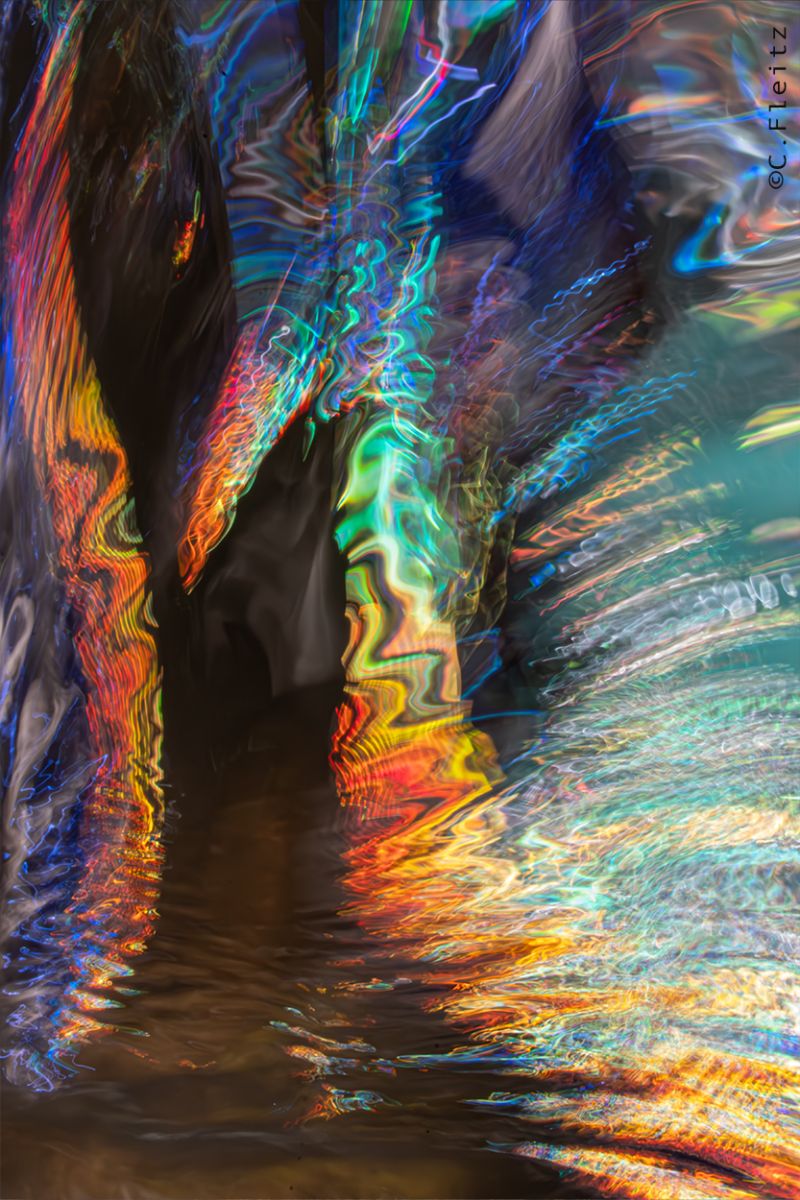
(River photography).
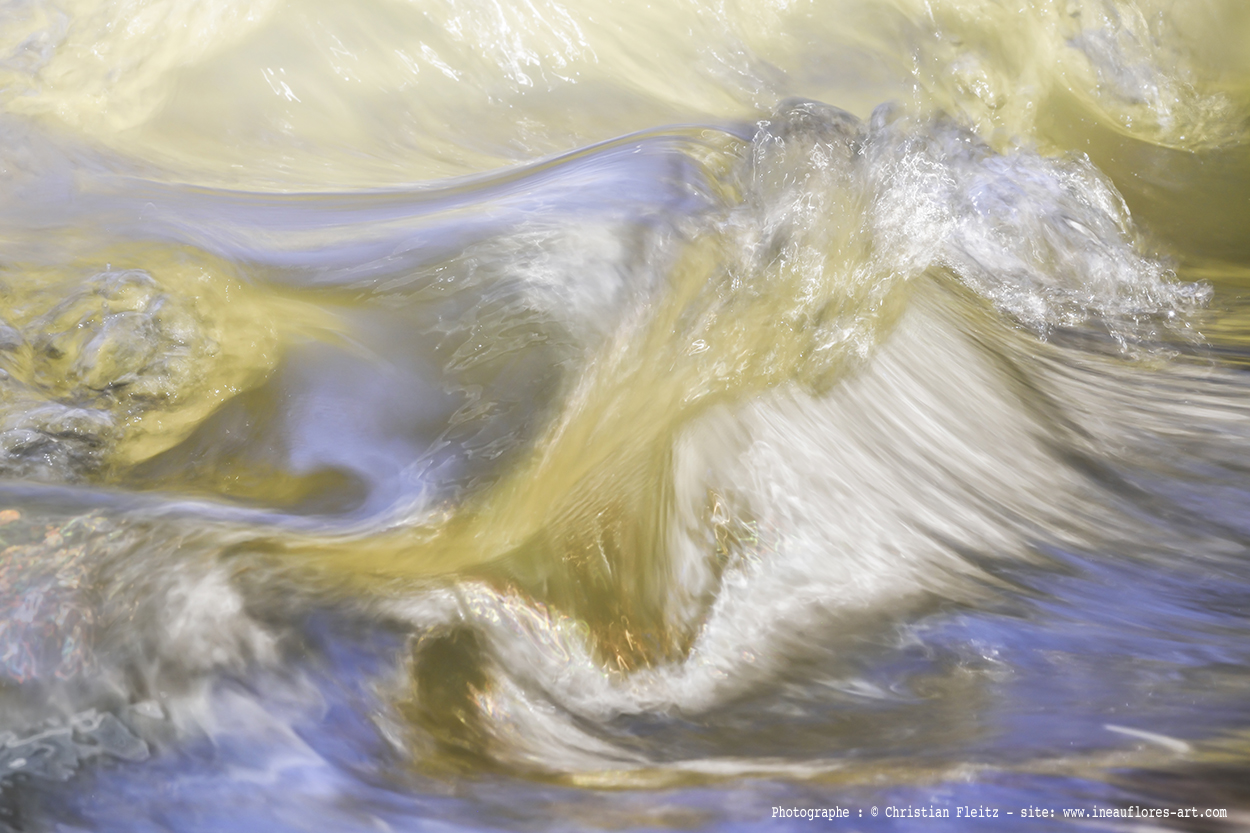
(River photography).
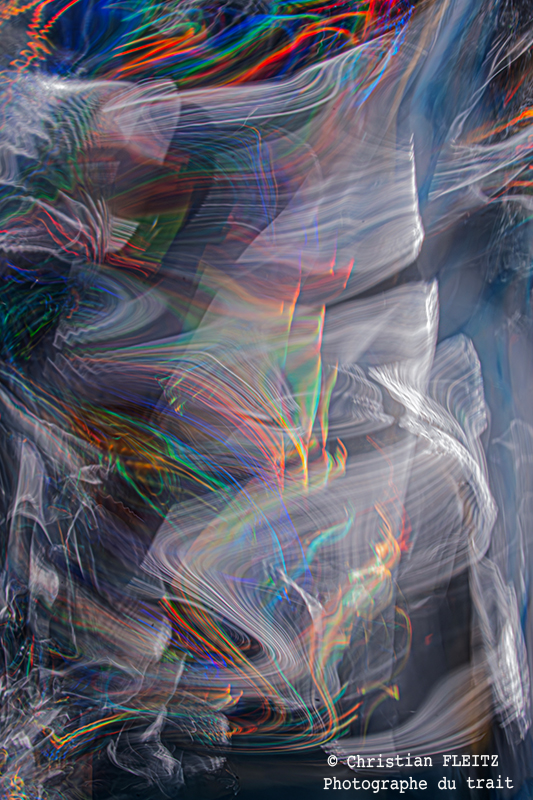
(River photography).
.jpg)
(River photography).
.jpg)
(River photography).
.jpg)
(River photography).

(River photography).
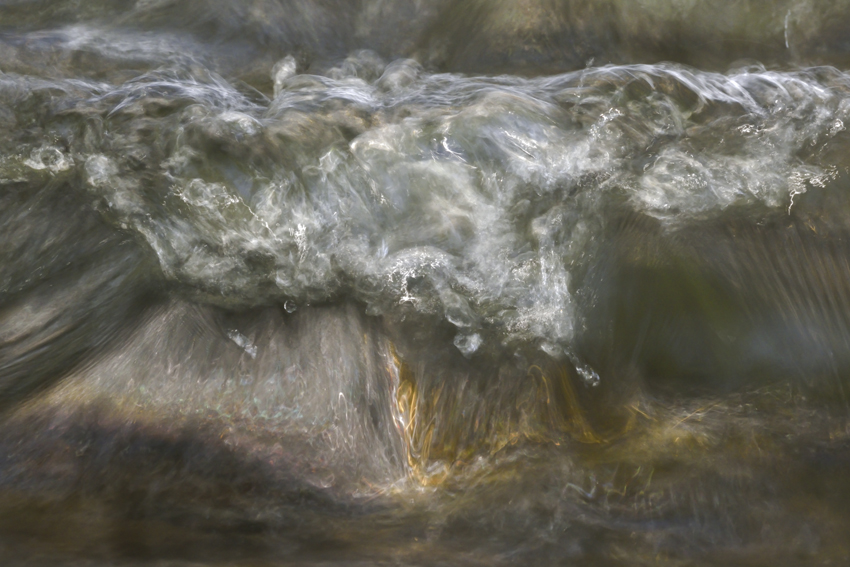
(River photography).
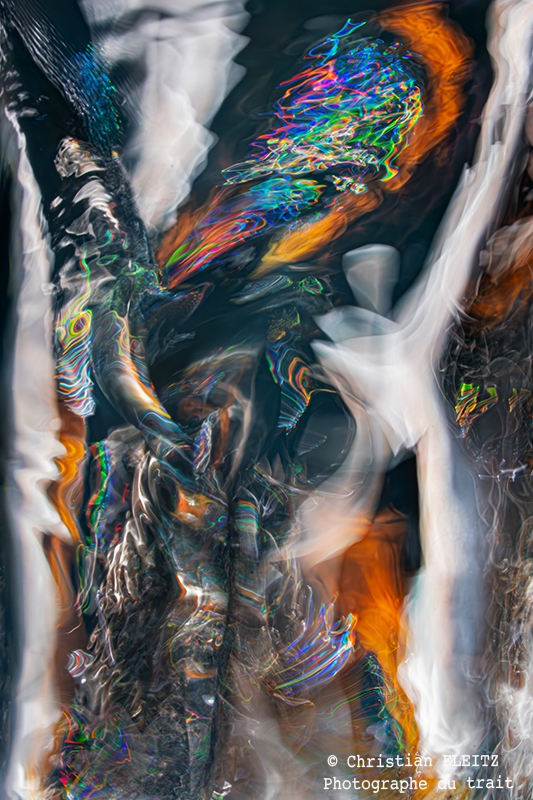
(River photography).
.png)
Technique invented in 2016.
Became part of the Historical Collection of the
Société Française de Photographie in 2020.
2020.
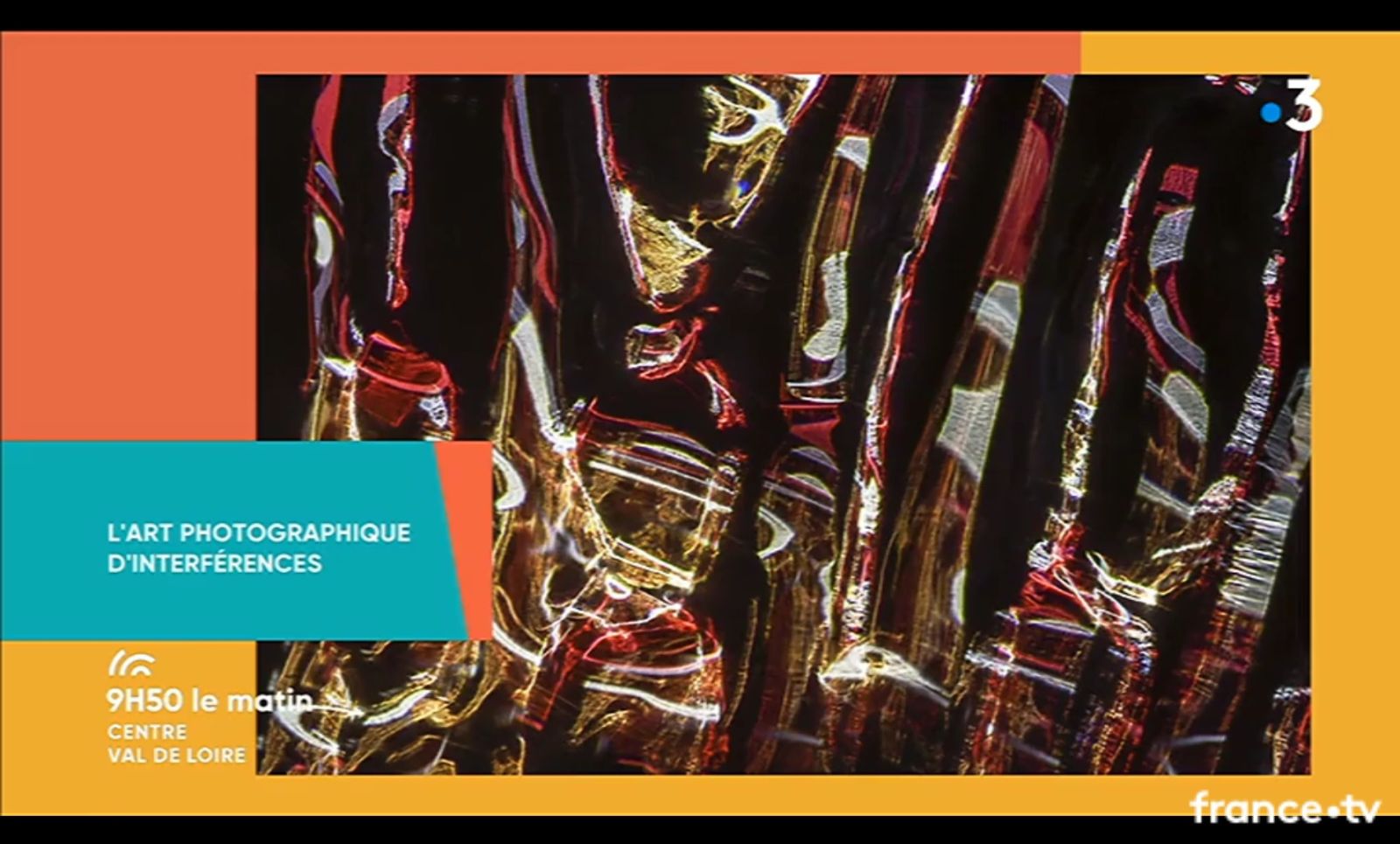
(Photographic Art of Interferences).
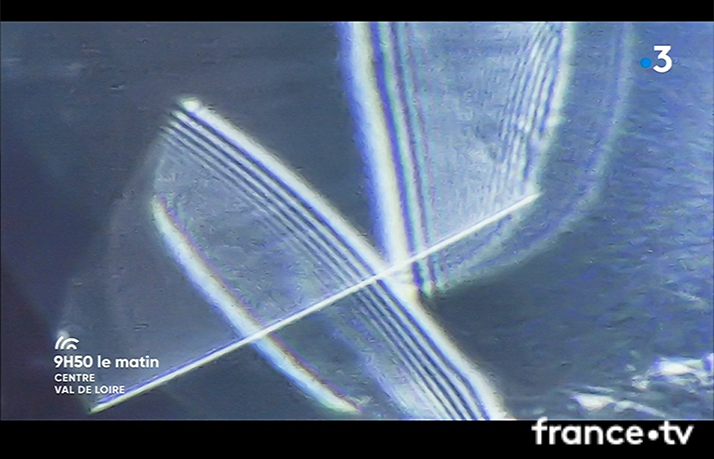
(Photographic Art of Interferences).
THE FIRST "INTERFERENTIAL FLOWER".
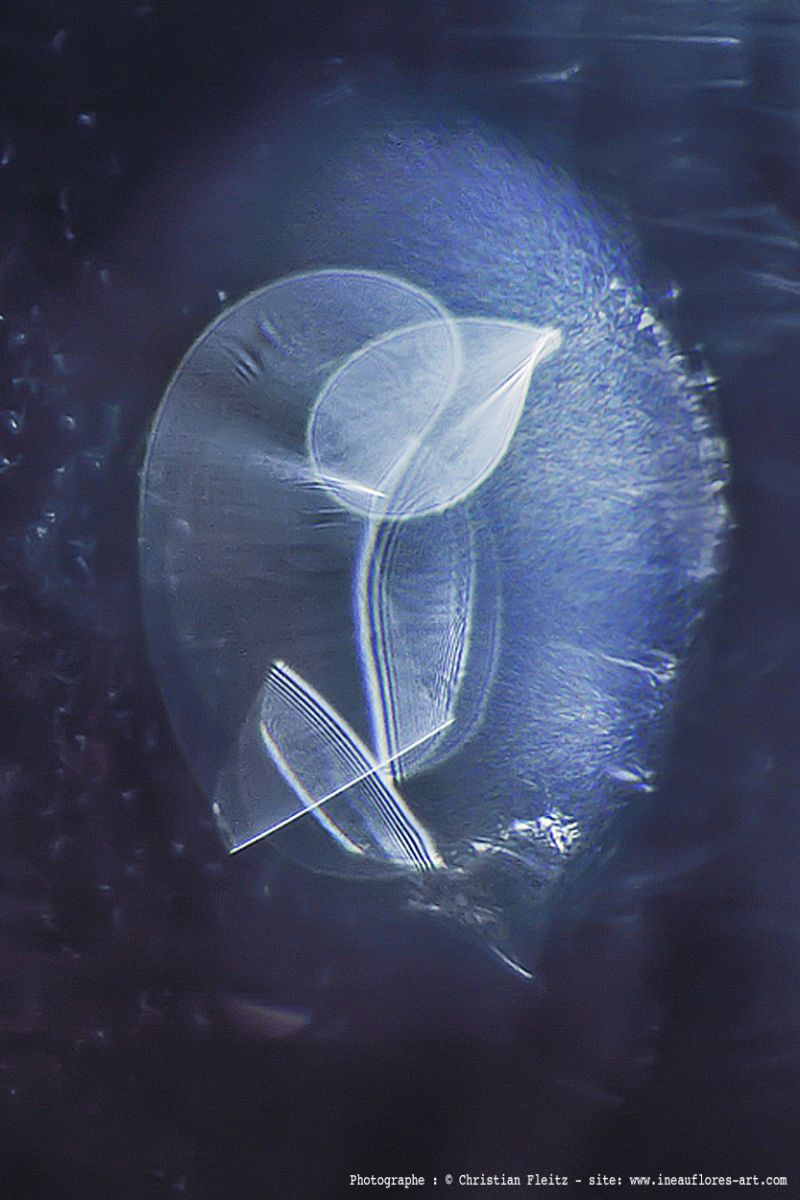
(Photographic Art of Interferences).
.jpg)
(Photographic Art of Interferences).
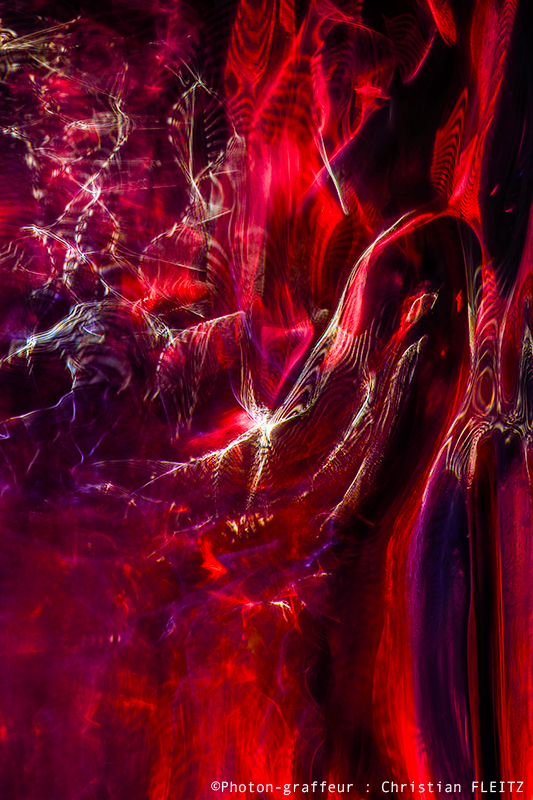
(Photographic Art of Interferences).
.jpg)
(Photographic Art of Interferences).
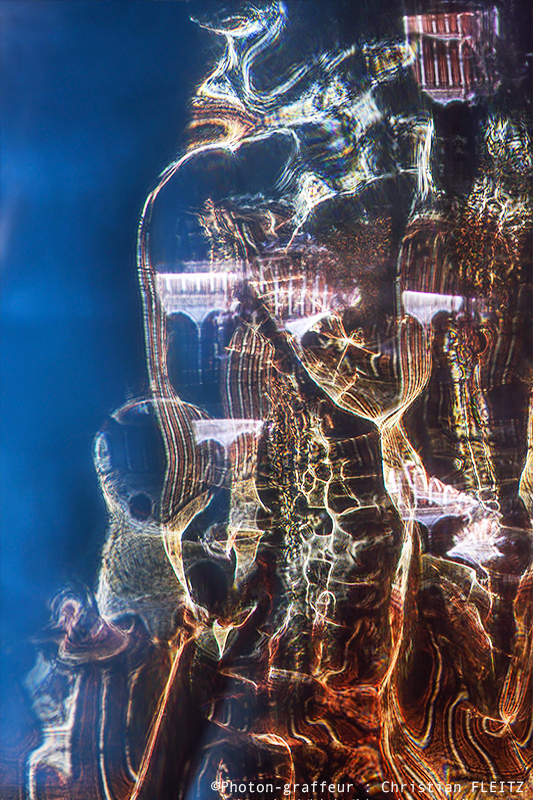
(Photographic Art of Interferences).
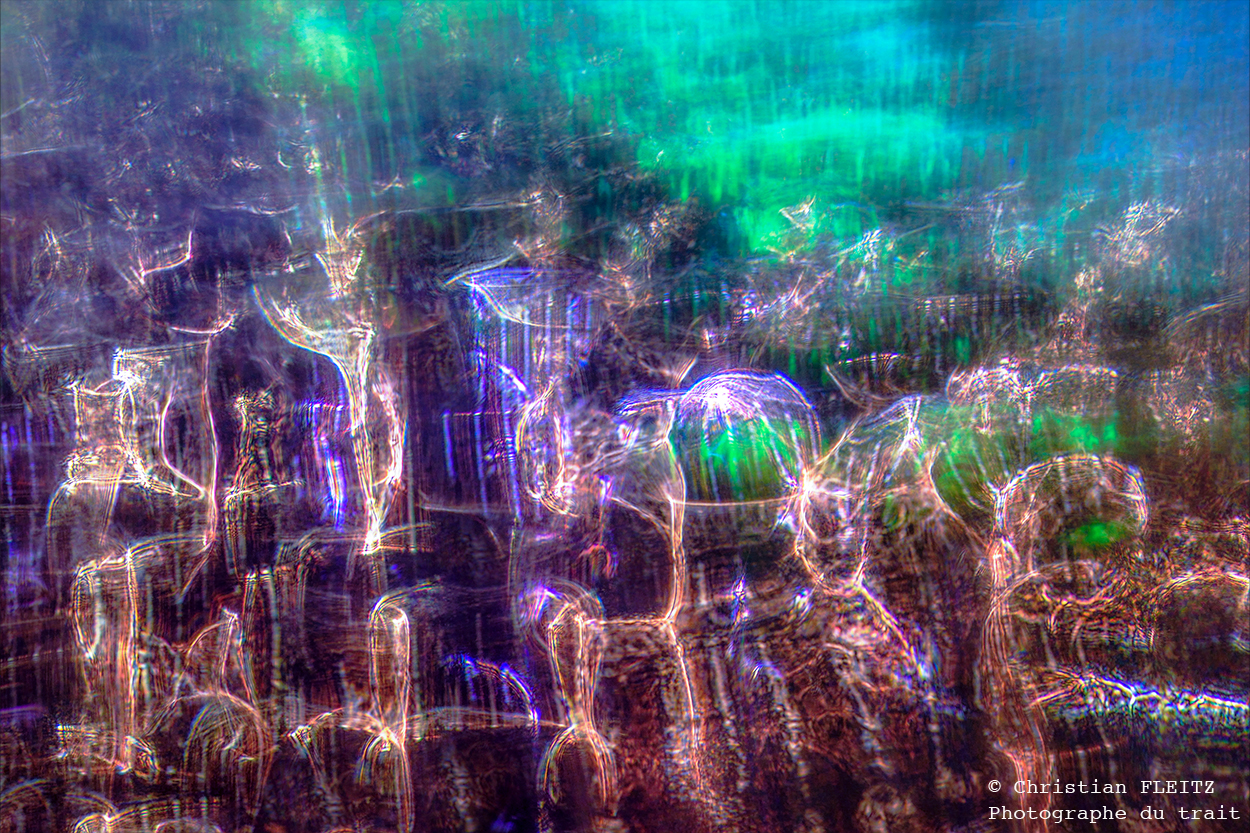
(Photographic Art of Interferences).
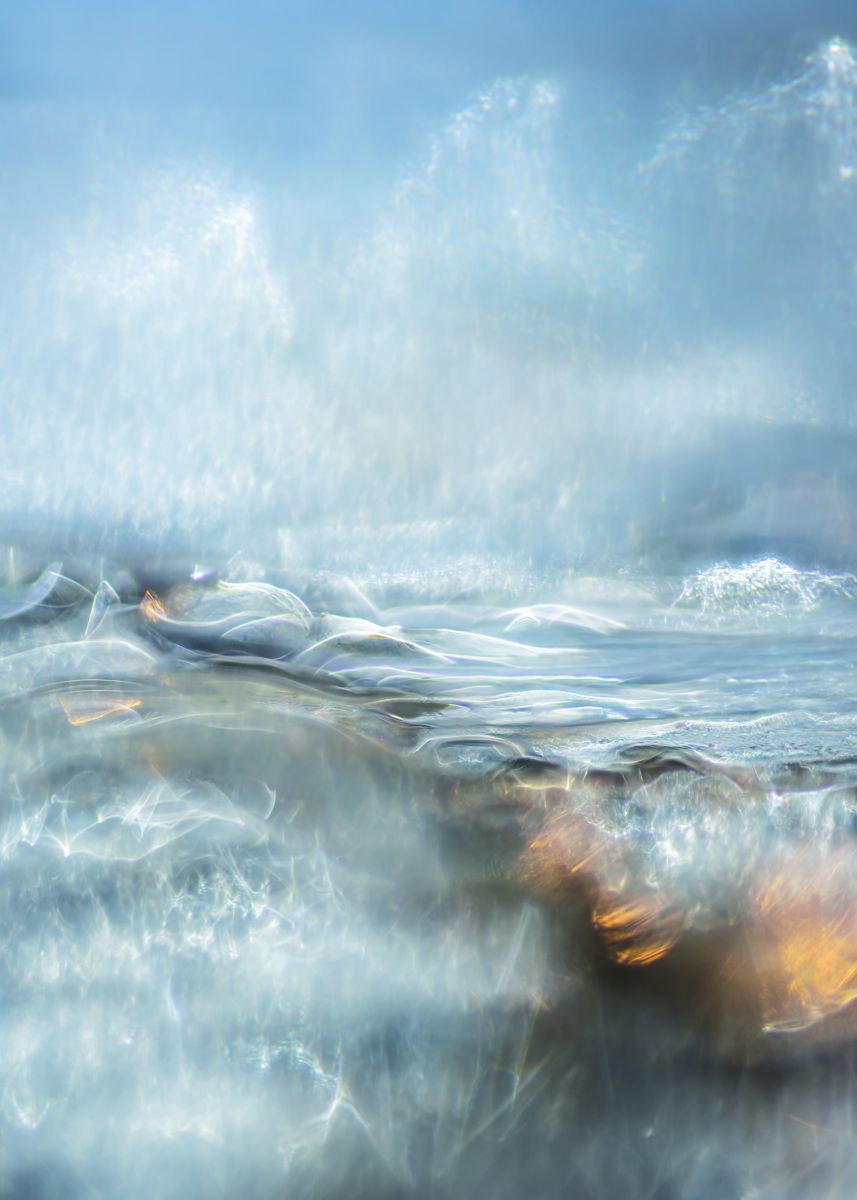
(Photographic Art of Interferences).
.png)
IMAGINARY CITIES
An imaginary city composed of interferences
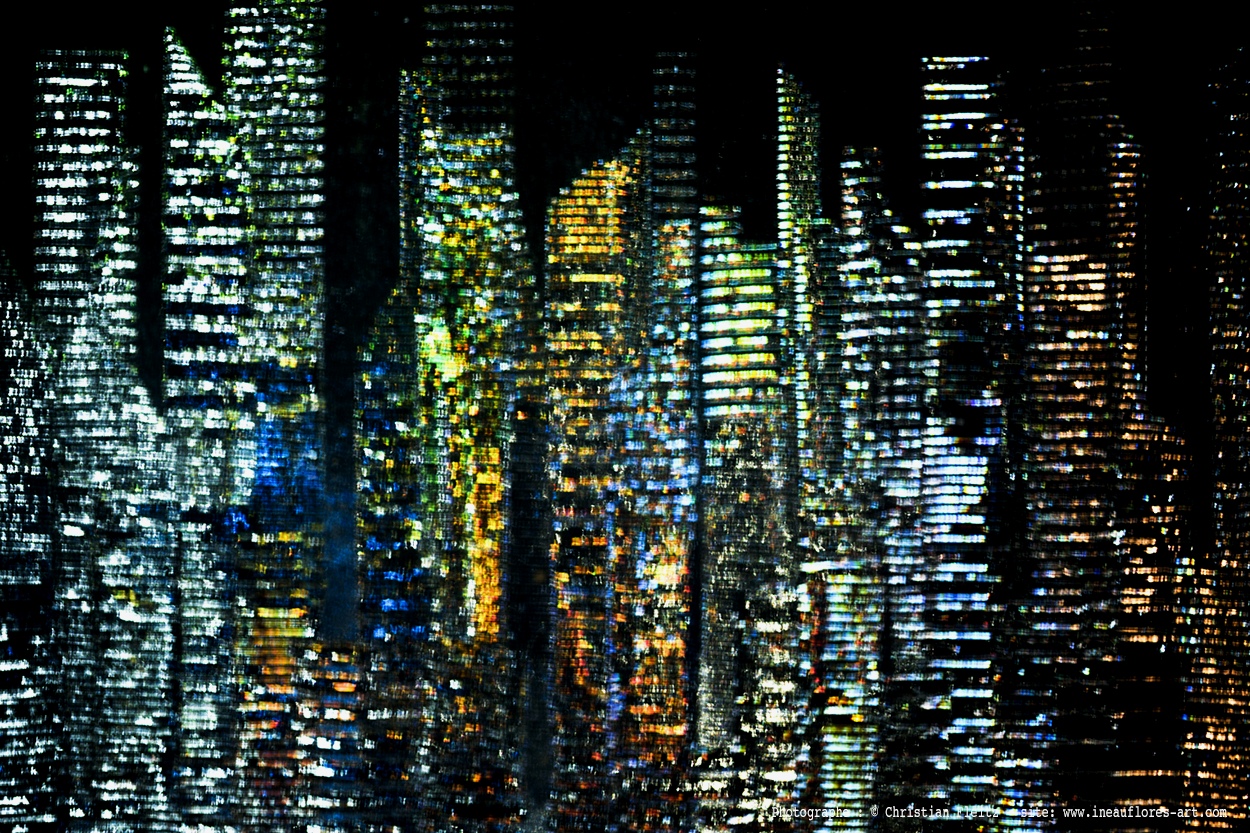
(Photographic Art of Interferences).
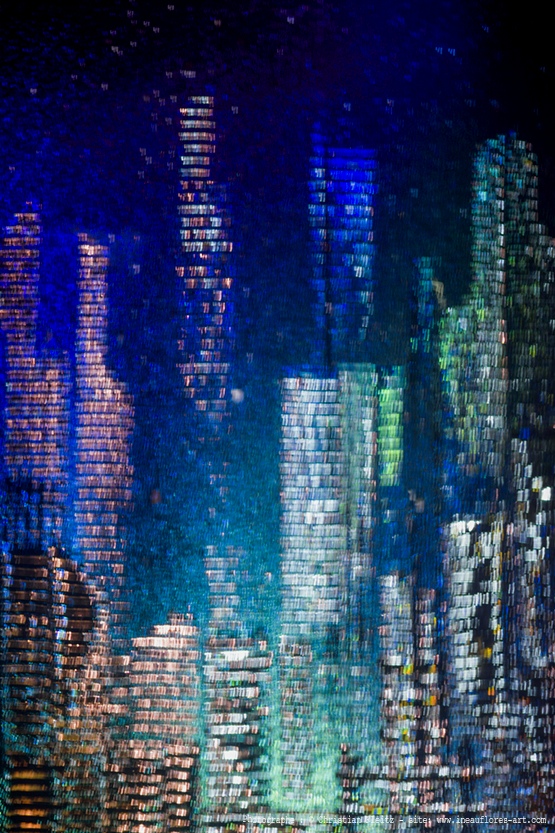
(Photographic Art of Interferences).
.jpg)
(Photographic Art of Interferences).
IMAGINARY PLANETS
(a technique currently being developed using Photographic Interference Art).
Below, a real photograph of a planet that never existed.
.jpg)
(Photographic Art of Interferences).
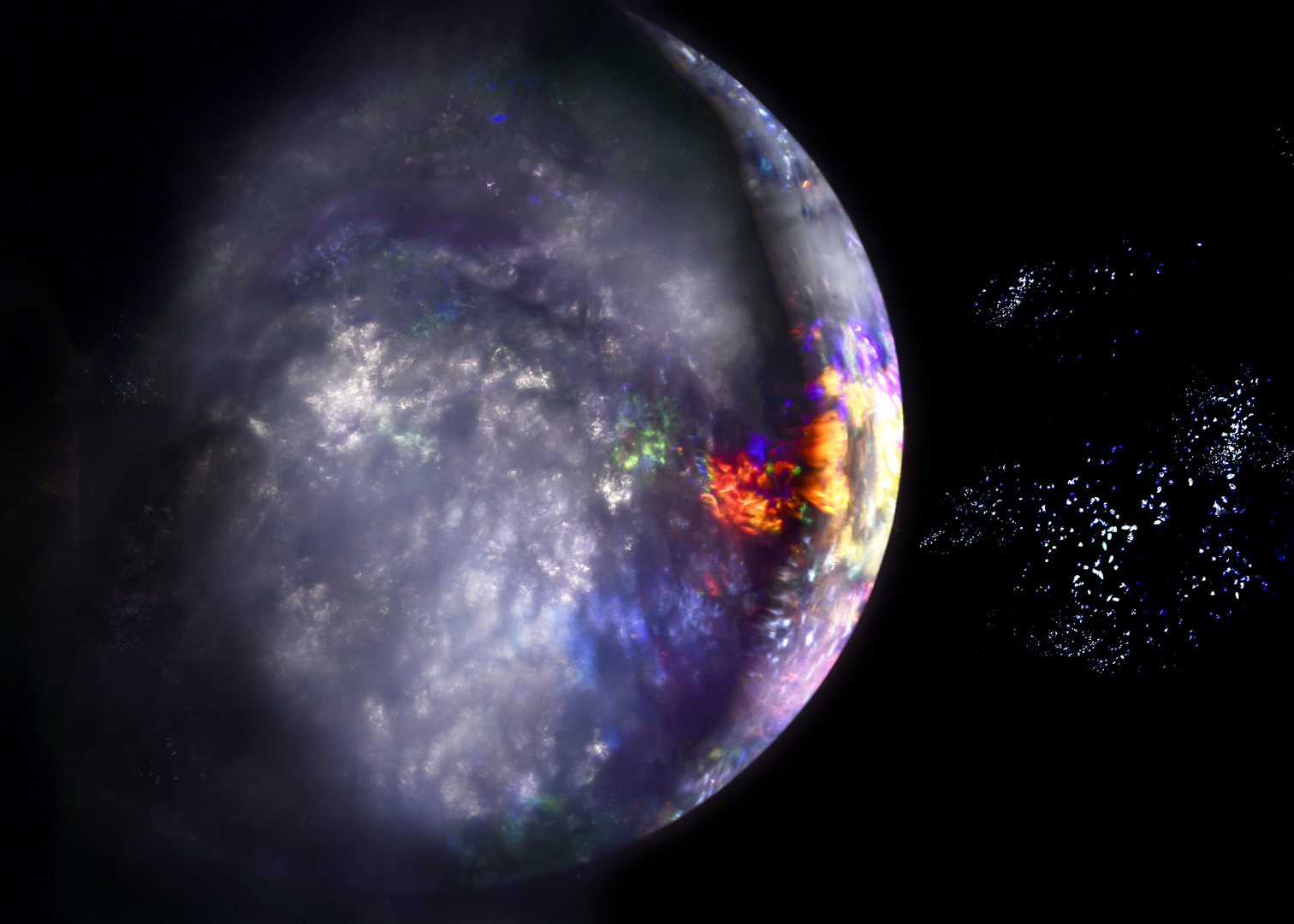
(Photographic Art of Interferences).
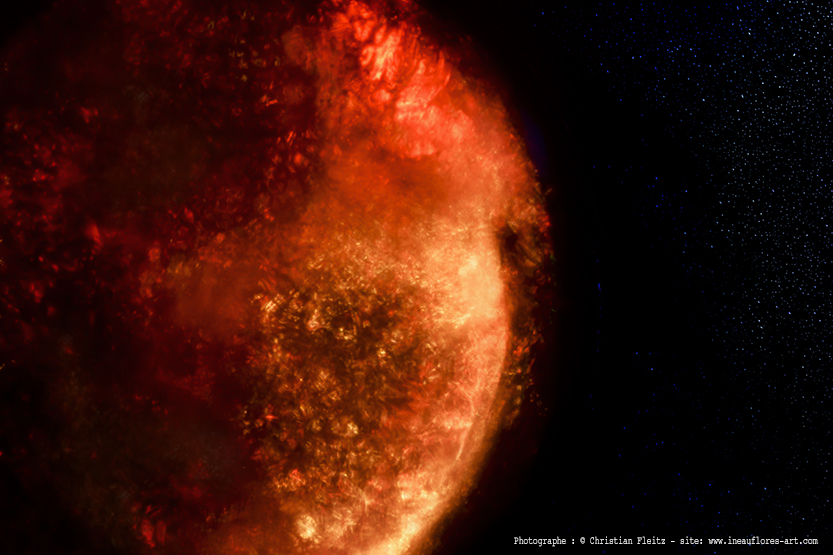
(Photographic Art of Interferences).
That's the magic of mastering light interference!
.png)
A technique derived from
Photographic Art of Interference.
. .
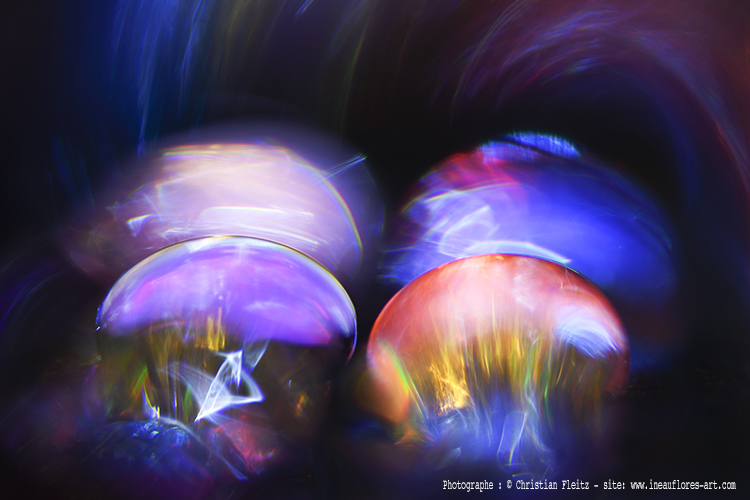
(Water Drops and Interference).
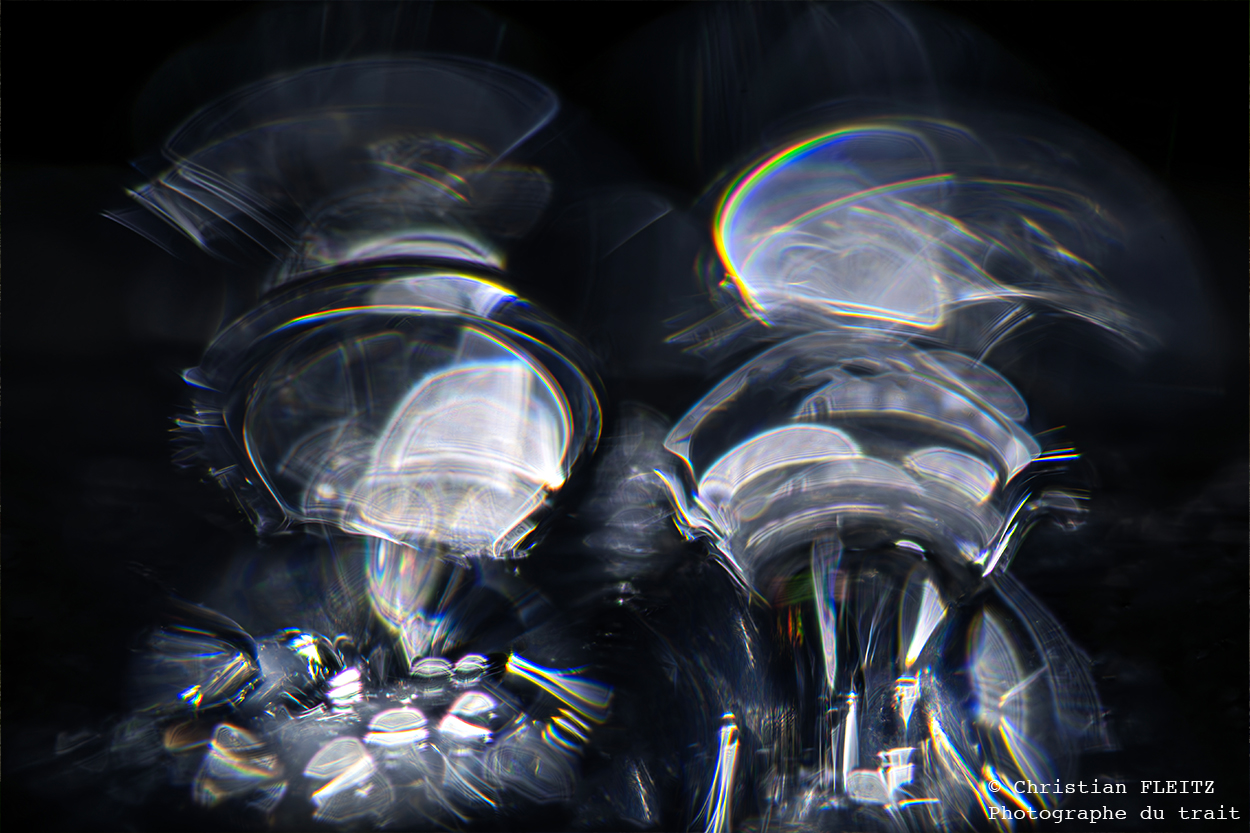
(Water Drops and Interference).
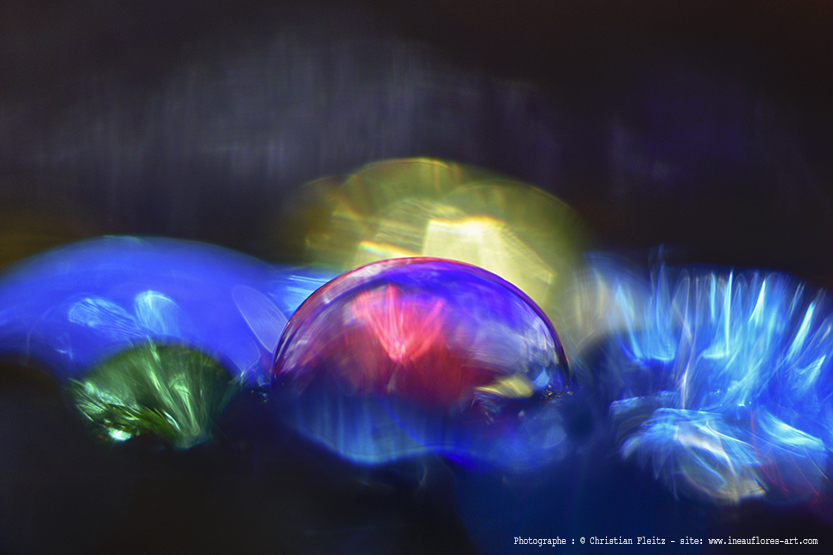
(Water Drops and Interference).
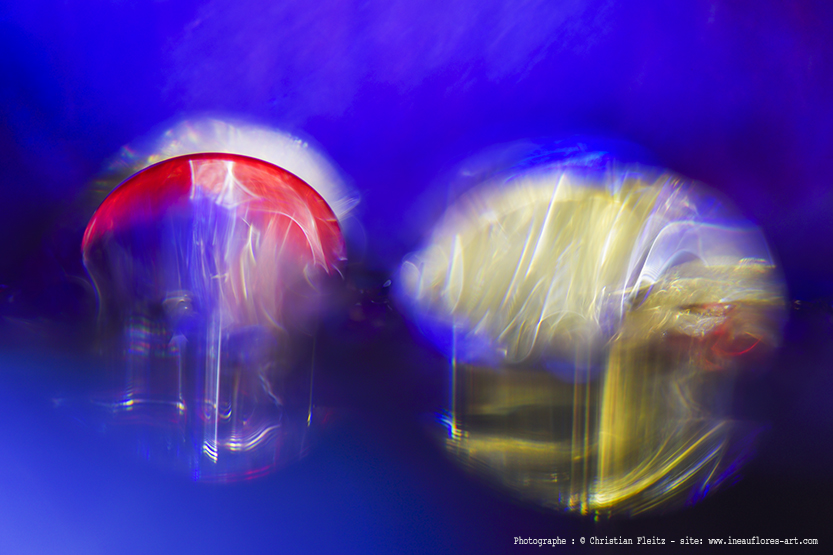
(Water Drops and Interference).
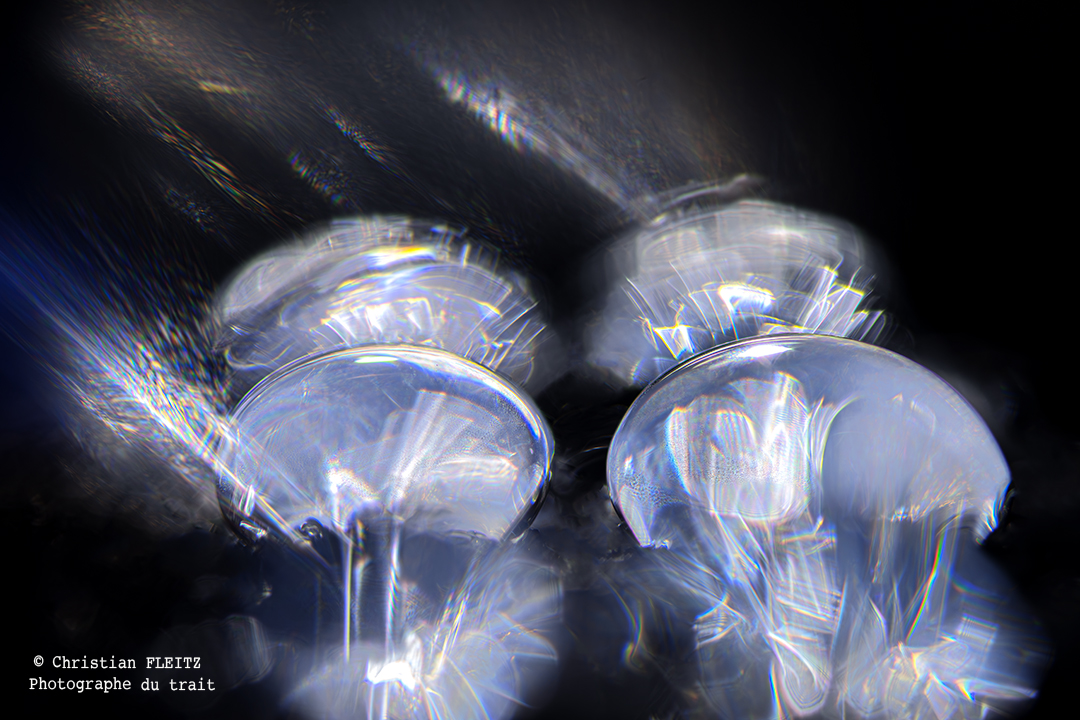
(Water Drops and Interference).
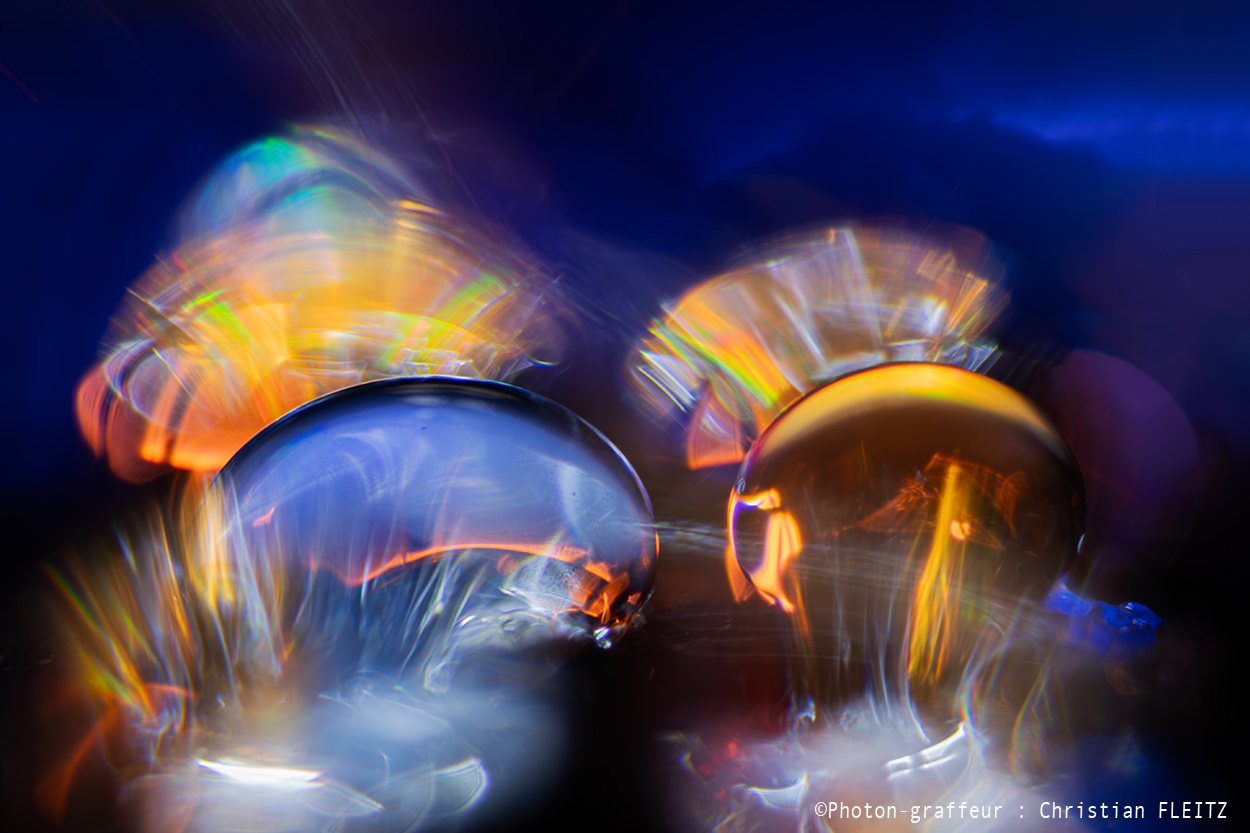
(Water Drops and Interference).
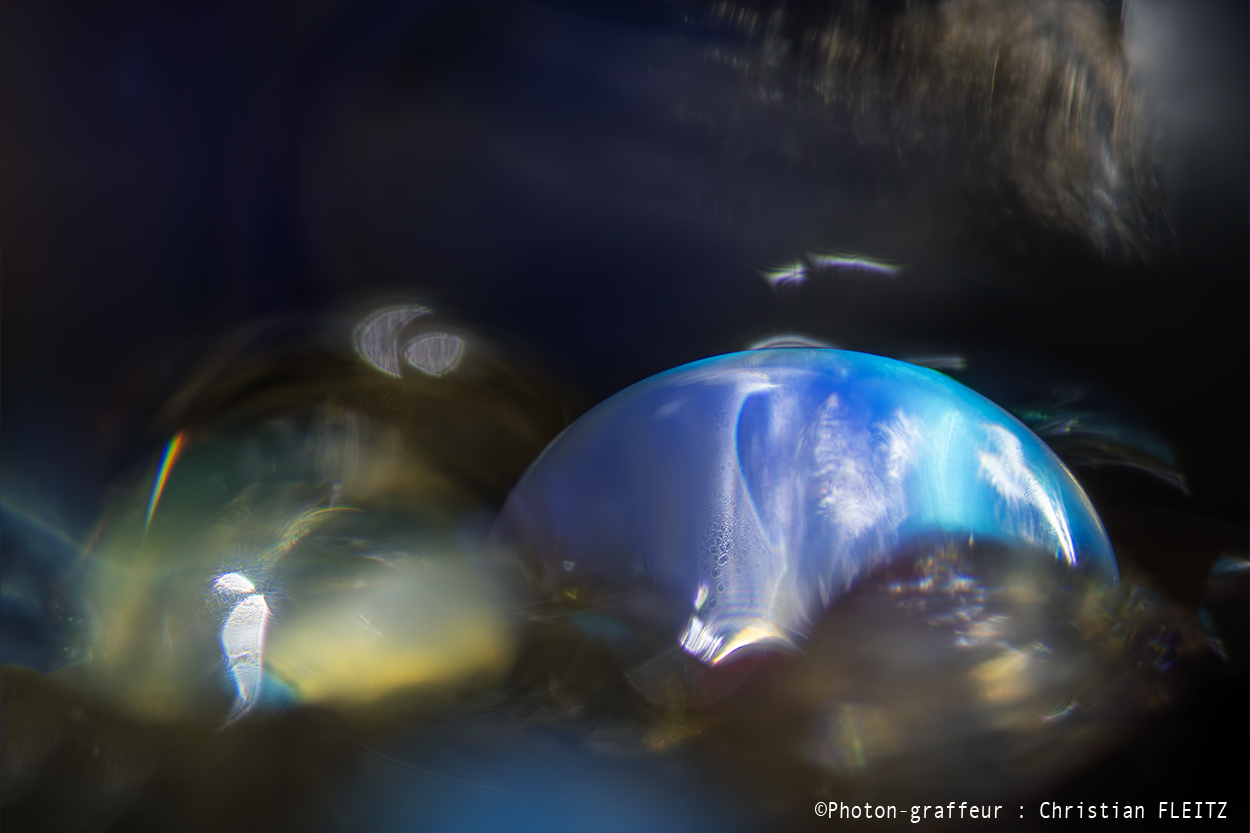
(Water Drops and Interference).
.jpg)
(Water Drops and Interference).
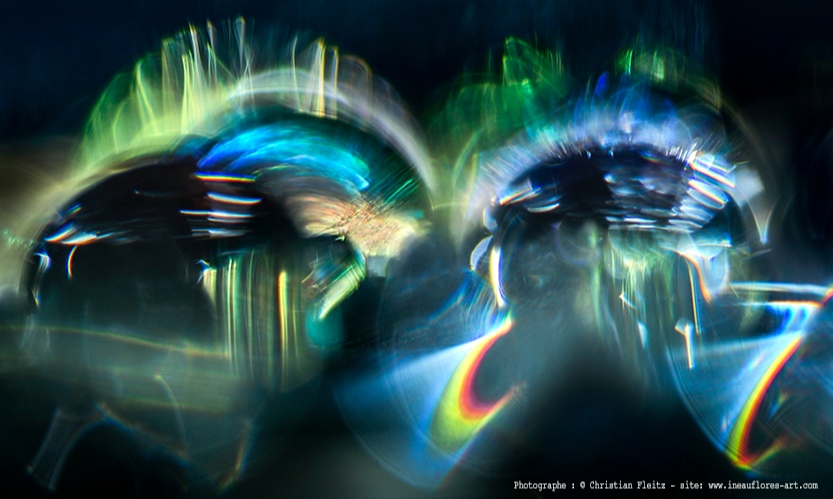
(Water Drops and Interference).
.png)
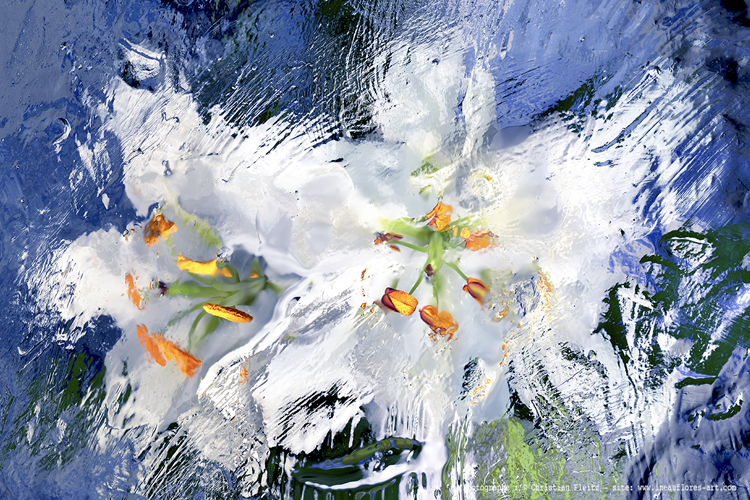
The “ineauflores”
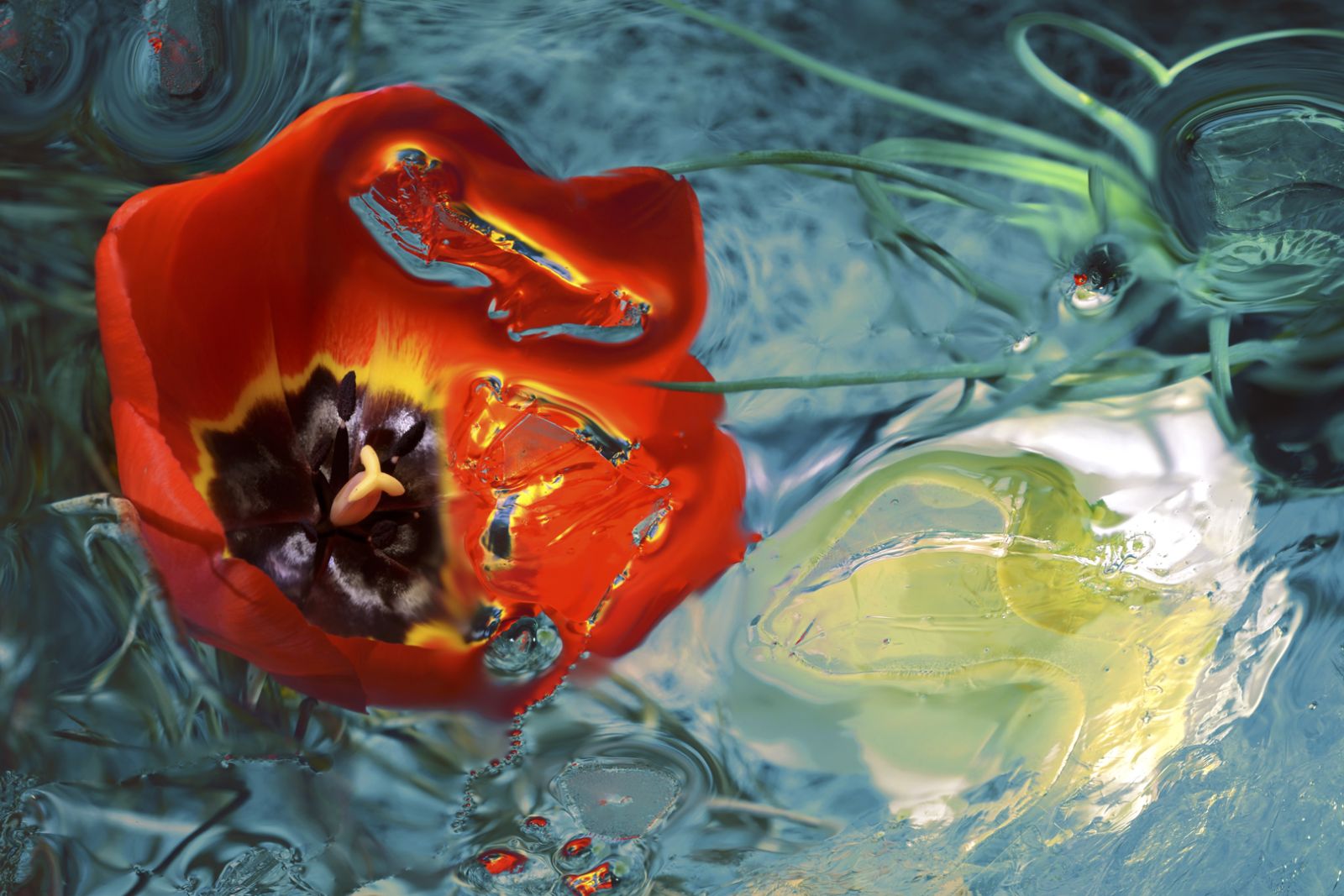
The “ineauflores”
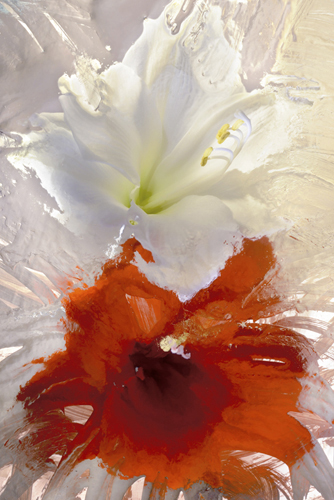
The “ineauflores”
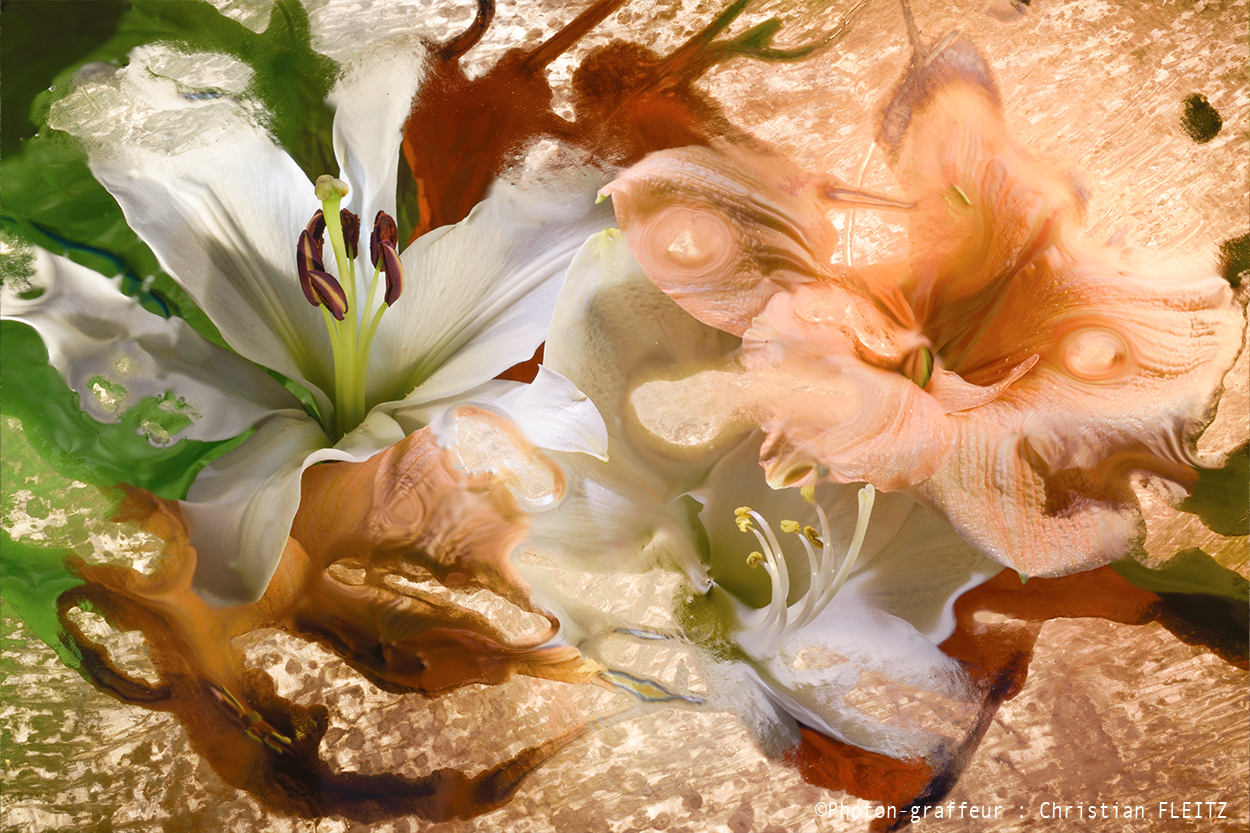
The “ineauflores”
.jpg)
The “ineauflores”
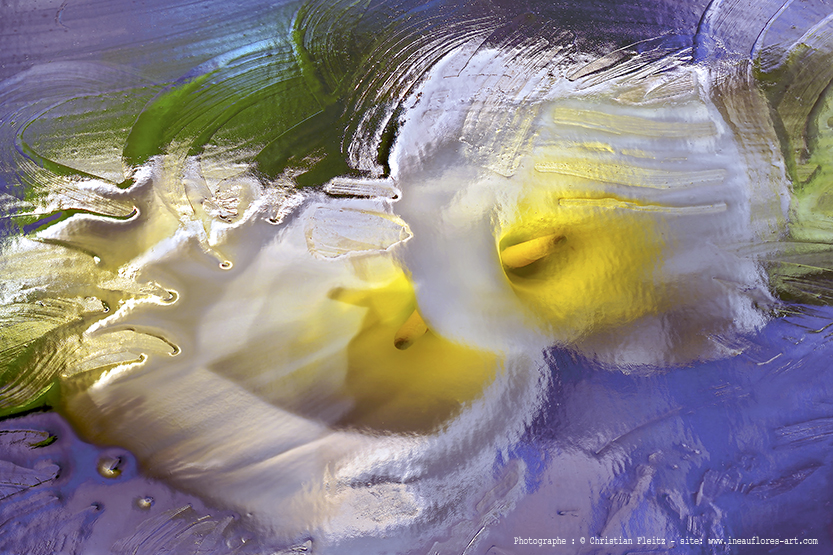
The “ineauflores”
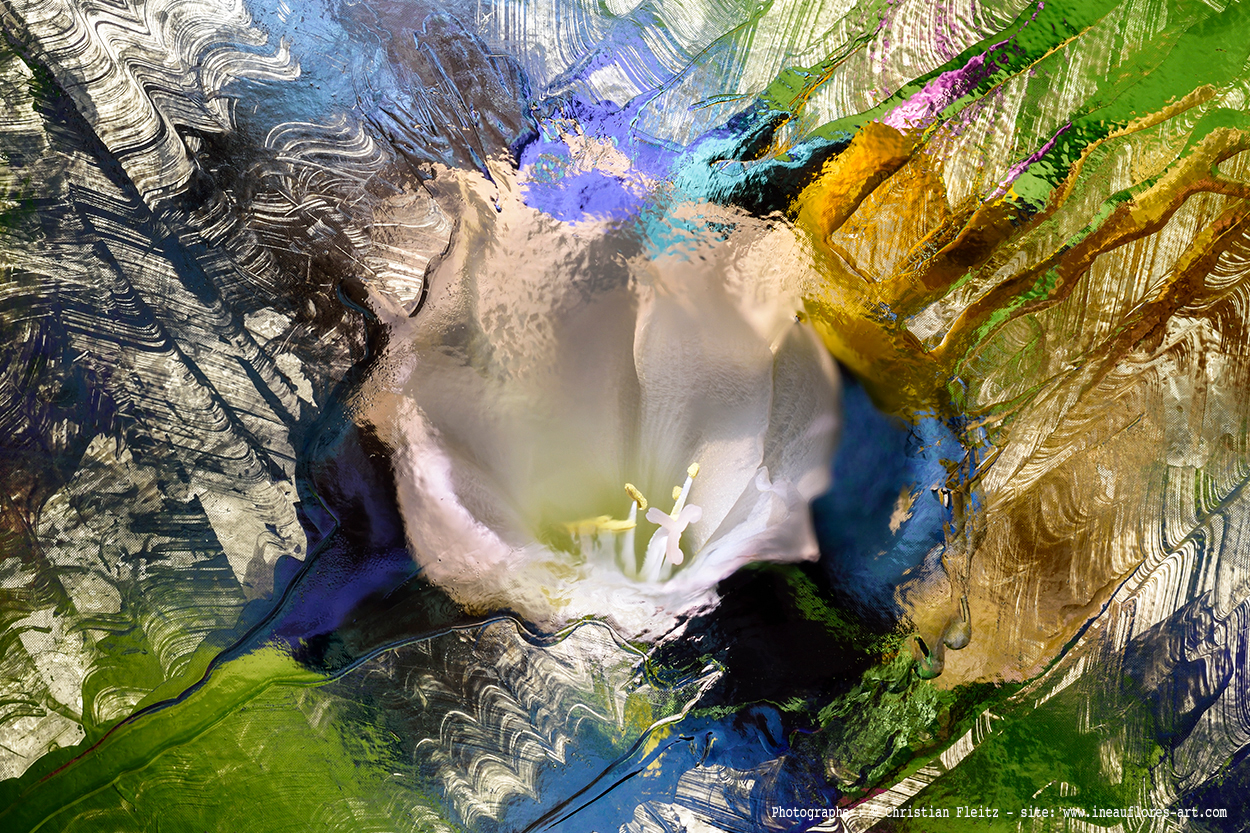
The “ineauflores”
A short walk,
what do you say?
.png)
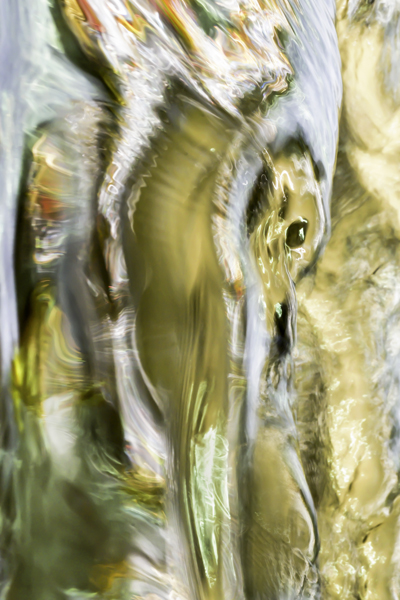
(River photography).
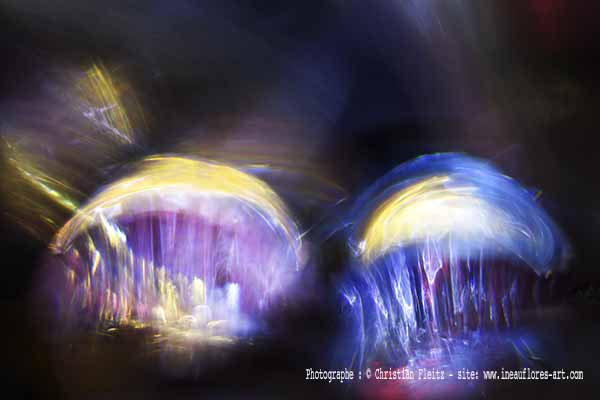
(Water Drops and Interference).
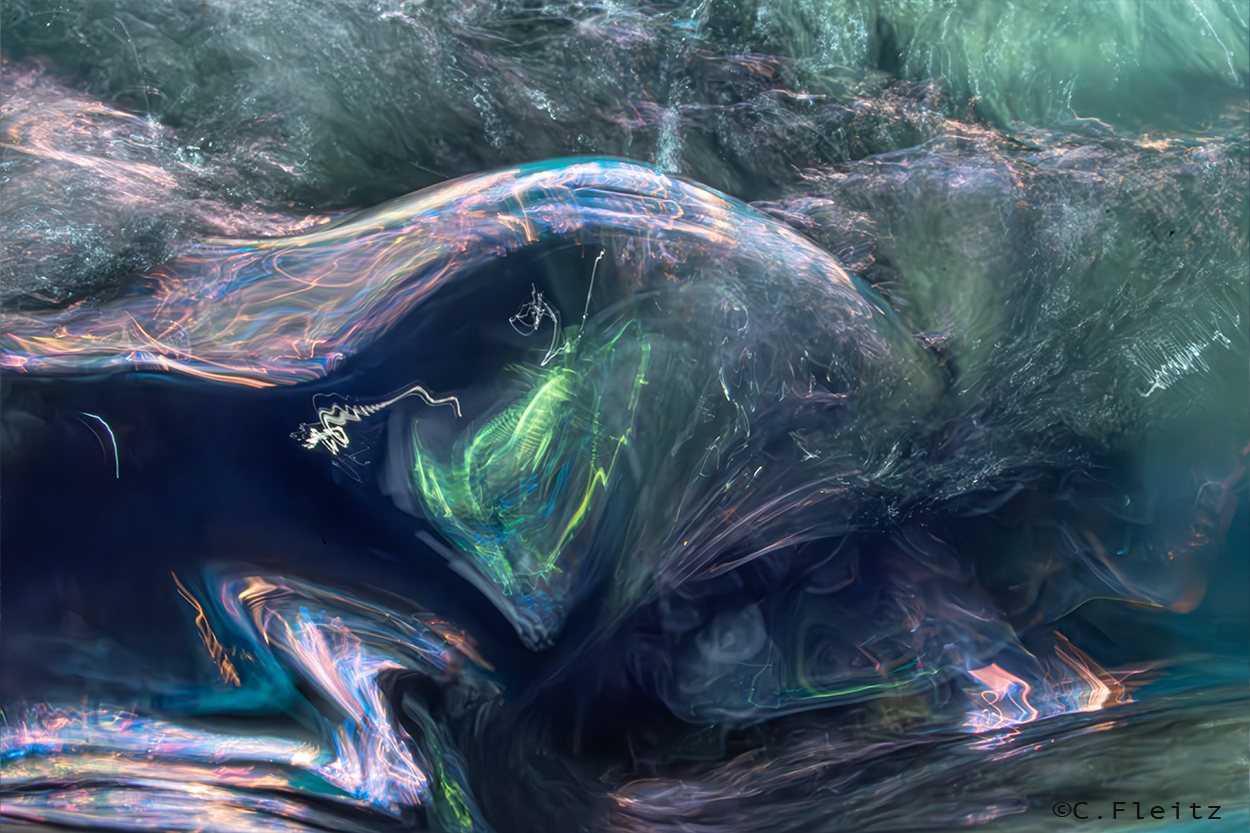
(River photography).
.jpg)
(Water Drops and Interference).
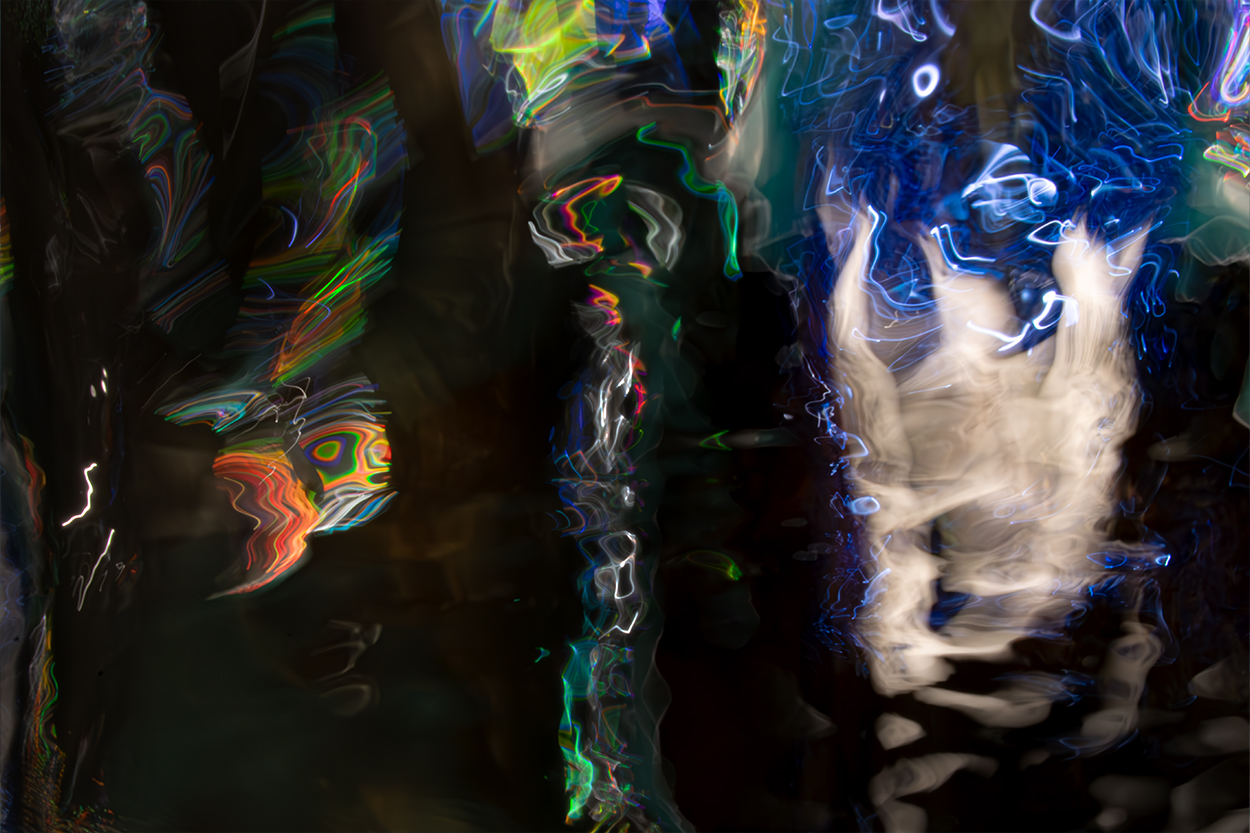
(River photography).
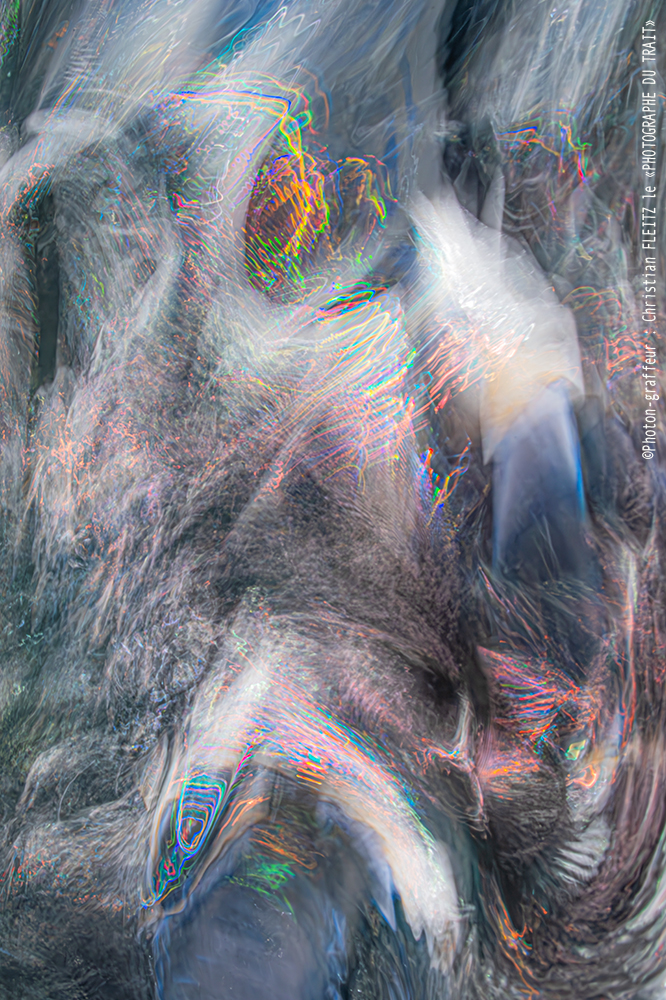
(River photography).
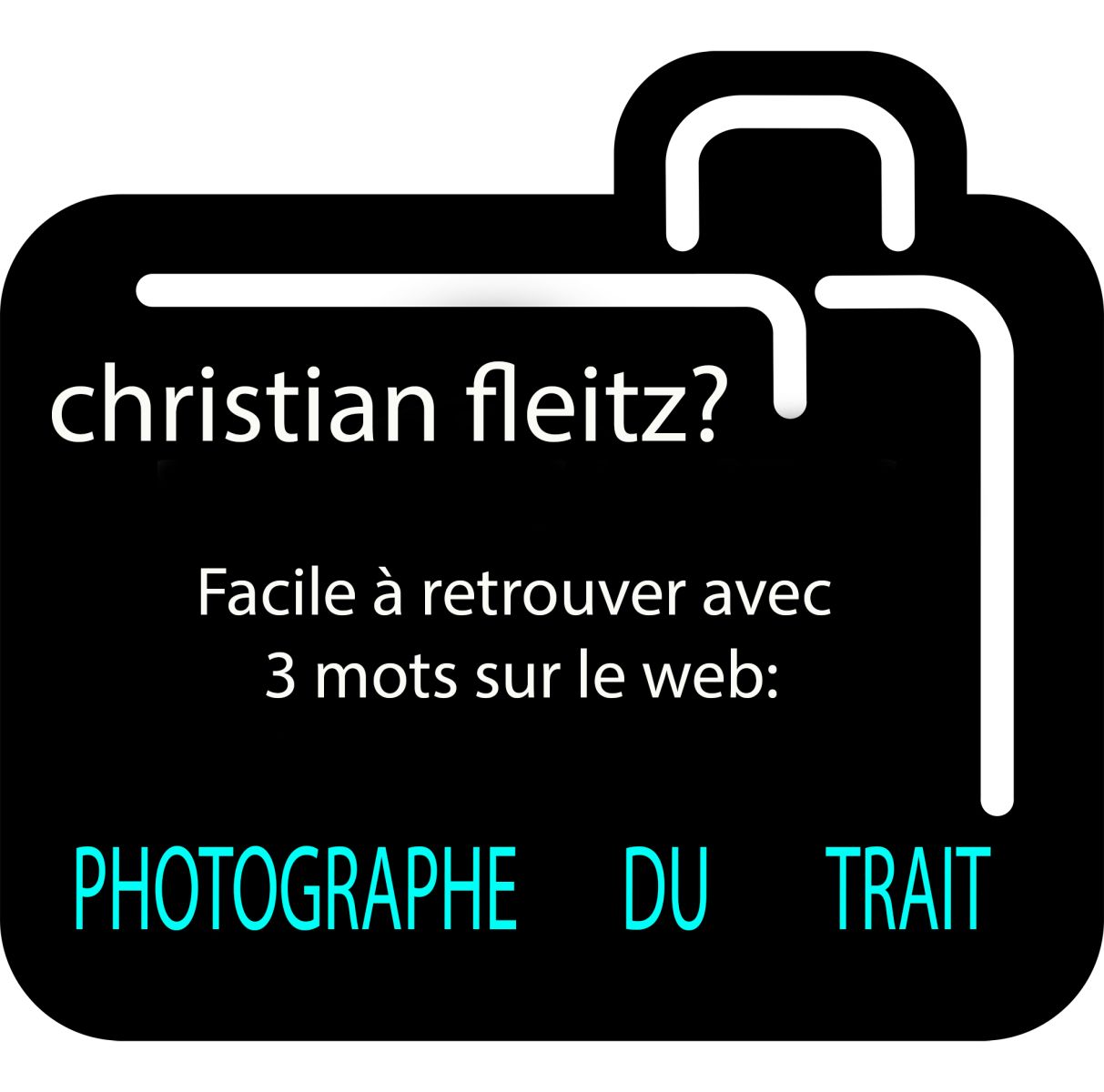
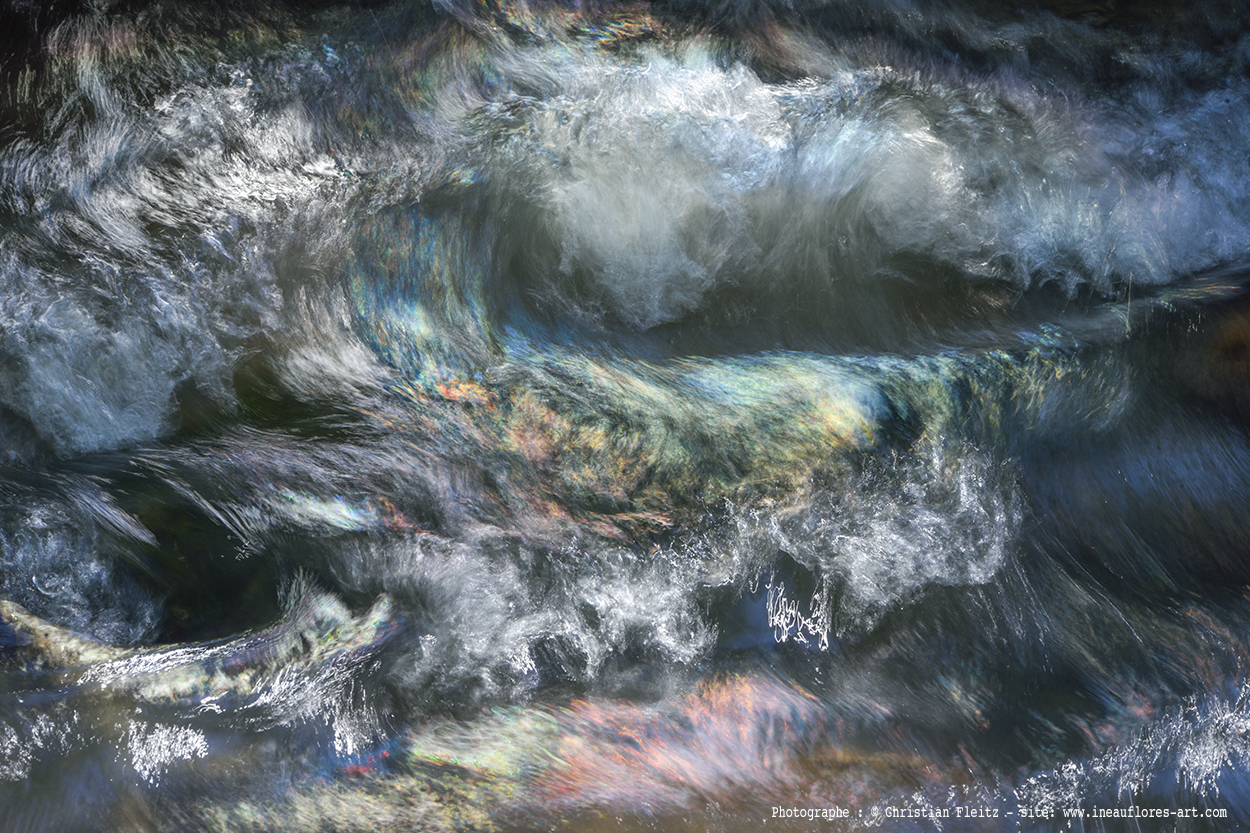
(River photography).
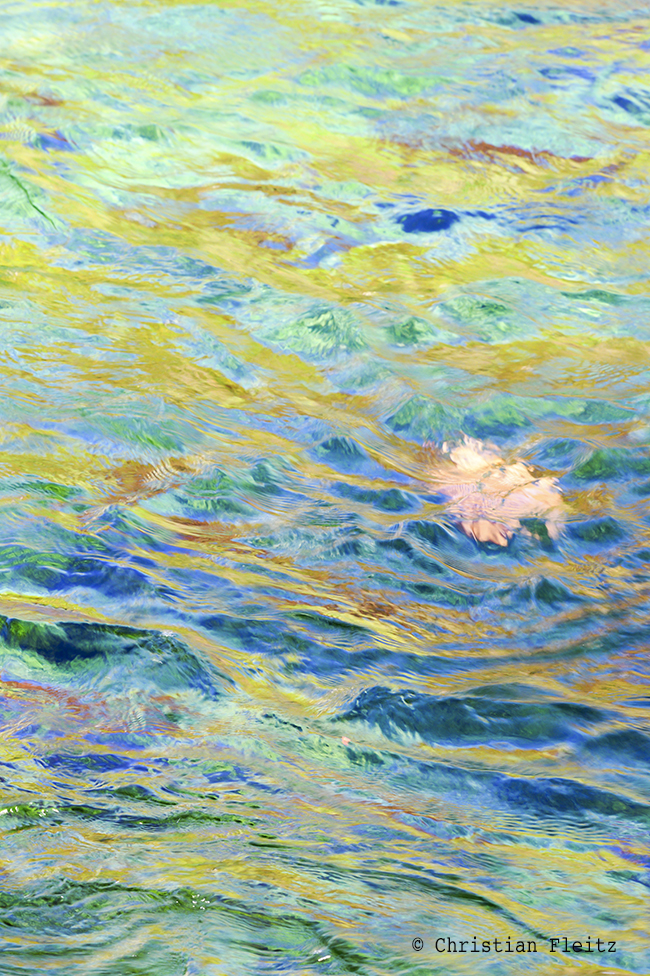
.
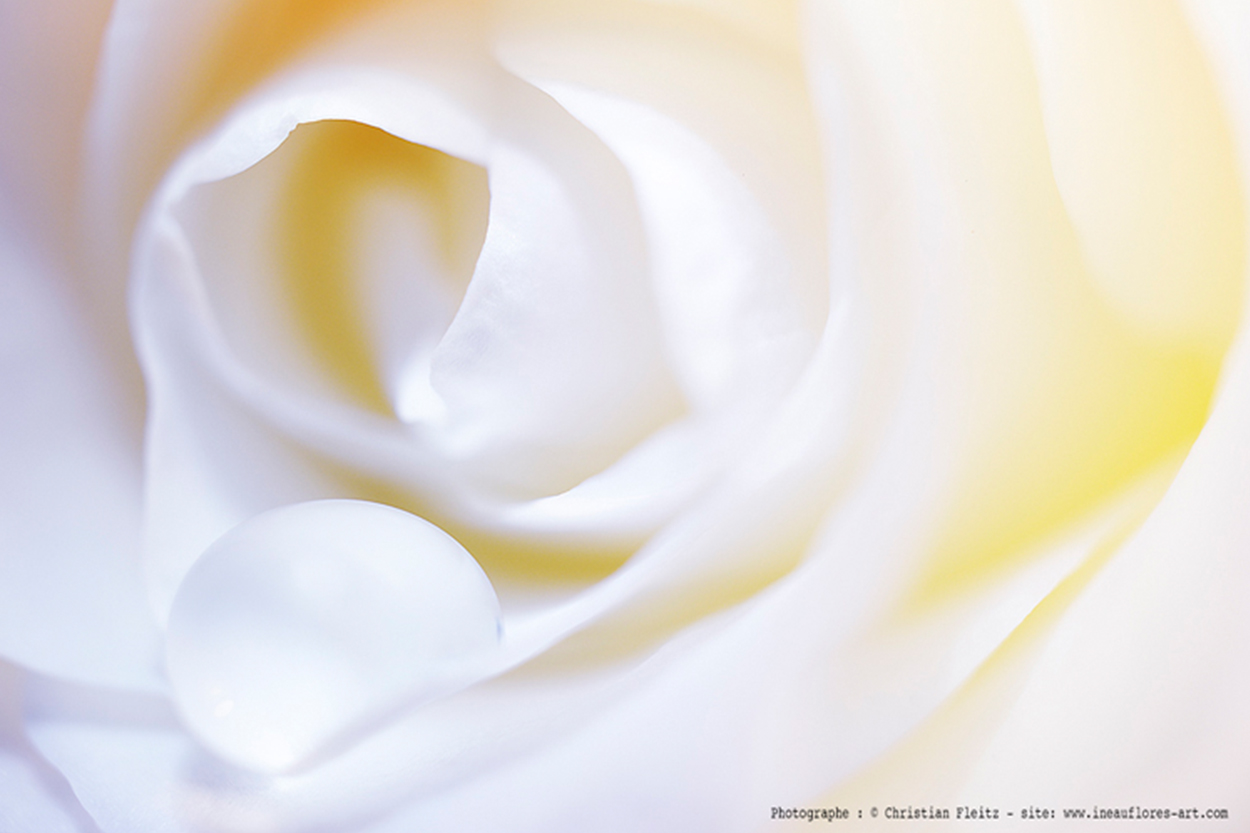
.
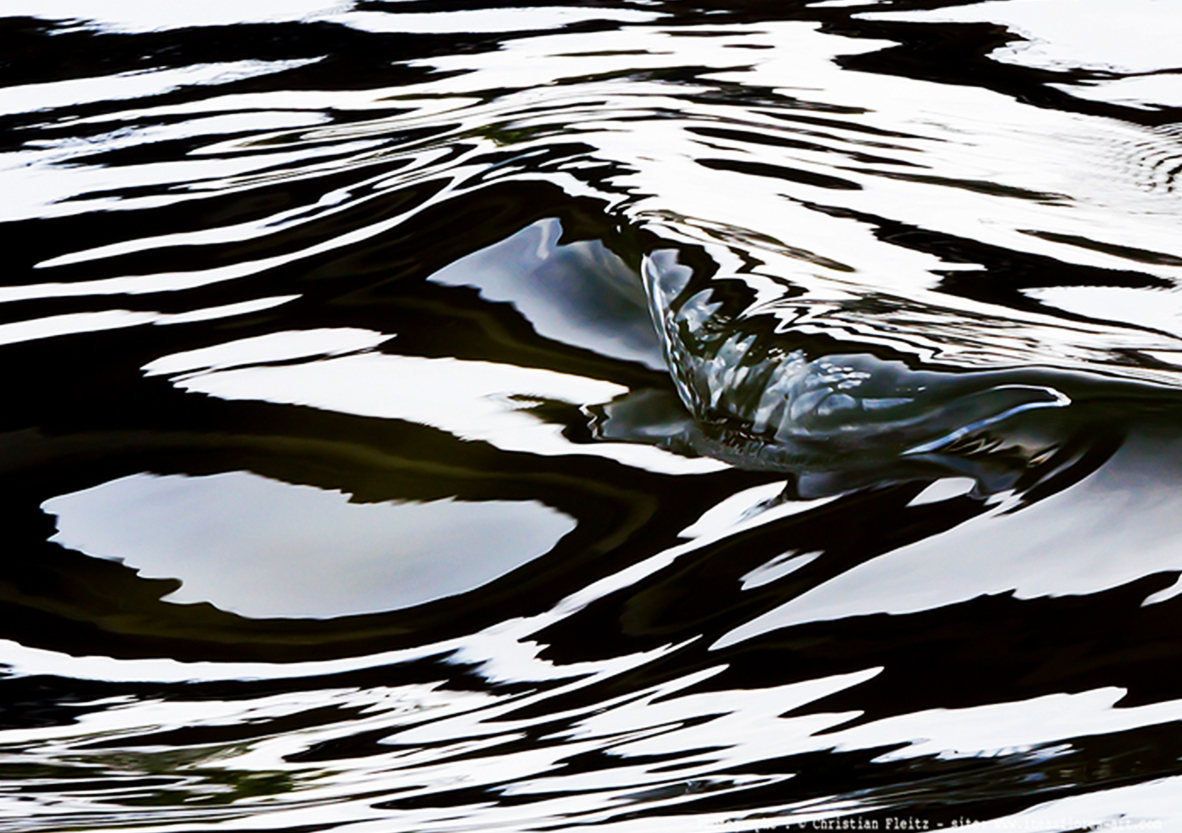
The Loire
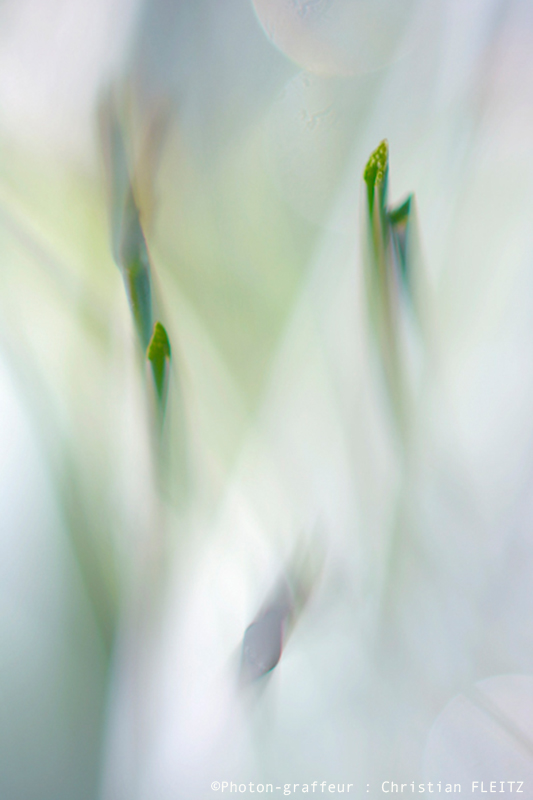
.
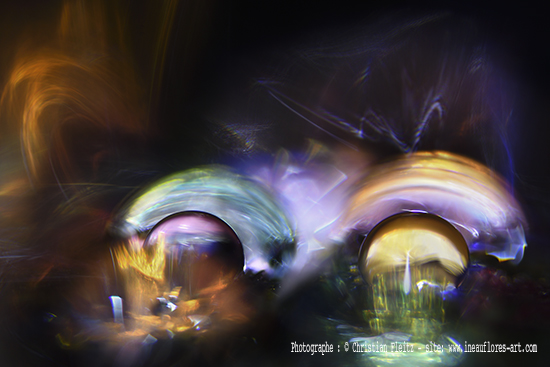
(Water Drops and Interference).
.jpg)
(River photography).
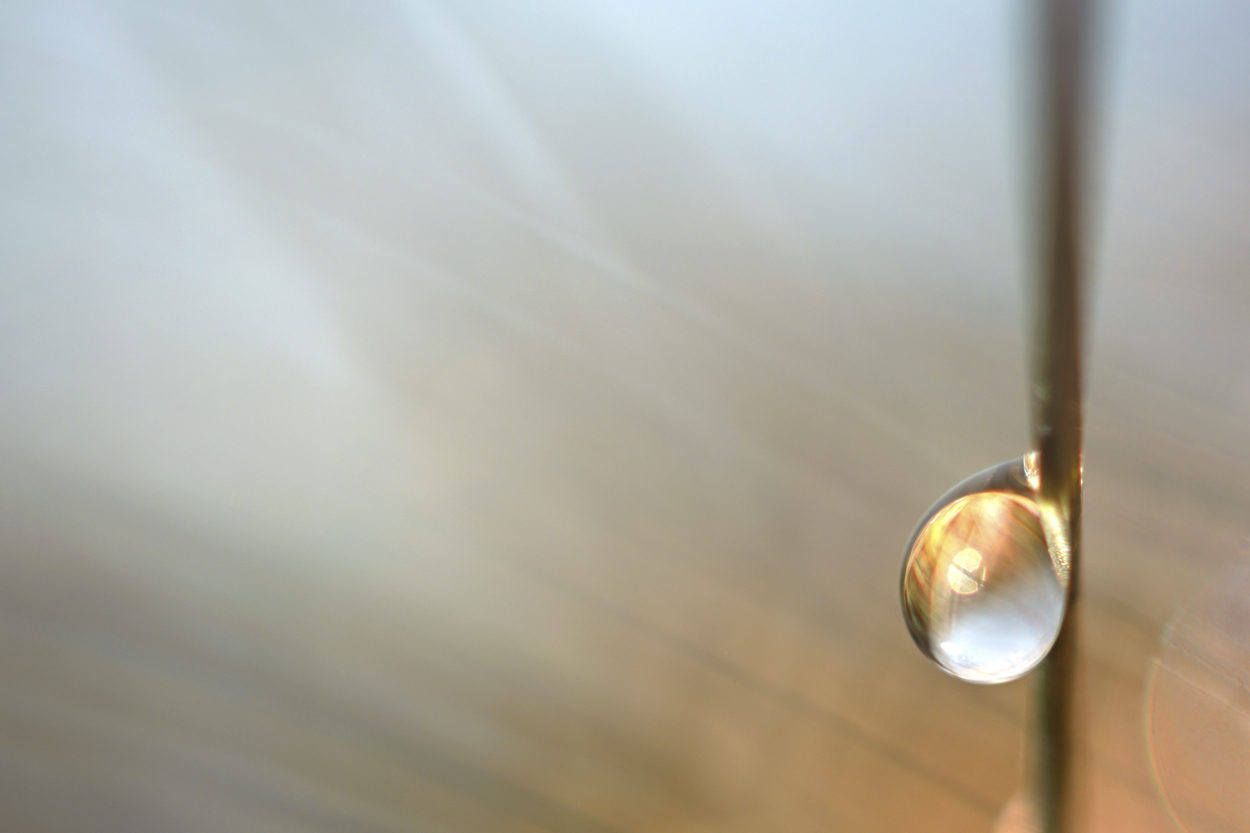
.png)
.png)
.jpg)
(Photographic Art of Interferences).
.png)
From questioning
to the (technical and artistic)
to travel
“FROM REALITY TO IMAGINATION”
.png)
THE DESIRE TO GO FURTHER, TO GO ELSEWHERE,
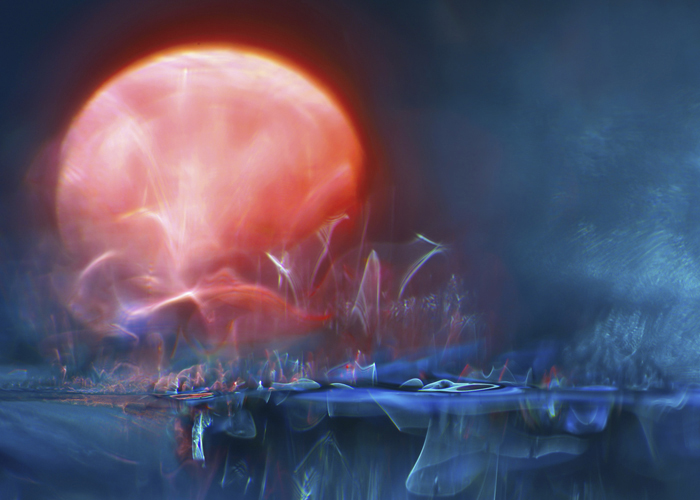
(Photographic Art of Interferences).
How far can one go with a simple snapshot? Is it still possible to achieve unprecedented aesthetics in images without resorting to computer-generated special effects in post-production? Can innovation still ioccur in photography with only what every photographer already has at home, just an ordinary camera, a bit of light, and everything that can be salvaged from the trash?
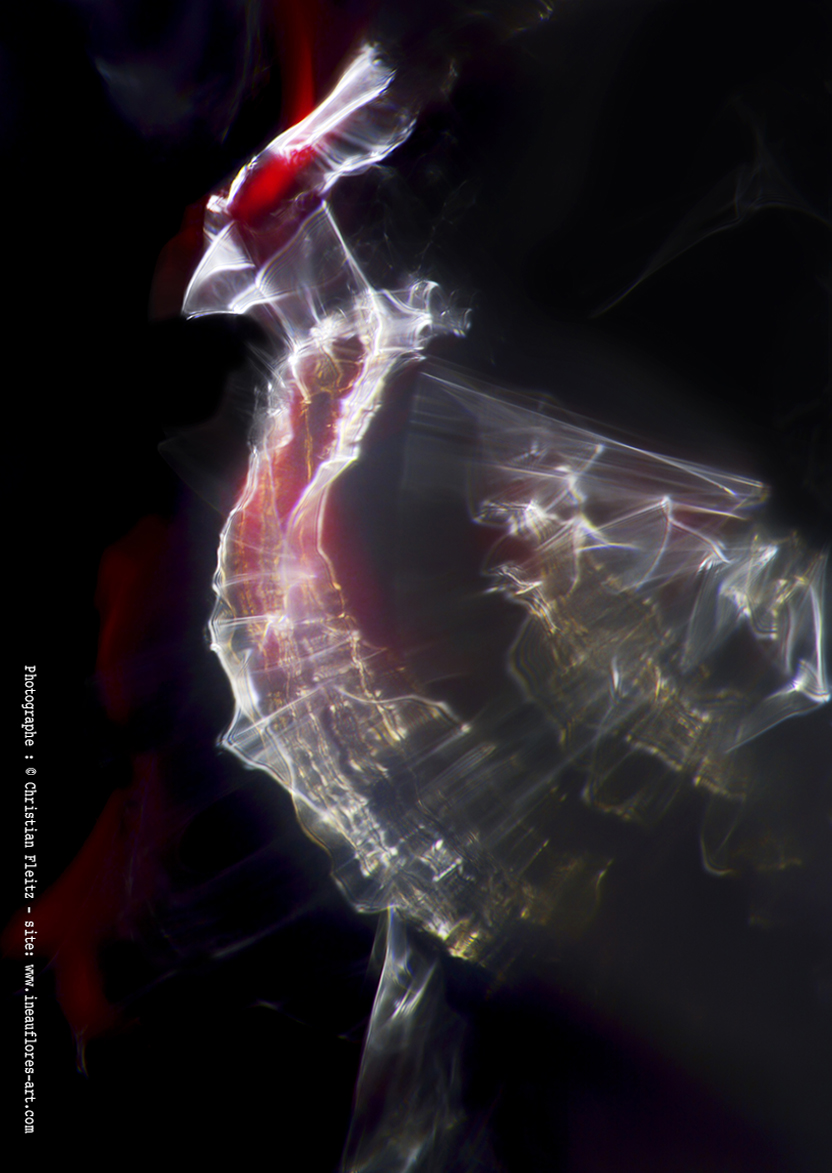
(Photographic Art of Interferences).
Ultimately, what can we do with all of these questions, to arrive at conceptual and material tools that are, above all else, at the service of artistic expression, aesthetics and wonder?
.png)
FROM DREAM TO LINE,
AND
FROM LINE TO DREAM.
.png)
TThis is what my artistic (and technical) research strives to provide some elements of answers to, in writing, more precisely through the use of personalized writing, to try to put the dream into writing in the image, and to tell stories with shots composed of a mixture of light strokes, of different types.
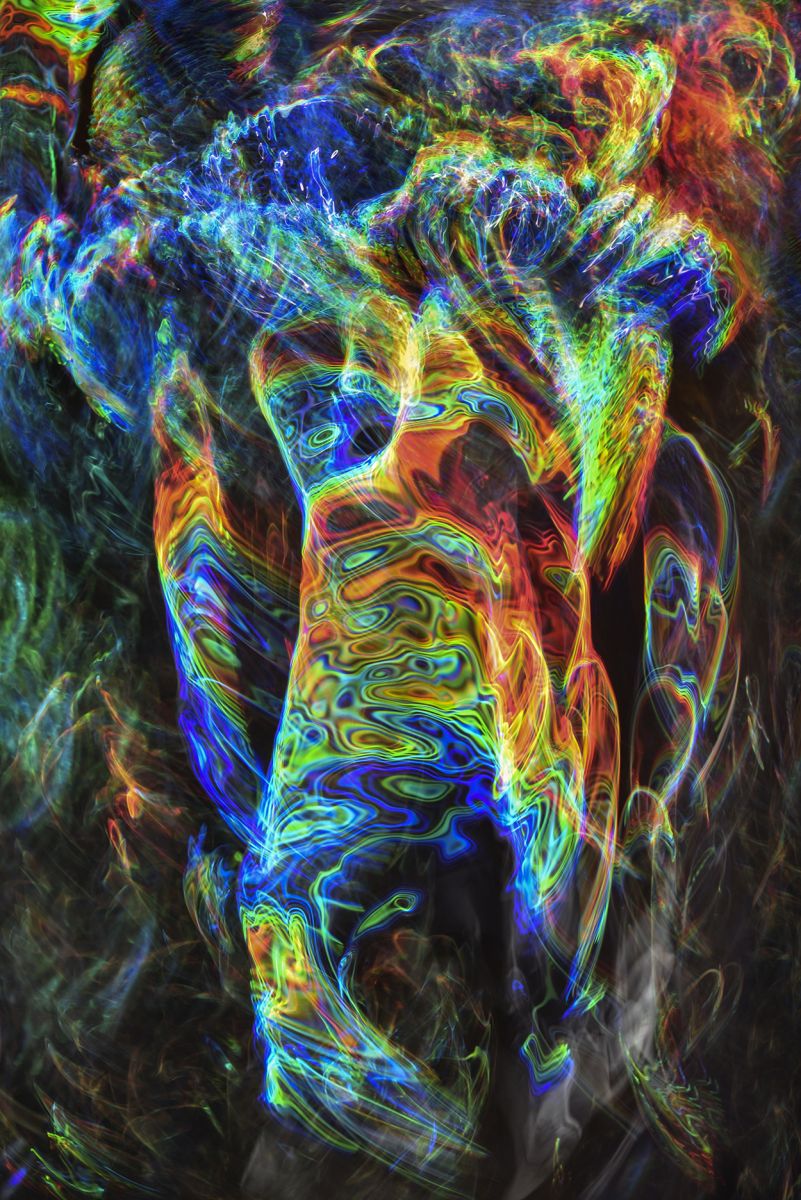
(Photographie de rivière).
The strokes are used in fundamentally different ways from each other, starting with the one that is known to all, and has always been used in photography (the light trail of "light painting"), to then make it coexist with other types of strokes, up to that of the fringe of interference of light waves (photo below), which gave birth to "The Photographic Art of Interferences" in 2016.
.jpg)
(Photographic Art of Interferences).
So many strokes that allow the synthesis of an image, through the lens of the camera, to bring out the dream and magic in the shot.
.png)
DIGITAL AND FILM
.png)
To create such shots, the support doesn't matter, whether it's a digital sensor or a film, because here, it's indeed a return to basics, with a light that not only produces the image but also its own special effects, live.
.png)
(River photography).
If I work, indeed, with digital technology, it's only for its incomparable ease of use, both for creative and artistic work, as well as for experimentation and technical research.

(Water Drops and Interference).
.png)
WELCOME TO THE PIONEERS
.png)
INNOVATIVE AND DIVERSE.
What you discover here is photography in its own right. A different kind of photography, without frontiers, that reaches out to all disciplines willing to dialogue with the art of shooting

(Photographic Art of Interferences).
Today, everything is pure joy, especially thanks to you and your active support, thanks to your involvement in a growing word-of-mouth, but also thanks to the support and recognition of prestigious institutions of Arts and Sciences, in France and Italy. As for the next steps of the adventure, it's also brimming with projects, as it's already awaited across the Atlantic...
.png)
YOU.
.png)
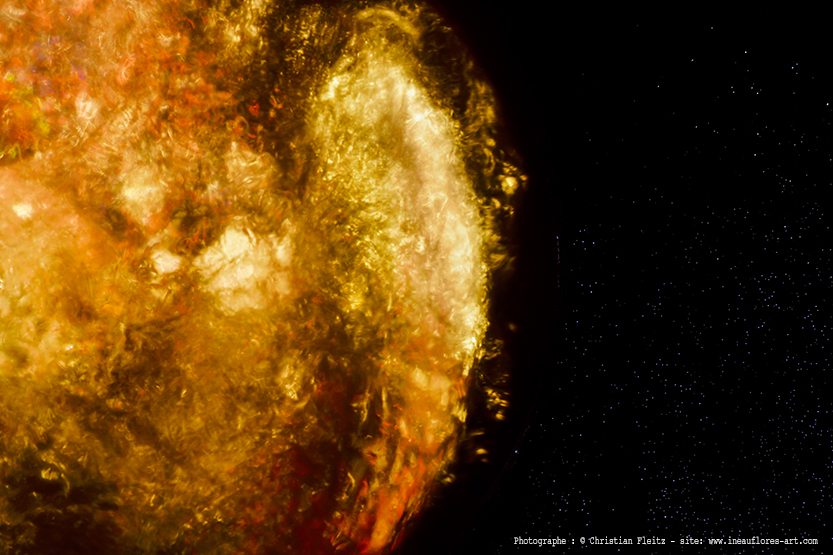
(Photographic Art of Interferences).
So, welcome to the pioneers that you are now, as you set foot in these "uncharted territories of light", in this universe that we have yet to explore together, over the years to come.
Yours sincerely
Christian Fleitz
.png)
TECHNIQUES
AND THEIR
CONCEPTS
.png)
THE PRIVILEGE OF IGNORANCE.
Having no artistic or photographic training, and after a long technical career in industry,I have been privileged with the great advantage of ignorance. The writer Marc Twain once said, "They didn't know it was impossible, so they did it".
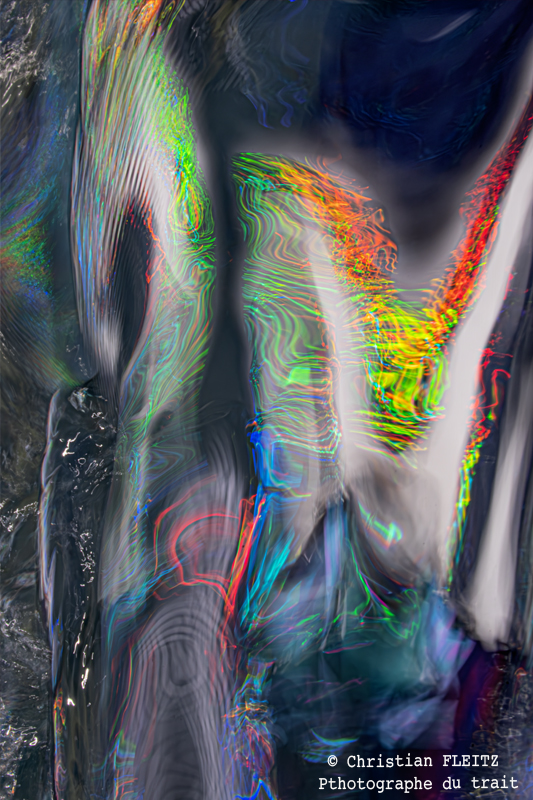
(Photographic Art of Interferences).
And undoubtedly, it is also what allows me today to achieve different images, having been able to learn and progress, through my sensitivity, my curiosity, with a fresh and candid look, far from any dogma, and any conformity, generally synonymous with self-censorship reflex.
.jpg)
(Photographic Art of Interferences).
So, day after day, through the rediscovery of the simplest things,I develop the peculiarity of being a "photo-engraver". A "line photographer" who has evolved a very colorful conception of photography, often close to the spirit of street art.
.png)
PHOTOGRAPHY
FROM
“PHOTON-GRAFFITI ARTIST”
.png)
So, I createake graffiti on the photosensitive surface of my camera. Graffiti composed of light strokes that make it seem like they could have been done by a human hand..
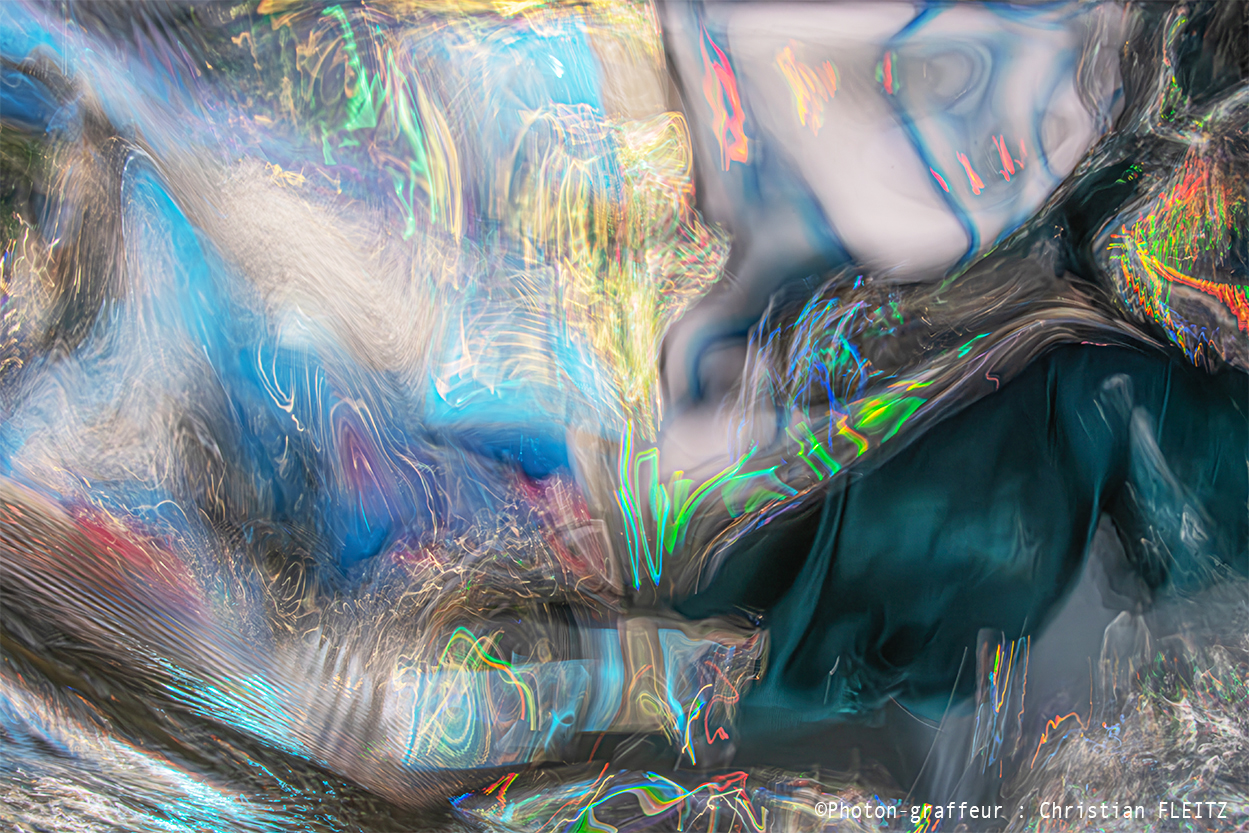
(River photography).
.png)
FROM DREAM TO MAGIC,
FROM MAGIC TO INNOVATION.
.png)
But typically, a graffiti artist holds a spray can in their hand, not a camera. It then becomes necessary to resort to "a search for compatibility between different tools for comparable results." Innovation is necessary. Often, behind an innovative concept, there is a part of utopia and dream that only magic seems capable of making possible. However, what is impossible in one discipline may sometimes be merely outdated magic, now just a commonplace in another discipline. This realization then invites us to attempt to achieve a "transfer of magic," a "transfer of skills" from one discipline to another.
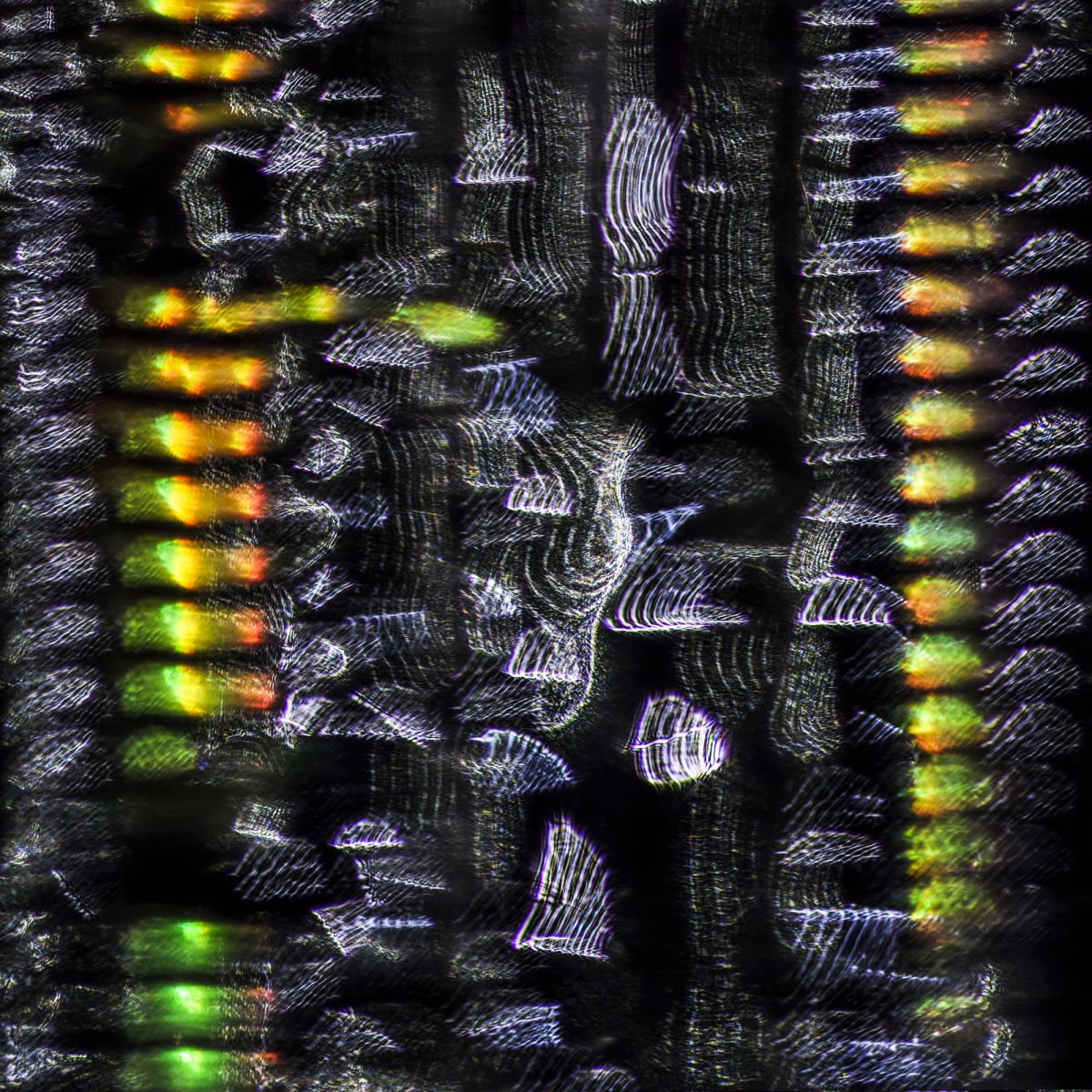
(Photographic Art of Interferences).
When one succeeds, even partially, the banality, or the "ordinary magic" of one discipline, then becomes extraordinary magic in the discipline where it was least expected. This is generally what I strive to do to "capture the imagination in a photo."
.png)
THE MAGIC OF THE STROKE
.png)
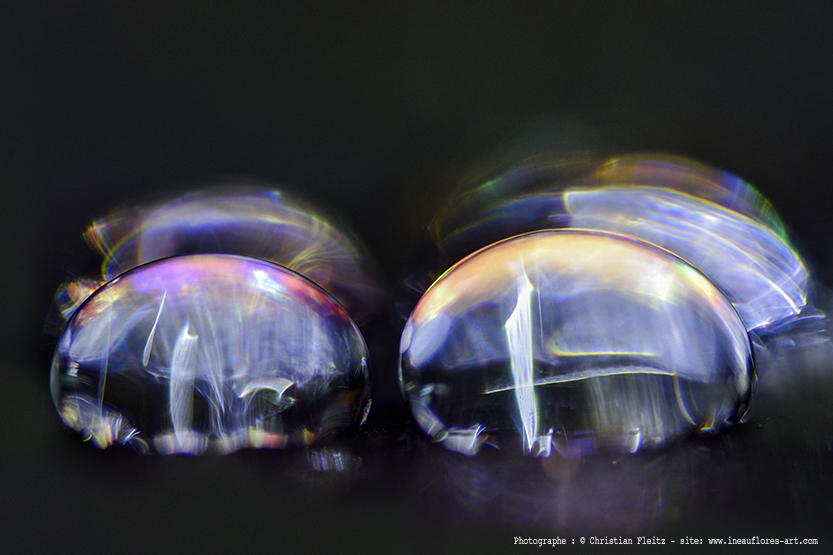
(Water Drops and Interference).
And there's no magic without a wand. A wand is rather straight. It has, itself, the shape of a stroke. By chance? Because the stroke also has a magical power, the power to make what doesn't exist appear in an image, especially through drawing. Because drawing is already a form of image synthesis. The challenge for the photographer is then to synthesize through the stroke but, necessarily, through a completely different way of drawing, on their digital sensor or film.
.png)
STROKES...SO DIFFERENT!
.png)
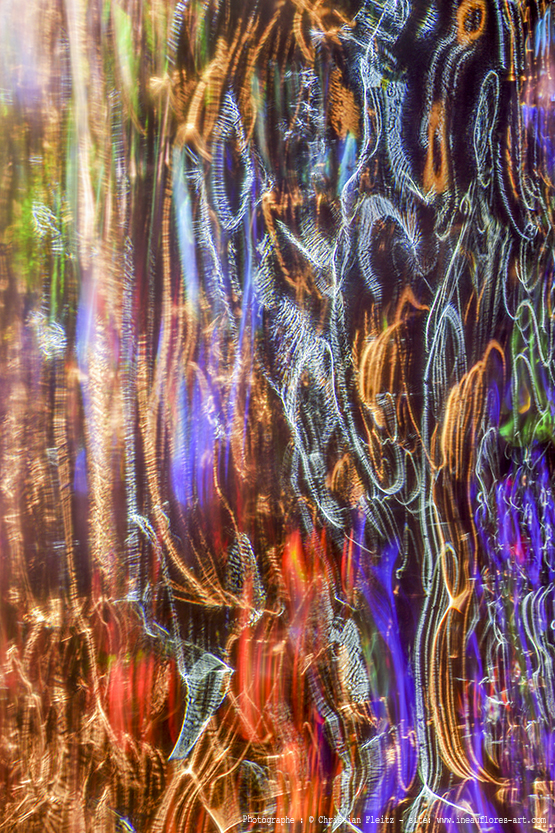
(Photographic Art of Interferences).
To achieve visually unconventional results, and sometimes astonishing realism, it becomes necessary to enrich one's graphic palette with unusual and innovative strokes, capable of appearing and organizing themselves into an image "that works" without the intervention of the human hand, at least as far as the stroke itself is concerned.
.jpg)
(Art Photographique d' Interférences et rivière en bas à gauche).
.png)
VIBRATORY PHENOMENA
TO EVOKE
THE WORK OF THE HAND
.png)
Here's a "river unicorn", born of vibratory phenomena.
.jpg)
(River photography).
It's at this point that scientific conceptscome into play, with the use of vibratory phenomena, to replace and imitate, as muchas possiblethe gesture of the painter or the draftsman.
My work on mastering the stroke then rests on two pillars, two foundational approaches, very different in their technical aspect but very close conceptually, in their relationship to vibration.
In one case, it's a question of working with the vibrations of river water, and in the other, it's a question of using the vibrations of light in a very particular way, to obtain interferences patterns.
.jpg)
(Photographic Art of Interferences).
.png)
SYNTHESIZING THE IMAGINARY
PHOTOGRAPHY THROUGH LIGHT
WHICH RESTS ON TWO FUNDAMENTAL PILLARS.
.png)
The first pillar is working outdoors, with your feet in the water...
The technique
“Self-portraits of Rivers”,
dynamic image synthesis,
from sound synthesis to image synthesis.
In my work, everything ultimately revolves around the transformation of physical realities into virtual images.
Examples of "painting synthesis" using this technique.
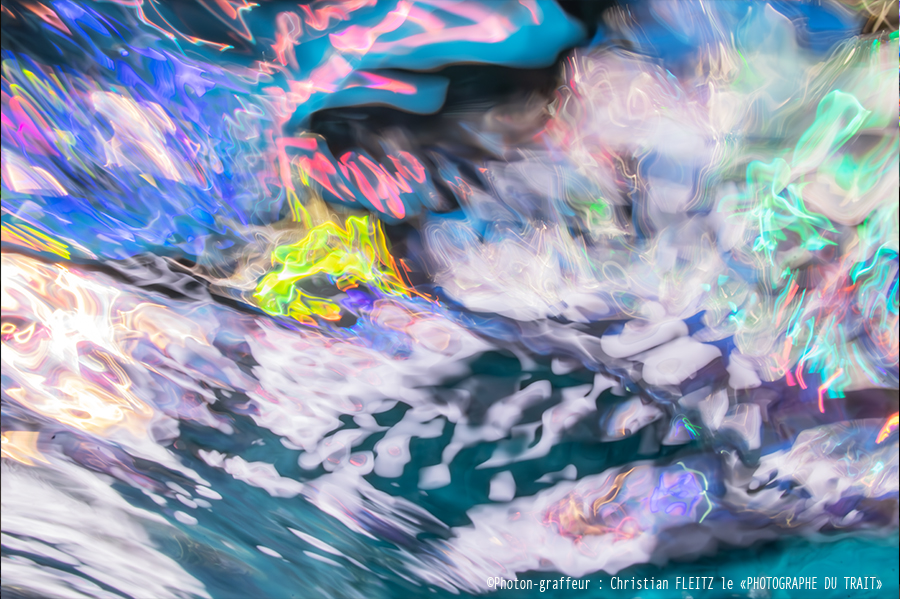
(River photography).
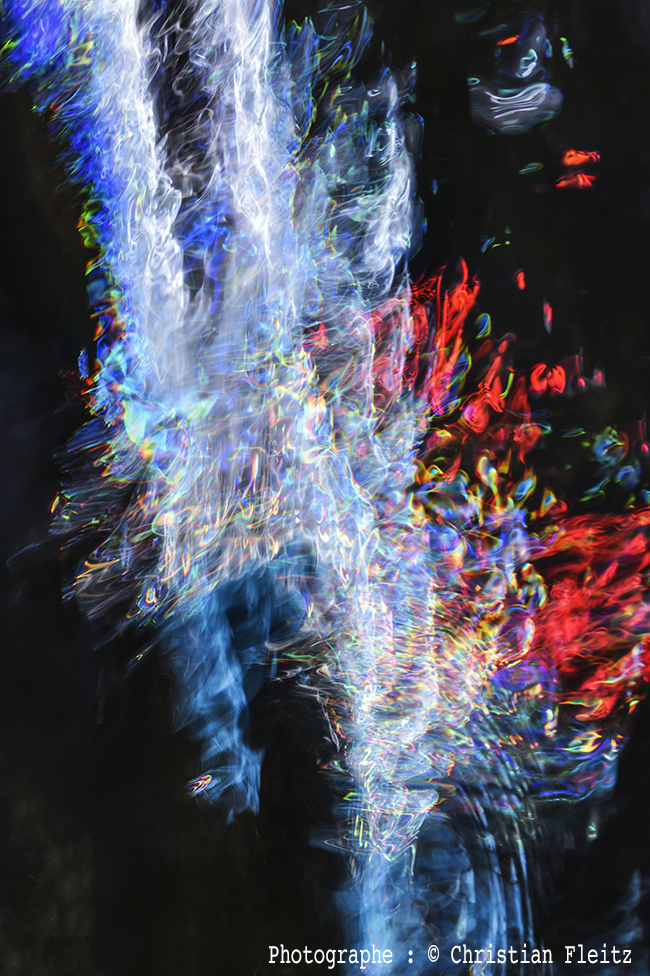
(River photography).
Here, the goal is to transform the river into an artist. Once the necessary equipment setup is completed to process and use sunlight, the photographer becomes a sort of "sports journalist" striving to capture the ephemeral creations of moving water, in the best place, at the best time, with a simple shot, but also with a bit of luck due to the unpredictability of moving water. And it may even happen that this luck invites an extraterrestrial into the image!
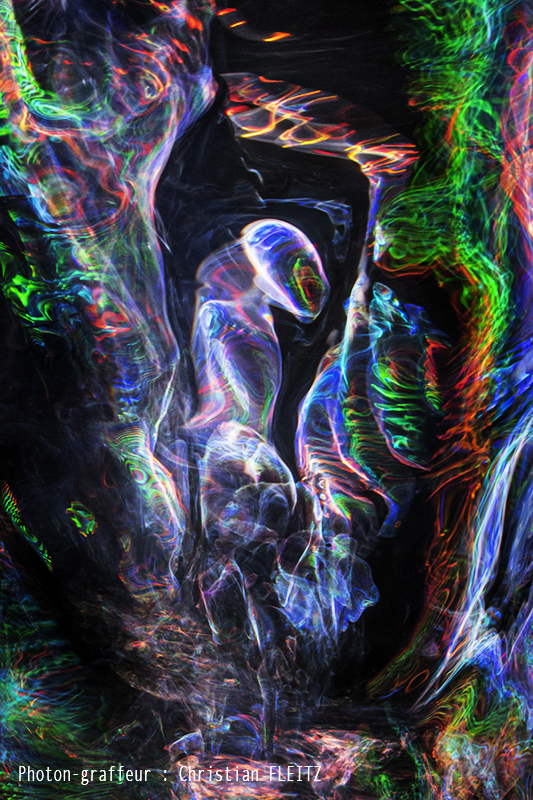
(River photography).
There are ghosts in the river too,
.jpg)
(River photography).
The wise man of the Tribe,
.jpg)
(River photography).
And even nude art!
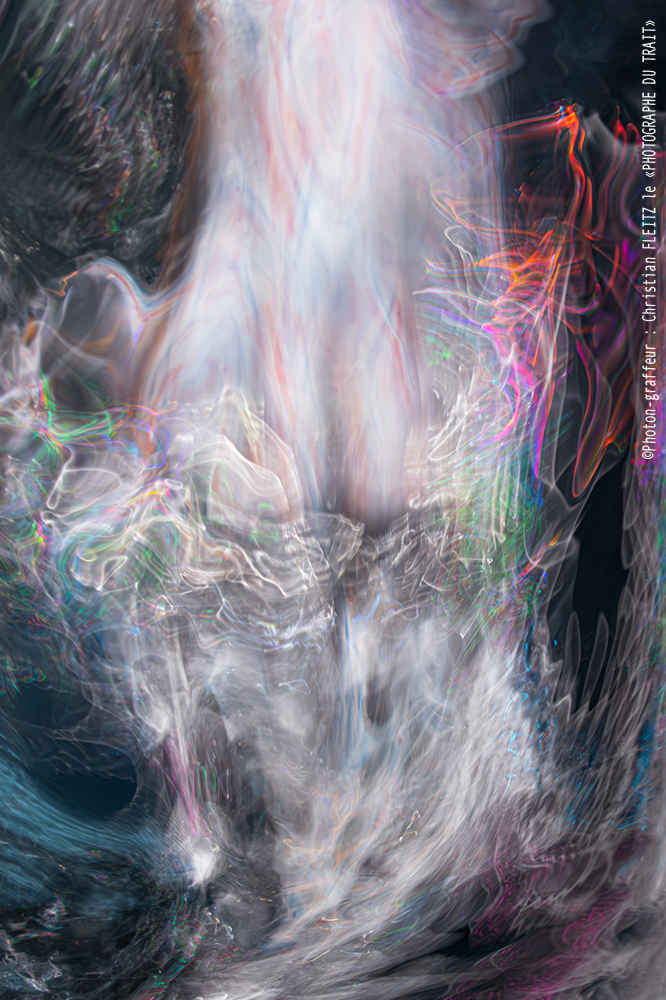
(River photography).
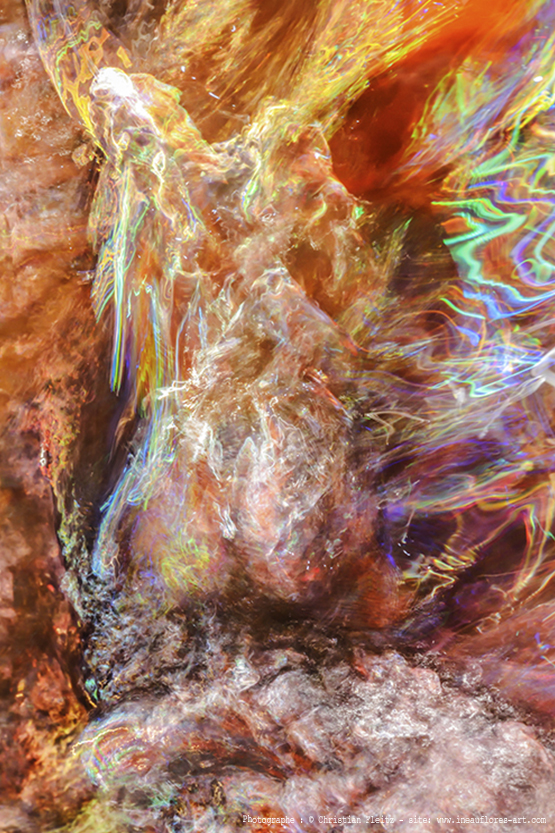
(River photography).
To delve more into the technical approach, everything starts in the domain of sound. Sound synthesis involves layering vibrations to reconstruct the sound of a virtual musical instrument. By using a relationship that links the vibrational frequency of water to the sharpness level of the light stroke obtained through reflection, the shooting technique involves illuminating the different frequencies of the river's waves to obtain images that feed the sense of sight with a "complete spectrum of sharpness."
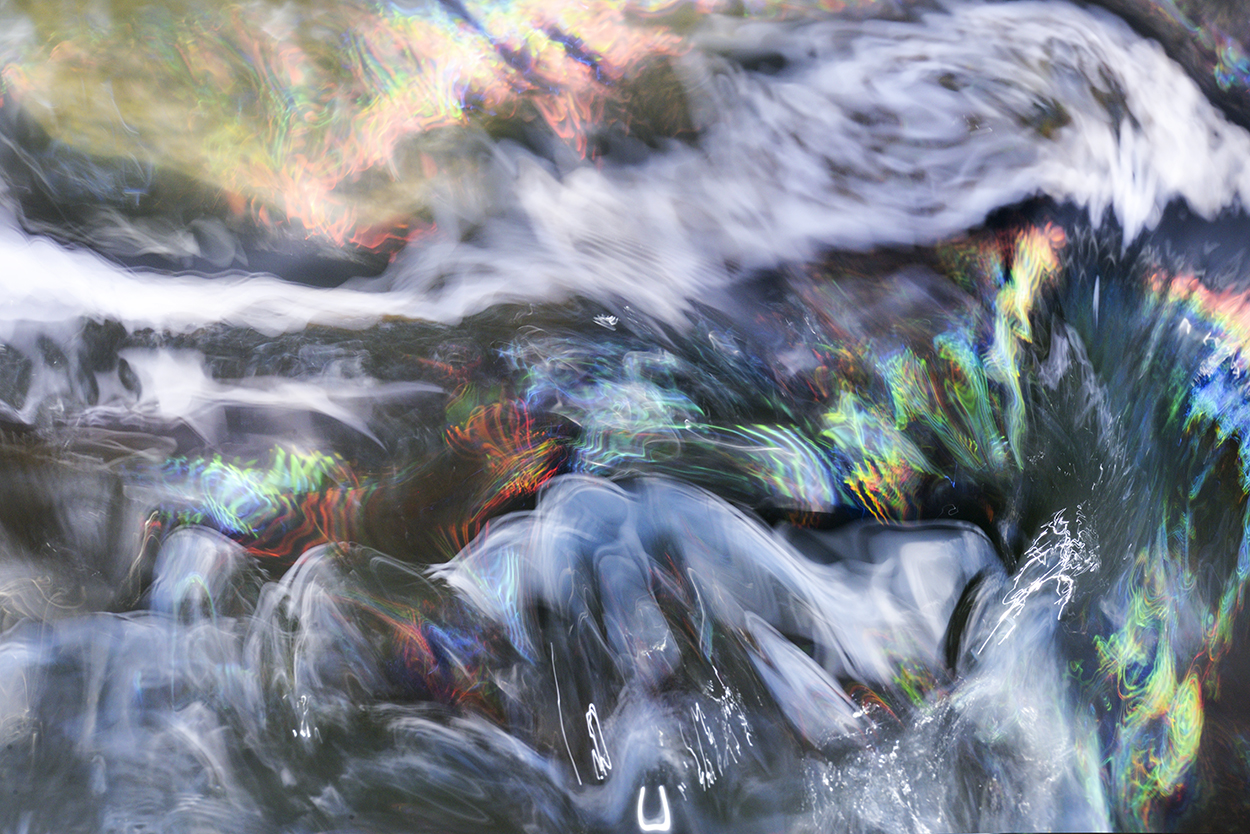
(River photography).
The shooting technique aims to satisfy the sense of sight in the same way that the sense of hearing is satisfied when sound is complete and enjoyable to listen to, only if it lacks nothing, composed of a complete vibrational spectrum, from low to high frequencies synonymous with precision, "sound sharpness."
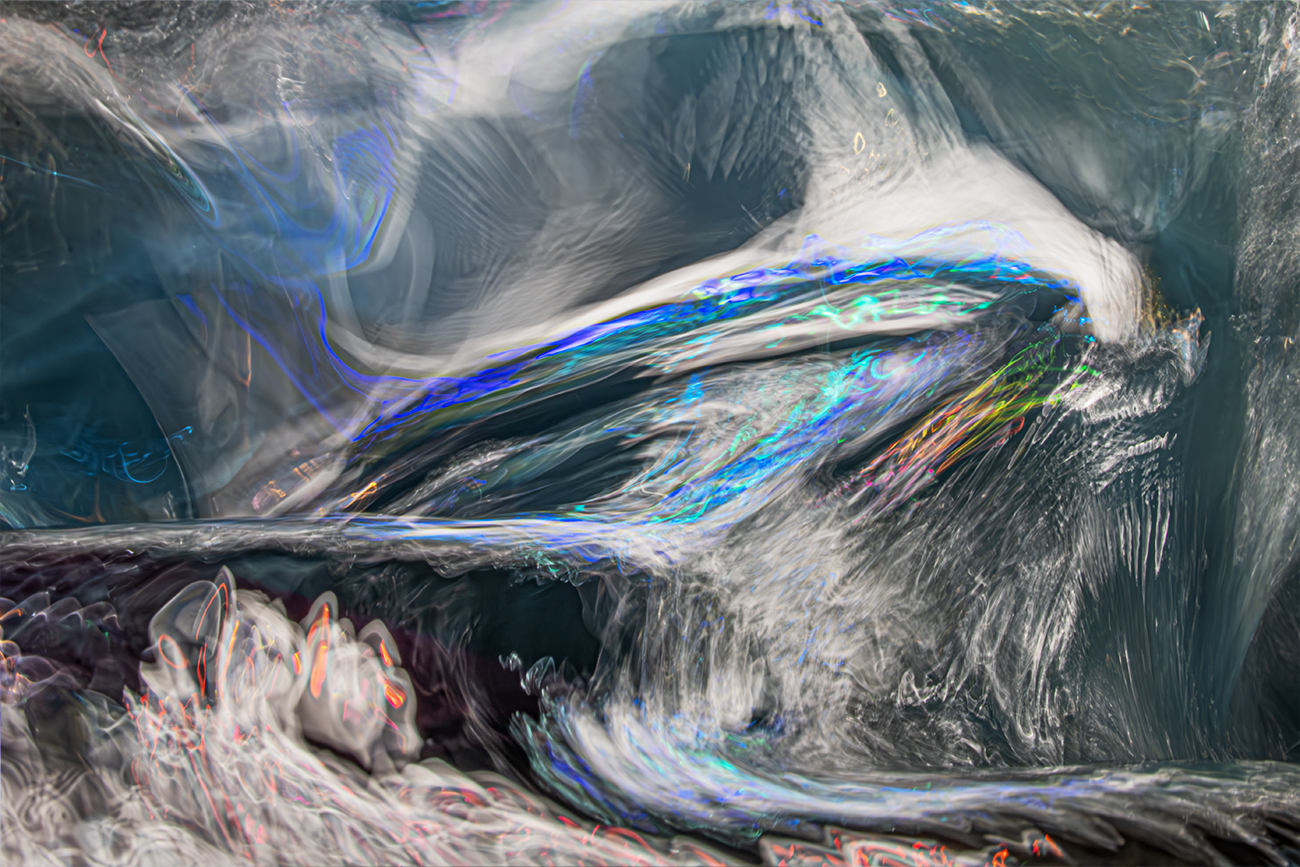
(River photography).
The encounter of light and water vibrations then produces a whole range of strokes, ranging from the blurriest to the sharpest strokes, in a click, to synthesize a virtual or "semi-virtual" image that won't evoke a sense of lack because the strokes drawn during the shooting will compensate for the disappearance of details caused by the need to use a long exposure to capture the poetry of water movement.
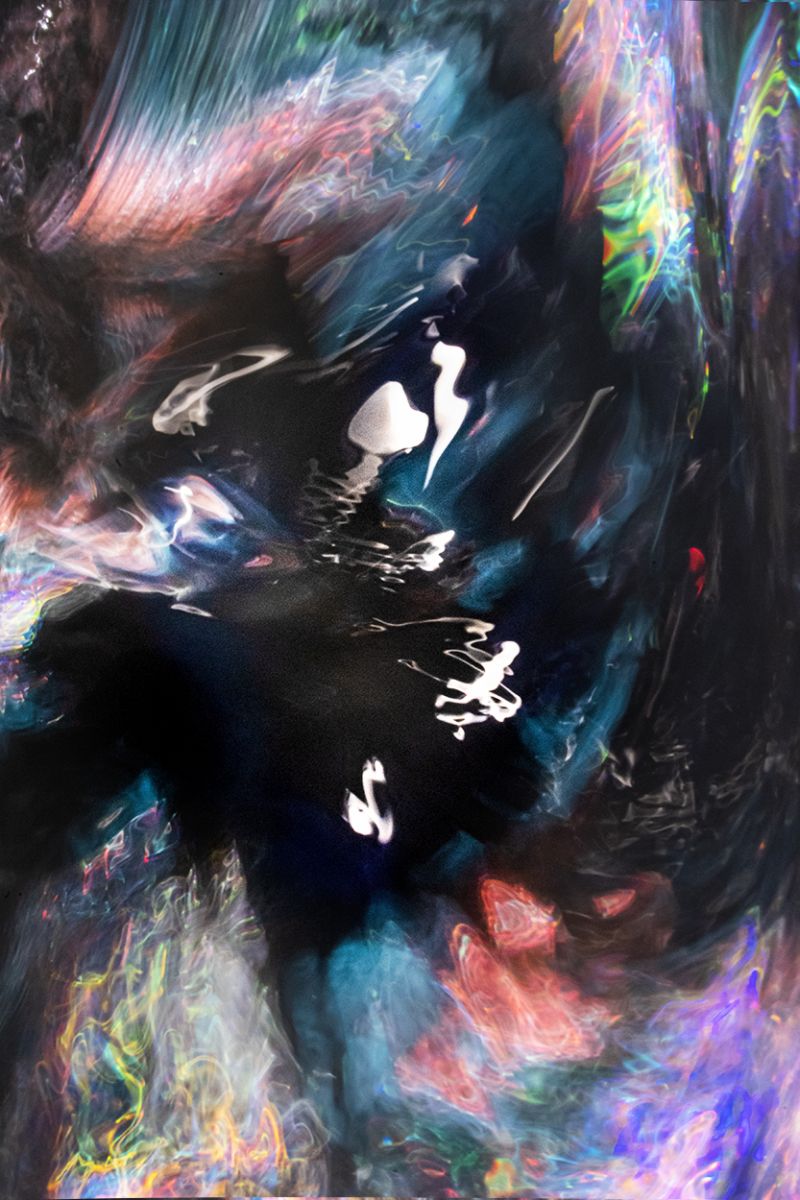
(River photography).
This is just a summary of the overall approach, as it involves overlaying other methods to obtain this "spectrum of sharpness," and the result also depends on many other parameters and physical phenomena, which significantly complicate obtaining a result worthy of being seen as a work of art when working with the vagaries of nature and weather.
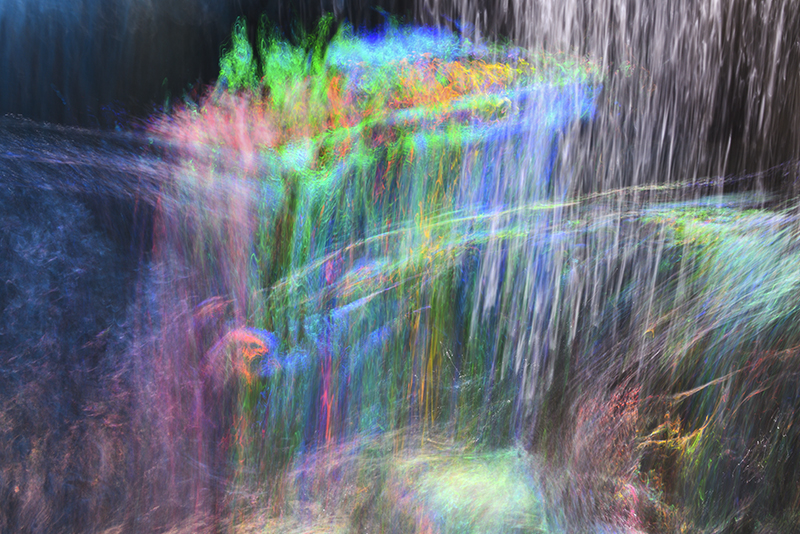
(Photographie de rivière).
.png) The second pillar of this photography, comfortably warm and in slippers...
The second pillar of this photography, comfortably warm and in slippers...
"The Photographic Art of Interference
A "static" image synthesis,
from still life to the synthesis of another image.
.png)
PHOTOGRAPHY?
A QUESTION OF...
"QUESTIONS AND ANSWERS
to travel
FROM REALITY TO IMAGINATION
The simplest photographic approach is probably that of reading a response. The luminous response to a question posed by lighting on things, most often material, like ourselves, objects, or a landscape. By choosing the location and our position at the moment we take our photo, we are actually choosing one luminous response among an infinity of others emitted by the illuminated scene.
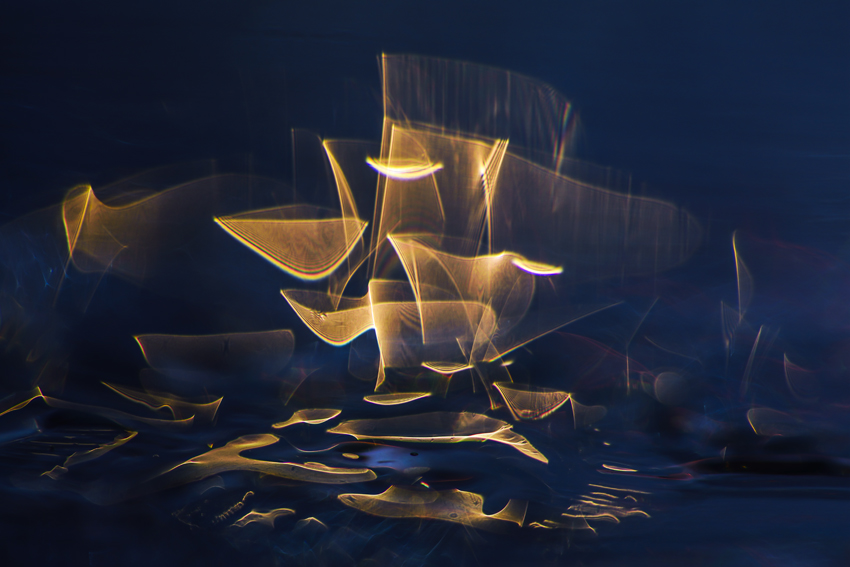
(Art Photographique d' Interférences).
Added to this are all the possibilities of camera settings and the distortions of its optics, which will further modify, distort, the reading of this response. In short, the photographer merely reads and captures what appeals to them, excluding all other responses, to ultimately show only an inadvertently "partisan" version of their affinity with the reality of the moment they immortalize with their shot. Therefore, I adhere to the view of some of my peers who see every photograph as a lie, at least by omission.
.jpg)
(Photographic Art of Interferences).
So, if we are to create "lies of light," we might as well create beautiful lies, motivated by good intentions and love for one's neighbor, akin to a December 25th that inspires wonder. "Oh, oh, oh." So, I fully embrace this lie, going even further into "misinformation for aesthetic and reverie purposes," by choosing to act upstream, on the lighting of the scene, to ensure that the luminous question posed is even more "oriented and closed."
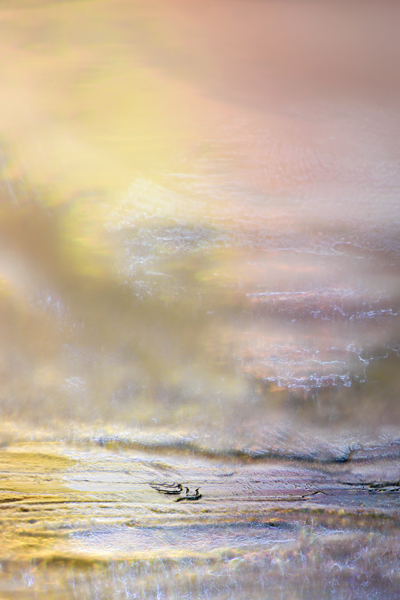
(Photographic Art of Interferences).
This entire process amounts to imposing "a sorting chain" and deprivations on light, until completely distorting and disguising the luminous response from the physical reality of the scene, to the point where the image obtained "at the end of the chain" may have nothing in common with what is present in front of the camera lens. This transformation then has the effect of image synthesis. This approach is also part of my use of Photographic Art of Interferences, as in the example below.
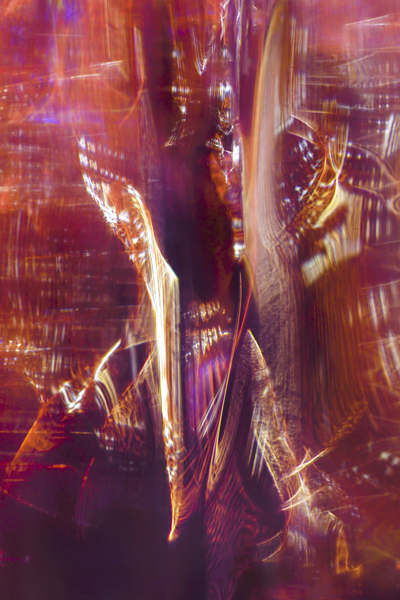
(Photographic Art of Interferences).
But if the goal is to mislead the viewer, it is not to deceive or trick them; quite the contrary, paradoxically, it is to invite them to free their gaze and allow for personal interpretation, by "breaking apart the reality that tends to confine the mind."
his is how I end up photographing imaginary cities and planets, and "virtual paintings", as shown below.
Here, a planet photographed without a telescope, since it never existed.
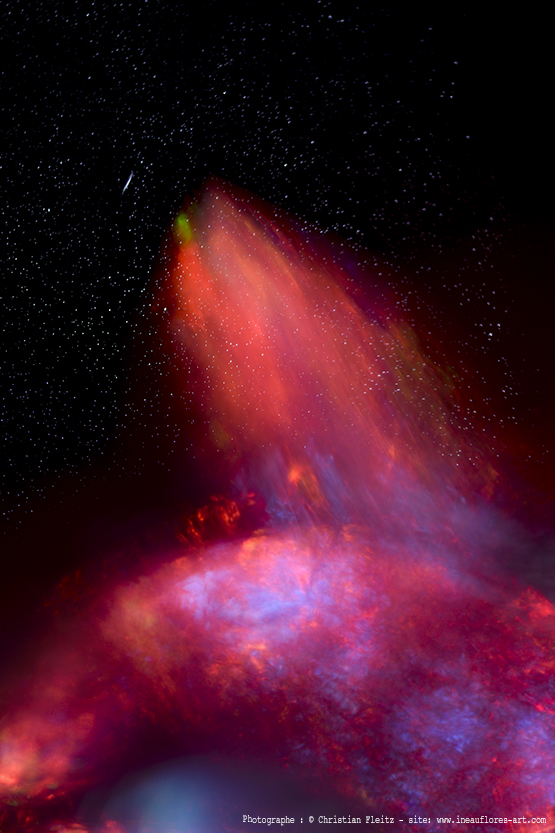
(Photographic Art of Interferences).
Here, an imaginary city made of light interference.
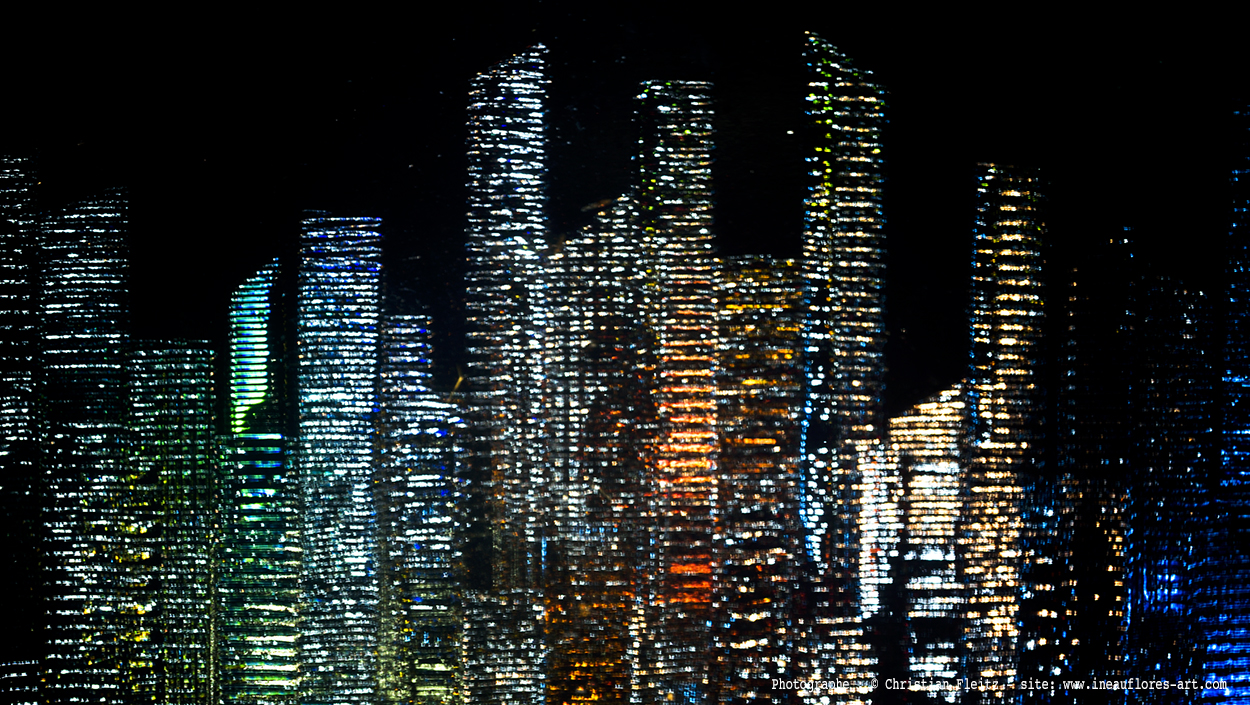
(Photographic Art of Interferences).
Here, an imaginary sky obtained with Photographic Interference Art.
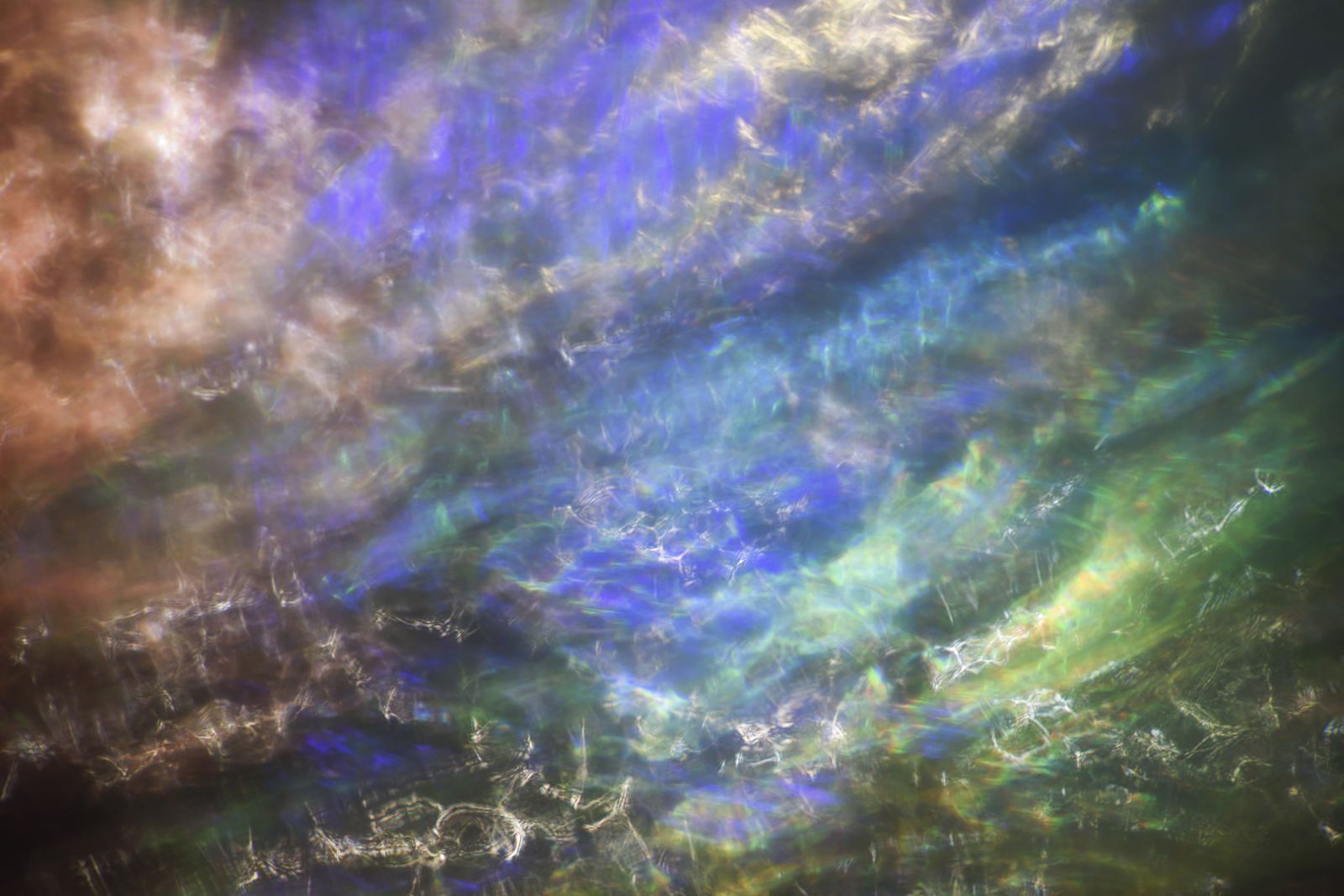
(Photographic Art of Interferences).
.png)
AN ABSURD ARTISTIC APPROACH?
.png)
ART, SCIENCE, MAGIC,
AND PHOTOGRAPHIC CONCEPT
OF A DREAMER.
Today, my work primarily aims to explore new artistic avenues by attempting to expand the creative scope of photography to "what does not exist." Wanting to photograph what does not exist is absurd in principle, but it also means refusing to believe only in the minimal vision that our biological eyes are capable of, which is so little of the reality in which we live.
.jpg)
(Photographic Art of Interferences).
This awareness of "the extent of our blindness when we see very well" then invites us to try to expand our own field of vision and our ability to see more things, through various strategies. This can be achieved with our own eyes and attitude, sometimes with a material interface that allows us to see differently, such as a simple camera, a telescope, a microscope, or indirectly through deduction, by linking effects and causes, and by allowing interactions between various notions from all sides.
.jpg)
(Water Drops).
So, I had to learn more, learn from others and other disciplines, learn to break down the barriers of my photographic practice, after understanding what is not always seen as obvious: to innovate in photography, I had to first become interested in everything except photography.
.jpg)
(Photographic Art of Interferences).
Here, the strength of the creative artist trying to meet the challenge of capturing "what does not exist" lies in a community of ideas derived from arts, sciences, and even a bit of illusionism. In the end, it's a completely crazy puzzle, which also had to draw its pieces from a (very) long quest and reflection, a content recurring for millennia, probably a necessary step for all creators.
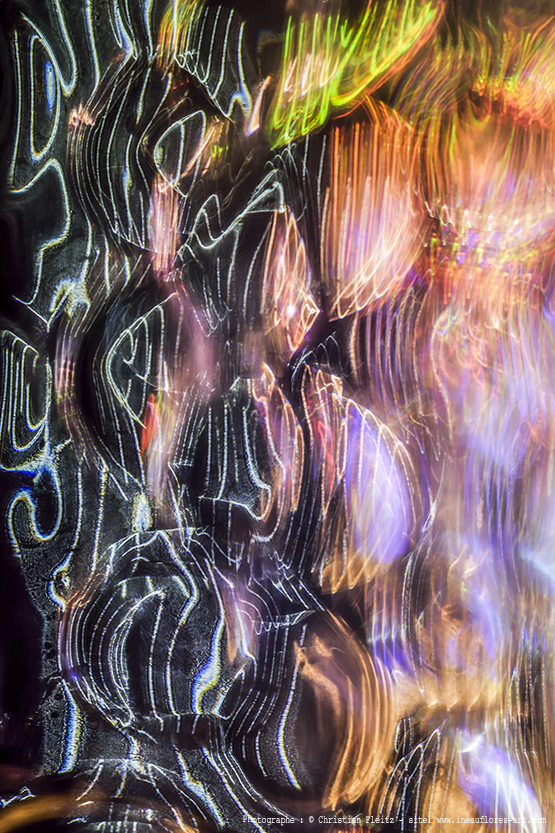
(Photographic Art of Interferences).
This reflection, this puzzle, sometimes gets lost in philosophical and metaphysical considerations, as it concerns the interaction between the conscious and the unconscious, perception, learning, modeling, and projection through a mental representation called an idea... What is an idea in reality? What are its implications in real life? How can one nourish its soil to make it increasingly fertile? Like the fox and "The Little Prince" by Antoine de Saint-Exupéry, can one tame the idea that is wild and independent, so that it comes more easily and responds more naturally to our call?
(4).jpg)
(Photographic Art of Interferences).
This puzzle ultimately required over a decade of writing and assembling before even the outline of a structure, a construction sufficiently readable to discern meaning and a path to follow, starting from the indefinable intuition of the human person, and then reaching a complete, describable, and reproducible process capable of allowing the conscious construction, day after day, of another photographic approach.
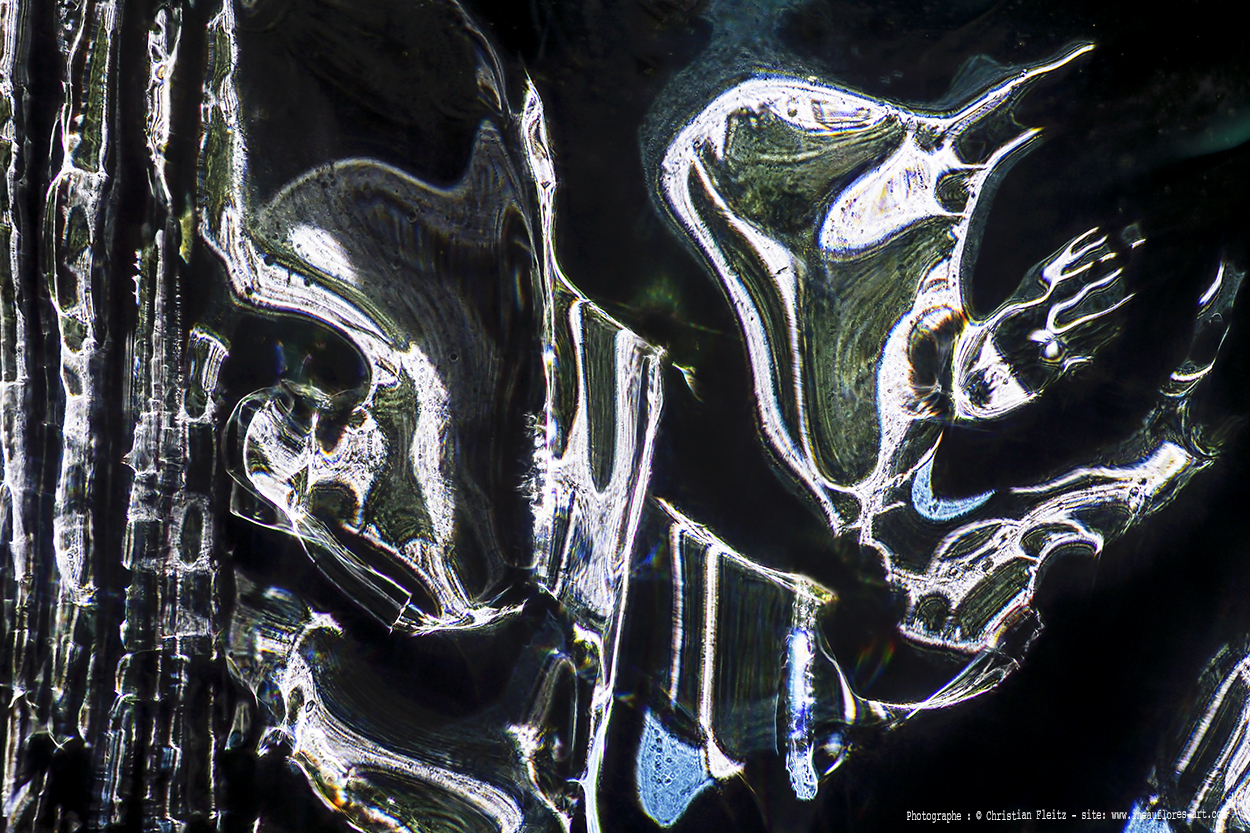
(Photographic Art of Interferences).
Because wanting to "photograph what does not exist" requires developing as many new shooting techniques as there are artistic themes to be addressed and aesthetics to be realized. Moreover, when one wants to go even further in the quality of their works, it becomes necessary to design prototype equipment to facilitate creative work while improving the technical quality of the shots. Equipment that must also pave the way for new applications
.png)
When music inspires images.
.png)
MUSIC AND LINE,
AND THE MUSIC OF LINE.
IImage and sound are inseparable. The words that speak of music are also those that speak of images... Harmony, clarity, movement, rhythm, resonance, chord, dissonance, and so many others. So what could be more logical than wanting to make my photography a natural sister to music? What could be more natural than wanting to strengthen this fraternal bond and build the photographic image on the model of music, right down to its relationship with vibration and its mathematics? (Below, a harpist and her instrument).
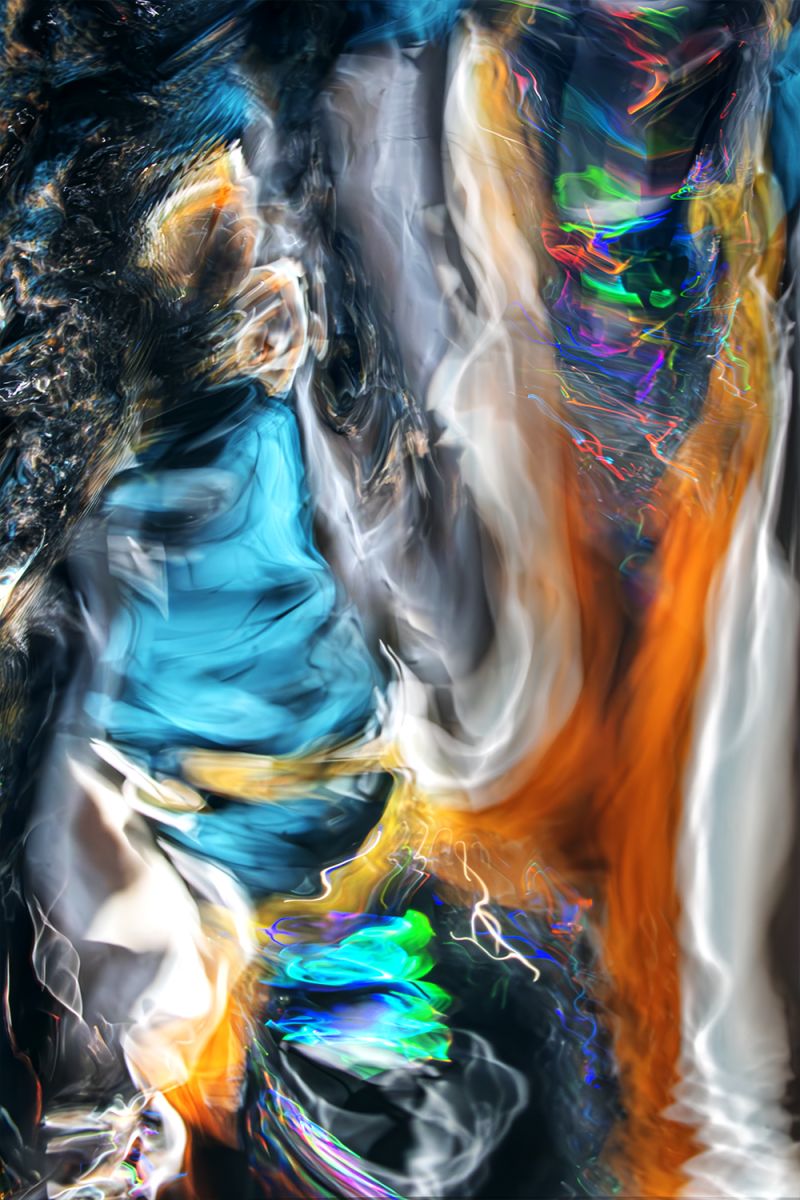
(River photography).
But for me, there is no question of posing any equations, as I have never had the required level of competence in this matter... Therefore, in a few years, I plan to collaborate with a mathematics expert to go further and model my processes. For the moment, learning from experimentation, general principles, and history is already sufficient to fuel my journey. So, I limit myself to essential notions and the history of the "construction" of music, which, in my opinion, is a universal model that can surprisingly be applied to all disciplines...
.jpg)
(River photography).
Because I learned that long ago, the vibration of a bowstring would have produced a vibration, a sound. Over the centuries, this sound would have been developed in several dimensions. First scales, then melodies, then harmonies. The declination, multiplication, juxtaposition, and mastered arrangement of this simple vibration, this "fundamental building block," ultimately led to today's music, capable of making us feel emotions, feelings, even "touching our soul."
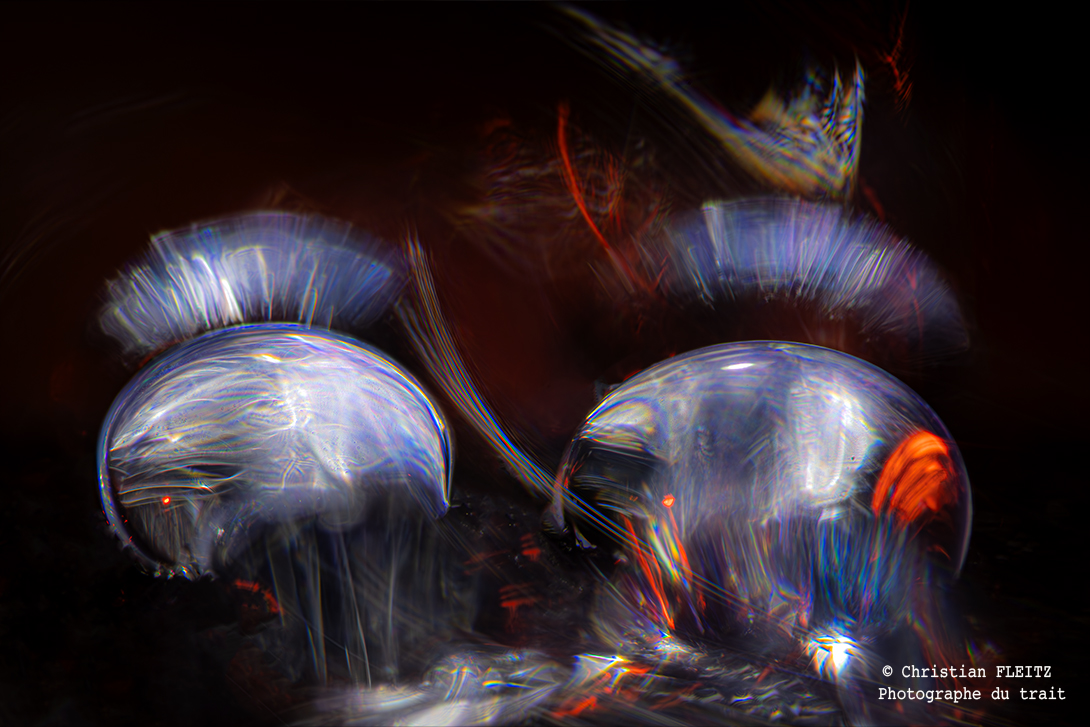
(Gouttes d'eau et interférences).
(Water Drops and Interference).
From a purely materialistic point of view, the simple vibration of a string has ultimately led to the birth of an entire "music industry" (a formulation that will always make me "sick to my stomach", by the way).
So a simple physical event can be turned into an industry. The same could be said, for example, of electronics, with the "transistor effect", which gave birth to the semiconductor industry, allowing the power of computing to "explode", and digital applications in all fields to revolutionize our world!
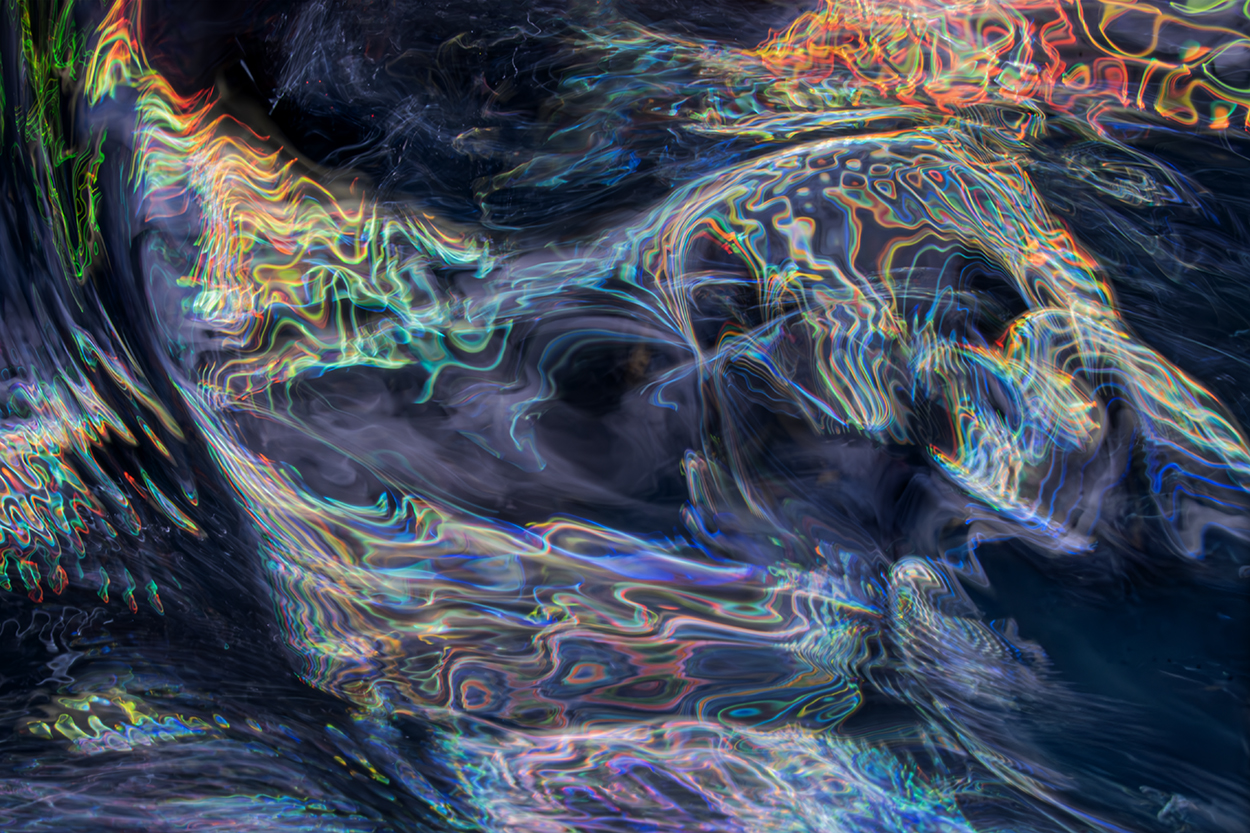
(Photographie de rivière).
It is probably for this reason that I attach so much importance to what is seemingly unimportant. Especially when one has witnessed firsthand how "a ridiculous little drop of water" could revolutionize an individual's life (see further below). Thus, by paying attention to the "unimportant" details of some of my shots, I found my way in photography. I discovered the first symbols of "my alphabet, my written expression by light," through the image captured by the camera. Symbols that arise from vibrational phenomena, much like music.
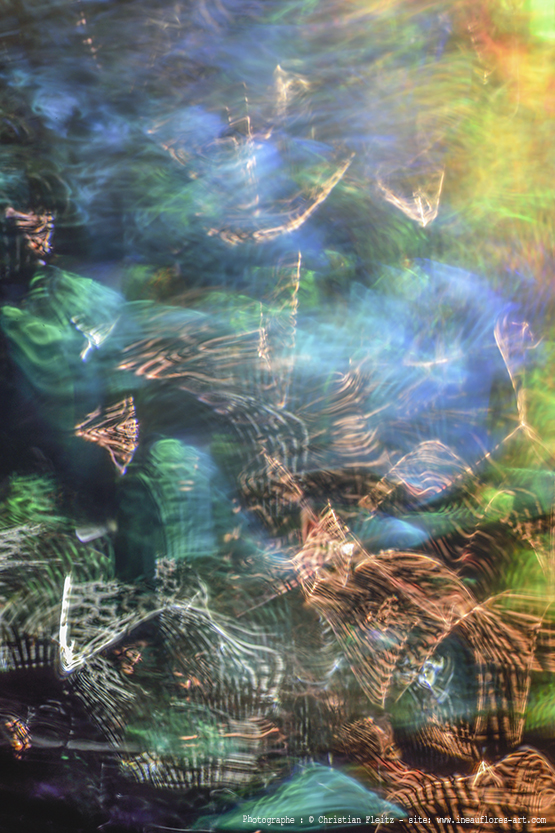
(Photographic Art of Interferences).
In music, the writing of vibration has its own alphabet. It uses notes drawn on the musical staff of a score. These notes can then be transmitted from generation to generation.
An orchestral score may appear to be just "a piece of paper with a bunch of symbols" that generally tell us very little, unless one is a conductor or a seasoned musician. But the interpretation of this score by the musicians then appears as an act of pure magic, revealing the deep and subliminal meaning of what is written in the score, which is otherwise invisible and informal, so difficult to describe, as it is actually another dimension hidden in the background, like a derivative of formulation present in any form of writing, and which then translates into the emotion of the living, felt intimately by every listener, reader, or viewer.ately felt, by each listener, reader or spectator.
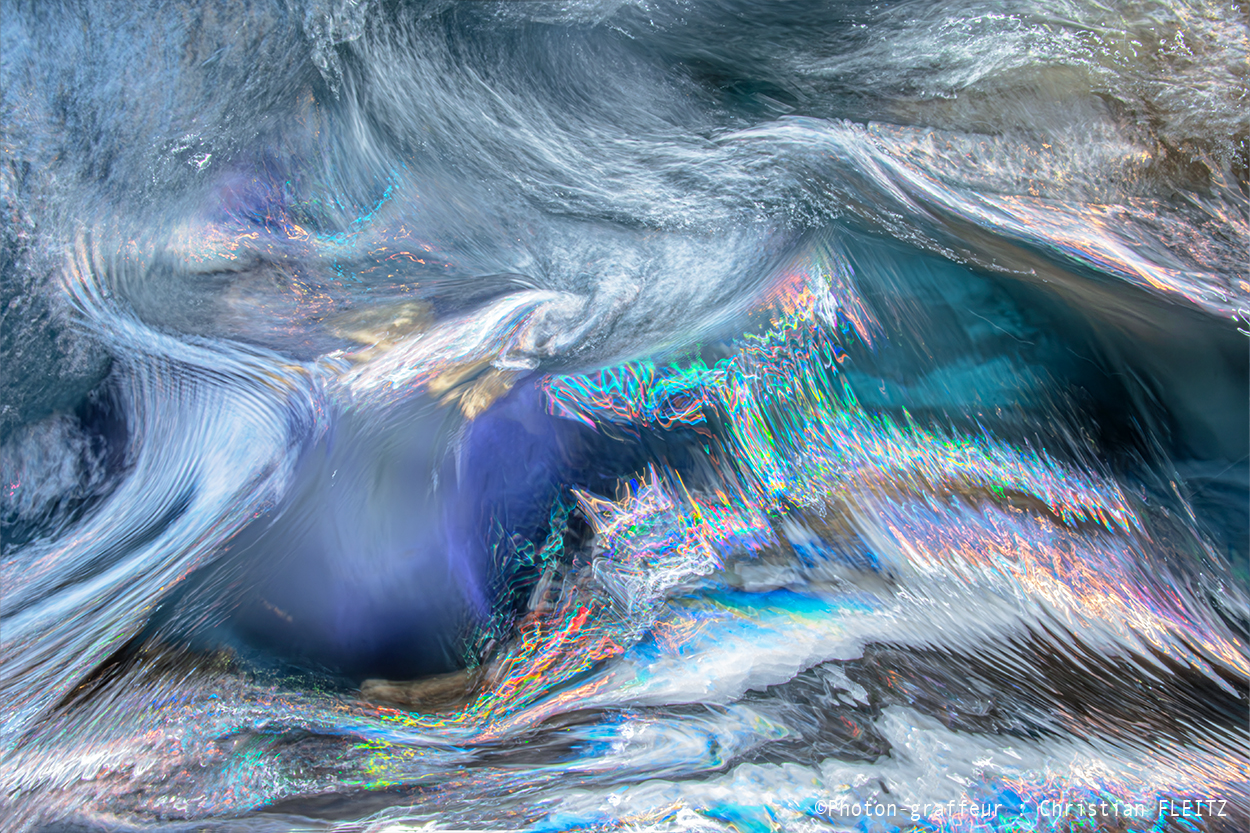
(River photography).
.png)
THE MYSTERY
.png)
One of the mysteries that undoubtedly fascinates me the most is the mechanism of converting formal writing and its reading into perception, and then into emotion, through our senses, to “common sense.”
So I live in the utopia of constructing my own writing, my own semiotics of the image, by declining the streakof light in several dimensions, up to that of emotion, hoping to obtain from the image, and from the fundamental brick of the line, stemming from vibration, the vibration of the spectator himself, who would then enter "in resonance with the image", just as we perceive music.Ultimately, there's nothing truly original about it when one realizes how much, and for how long, image and sound, as well as what animates the human body through "emotion," are intimately linked by vibration.
.jpg)
(Photographic Art of Interferences).
If this goal is therefore illusory, given how the project touches the infinite, the hope of this "promised land" nonetheless carries and transcends me, until I dare to finally be myself, that is, a unique individual, just like each of us is, but with the great privilege of no longer having to renounce it, to finally savor it, and try to make something out of it, here, a personal photographic style, between musical composition and image composition, through an attempt to "transcribe my DNA" into my works....
.png)
FROM PIXEL TO STROKE
.png)
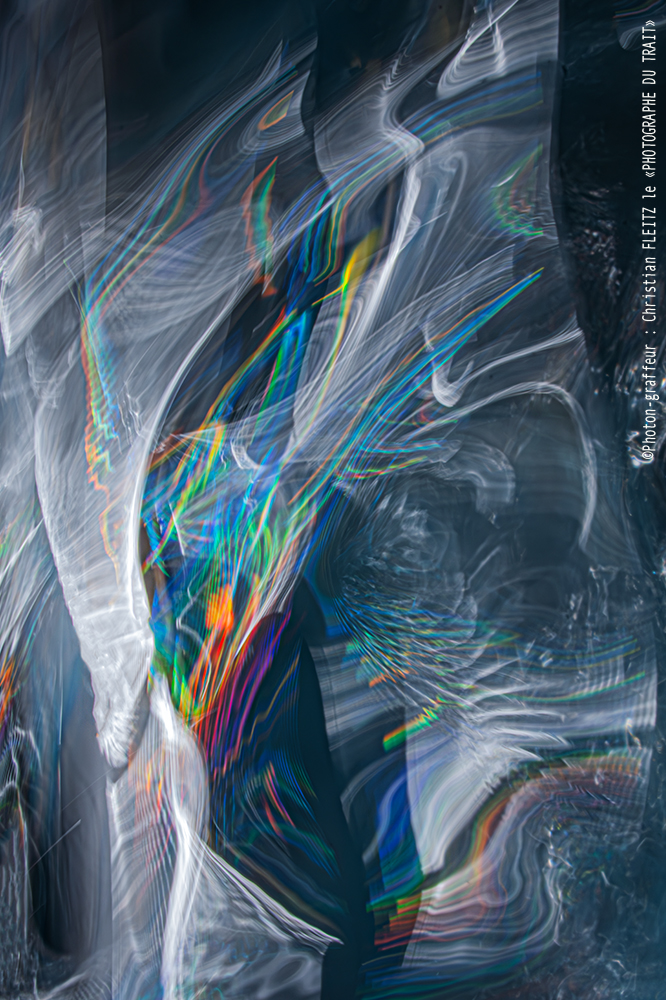
(Photographie de rivière).
It is in this context that, conceptually, as a photographer, I needed to change my "fundamental building block" to build something else. I needed to "move from pixel to stroke." "From the pixel" that is there to testify with the greatest possible precision, especially in the context of reporting, "to the stroke", which links with movement and vibration, but also, "to the stroke", which is there to organize the deliberate loss of information and free the space of dreams, far from the precision that can trap the mind in the duty of a just and unique interpretation.
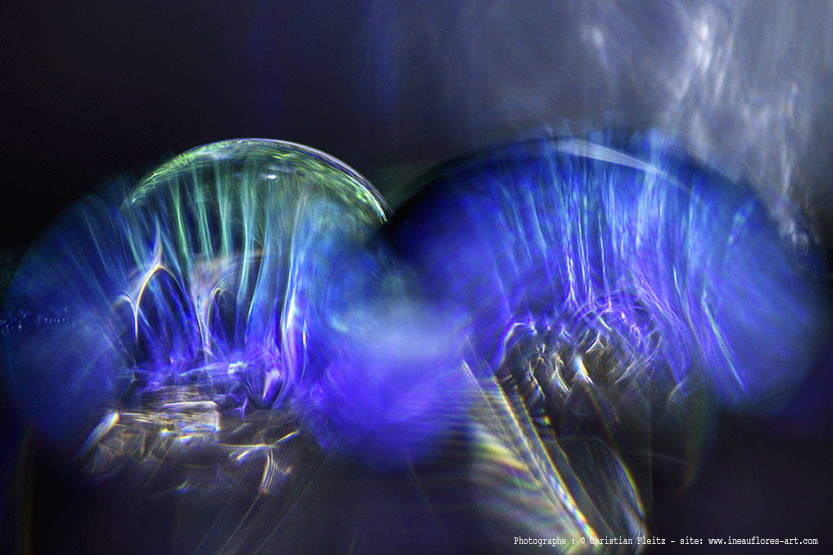
(Water Drops and Interference).
So I invite you to free yourselves from your obligations and to come and be mistaken with me, I mean to dream with me, in an exchange, a free and open sharing to all, and to all visions, when the dialogue begins an opening that can be summed up in two words: "It looks like..."
.
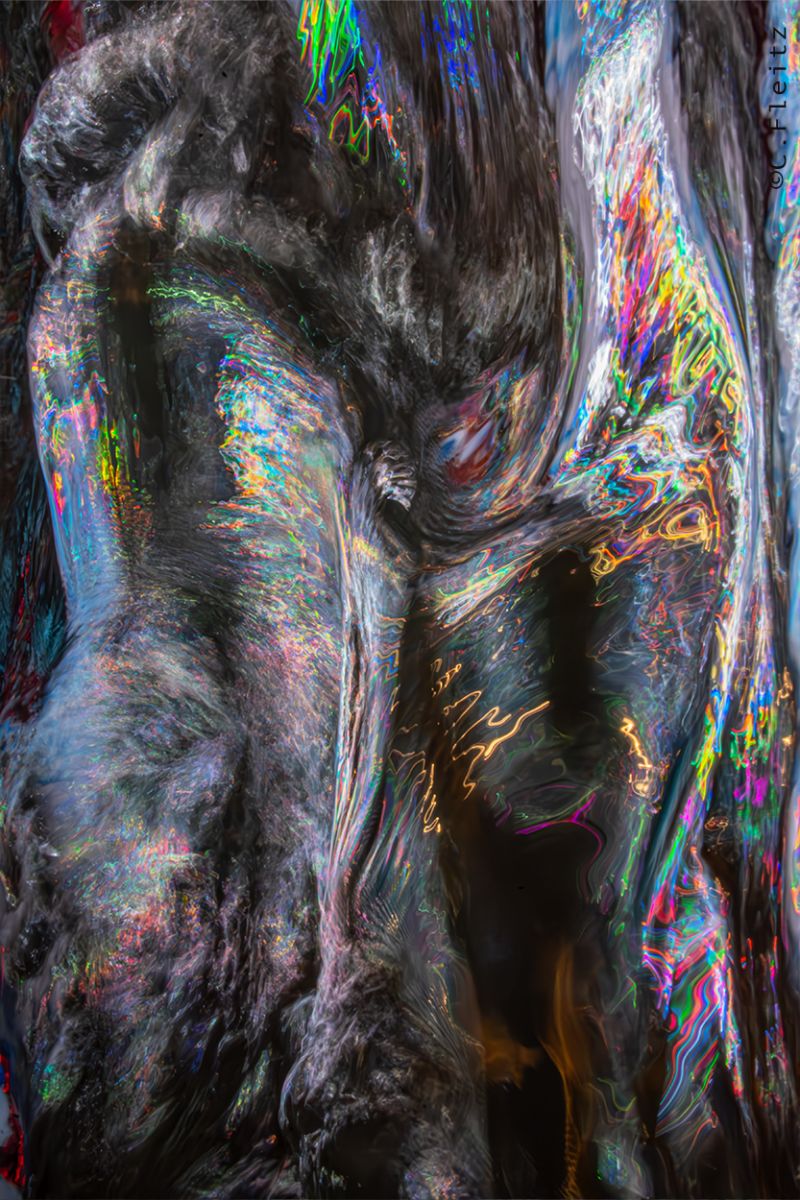
(River photography).
.png)
And for those who'd like
to know a little more...
.png)
A TRUE FAIRY TALE
OF ORDINARY LIFE
This new approach to photography was born of a walk in the countryside on a rainy autumn evening. I was walking with my four-legged accomplice. That very morning, I had bought myself a new smartphone. To test its camera, I photographed an insignificant little drop of water hanging from the end of a blade of grass.
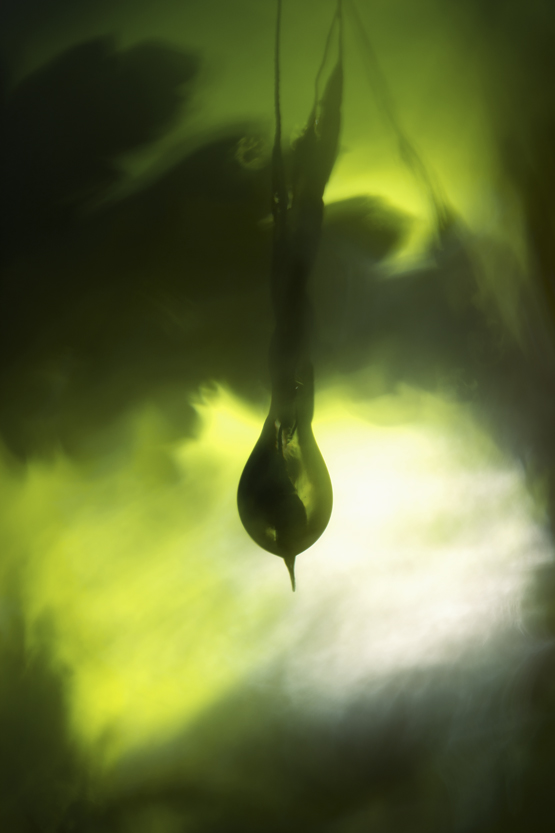
(A drop of water to change your life!)
The image was love at first sight, and this tiny little thing demonstrated to me the immensity of its magical power, as it truly offered me a second life, totally unexpected, surreal and exhilarating. Since then, day after day, she has tirelessly brought my imagination to new heights!!
.png)
A word about background
and motivations...
.png)
FOR THE LOVE OF LIGHT
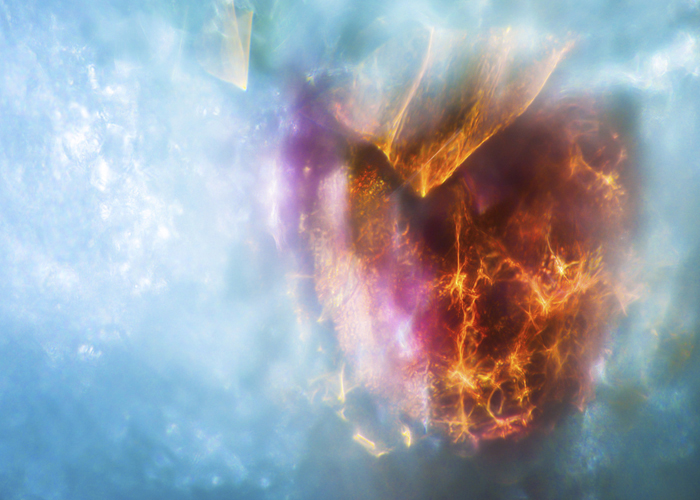
(Photographic Art of Interferences).
Today, photographic equipment and computer hardware have advanced immensely, and that's great newshave made immense progress, and that's excellent news.. But for my part, rather than succumbing to the sirens of AI and algorithms that offer us the ease of forgetting a part of our humanity, in a "preconceived and assisted creativity," I see in this technical progress an unexpected opportunity to have the means of one's own research, means now accessible to the general public.
.png)
THE LEISURE LAB
.png)
Because the so-called "ordinary" camera has become incredibly sophisticated and powerful. So it's up to us to use it differently, to make it the instrument of the "laboratory of our leisure", playing treasure hunter, in search of new artistic possibilities that light still holds in store for us, like so many pleasant surprises hidden in its physical characteristics.
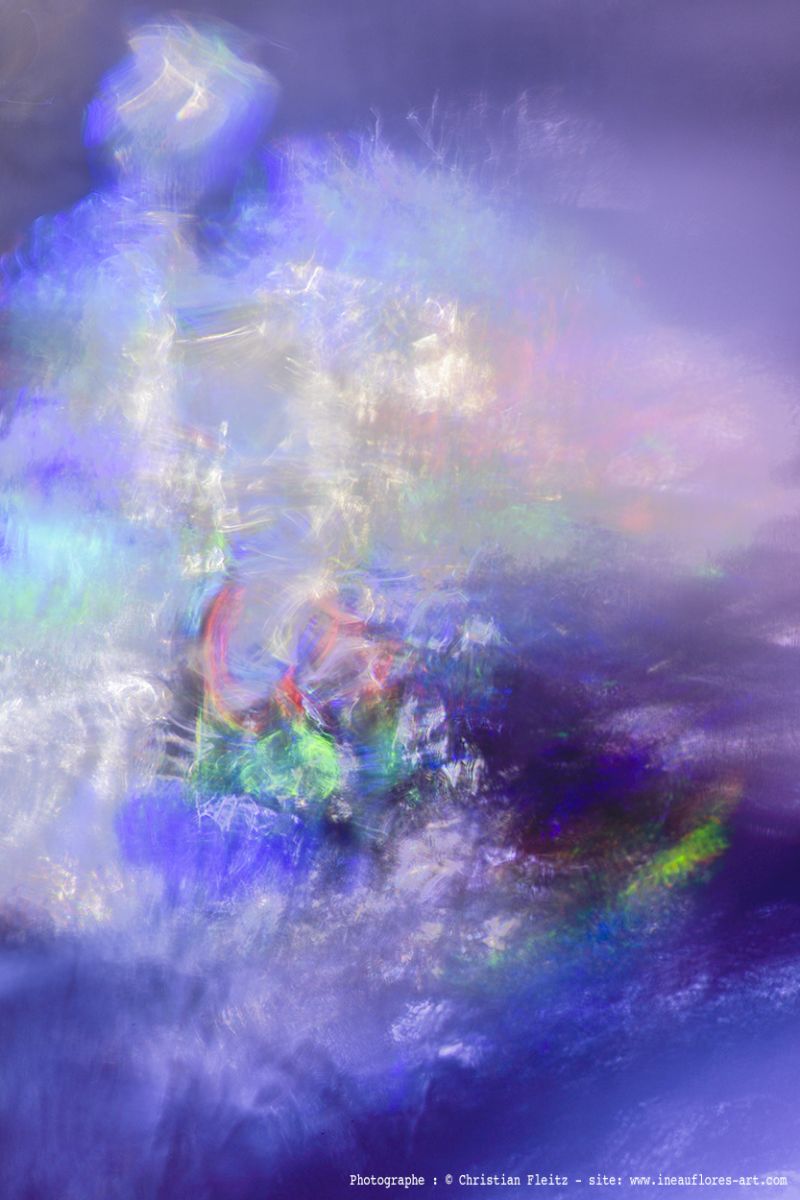
(Photographic Art of Interferences).
I'm convinced that the photon has not yet said its last word, nor is it a "has-been" in the face of the power and ease of use of the computer "bit", when it comes to producing new aesthetics.
This is what I modestly strive to show in my work, by returning to the root of my discipline, so that another tree grows, between photon and graph, far from the loop of déjà vu.
.png)
A WORK WITH A DOUBLE MEANING,
.png)
On a completely different level, as far as the purpose of my work is concerned, I'm keen to offer the viewer a kind of "shared intellectual property of the image", by cultivating doubt and encouraging misinterpretation of the visual, to make room for everyone's imagination. Because I don't want to be the author of "one-way" works where the creator imposes his vision. I believe that nothing pleases me more than the viewer who sees in my creation a part of his or her intimacy, even to the point of finding in it a little of what might allow him or her to recharge his or her batteries. That's why my works are generally untitled. It's up to the viewer to give each photograph the name of their choice, based on what they see in it...
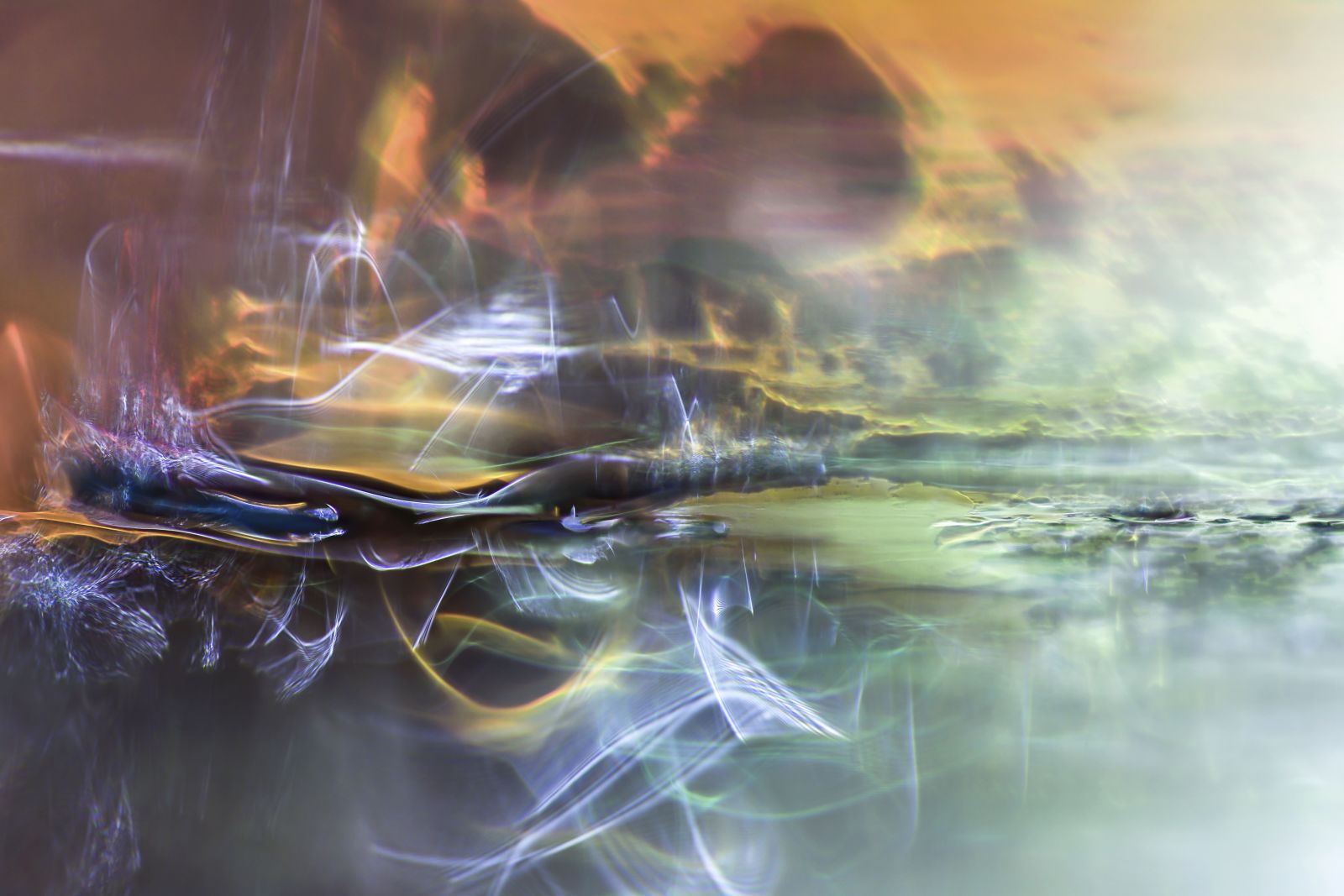
(Photographic Art of Interferences).
.png)
2012 Manufacturing technician (industry). Beginner in photography. Reading magazines.
2013 Joined "Galerie Bureau 21".
2014 Exhibition at the Grand Contemporary Gallery in Taipei (Taiwan).
2014-2015 Set aside to work
2017 Exhibition with the city of Amboise for a first "solo" show.
2018. Exhibition with the French Senate, as part of "L'été du Jardin du Luxembourg 2018" (Paris).
2019. Exhibition with the Société Nationale des Beaux Arts, as part of the "Salon des Beaux Arts" 2019" at the Carrousel du Louvre (Paris).
Becomes a member of the Italian Academy of Art: 'Italia In Arte Bel Mondo', Brindisi. "Mona Lisa Prize
Becomes a member of the Académie: 'Arts Sciences Lettres' de Paris
Admitted as a member, with the Académie's Silver Medal as his first award.
2020 L'Art Photographique d'Interférence' and the 'Autoportraits de Rivières' technique become part of the 'Historical Collection ' of the Société Française de Photographie (Paris).
Publication of artistic innovation by the Académie 'Art Sciences Lettres' de Paris
Publications and highlights
l'oeil de la photographie
September 2023
.jpg)
l'oeil de la photographie
Juillet 2022
.jpg)
2021
Académie Arts Sciences Lettres Paris
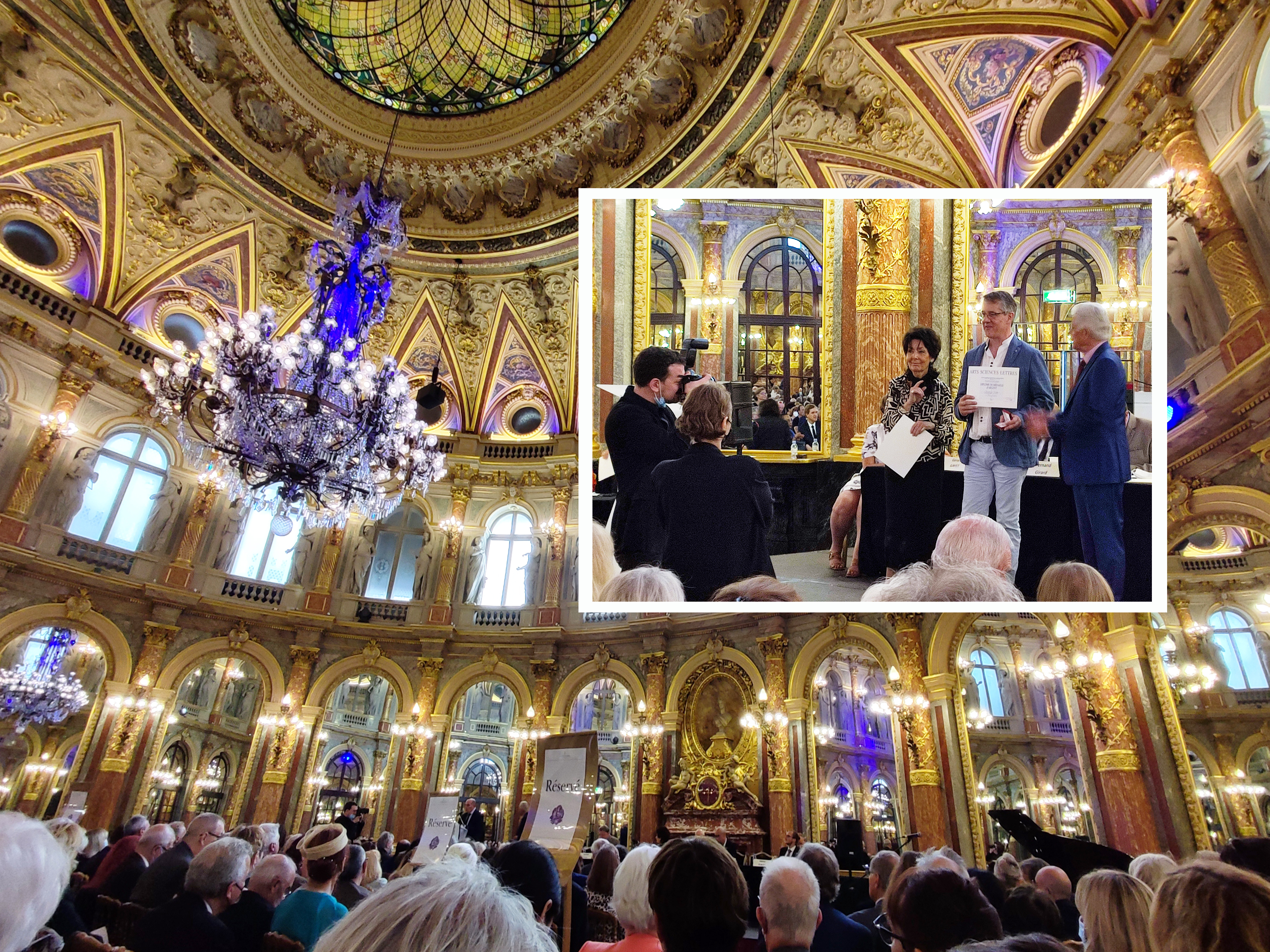
Le 04 septembre 2021 :
l'oeil de la photographie

Juillet 2021
Publication dans la revue semestrielle n 67 de l'académie
Arts Sciences Lettres (Paris)
"L' Art Photographique d'Interférences"
(plusieurs techniques)
et
"Autoportraits de rivières"
(une seule technique)
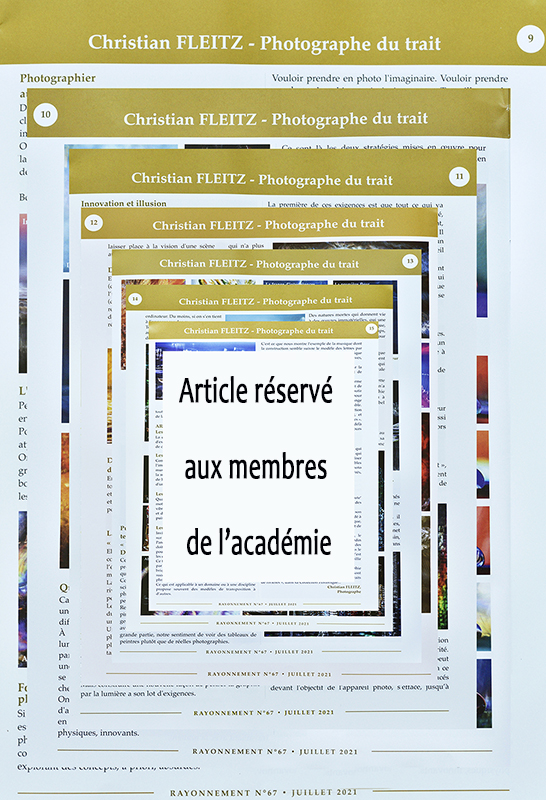
2020
Octobre 2020:
Invité de l'émission " ENSEMBLE C'EST MIEUX" FR3 Centre Val de Loire
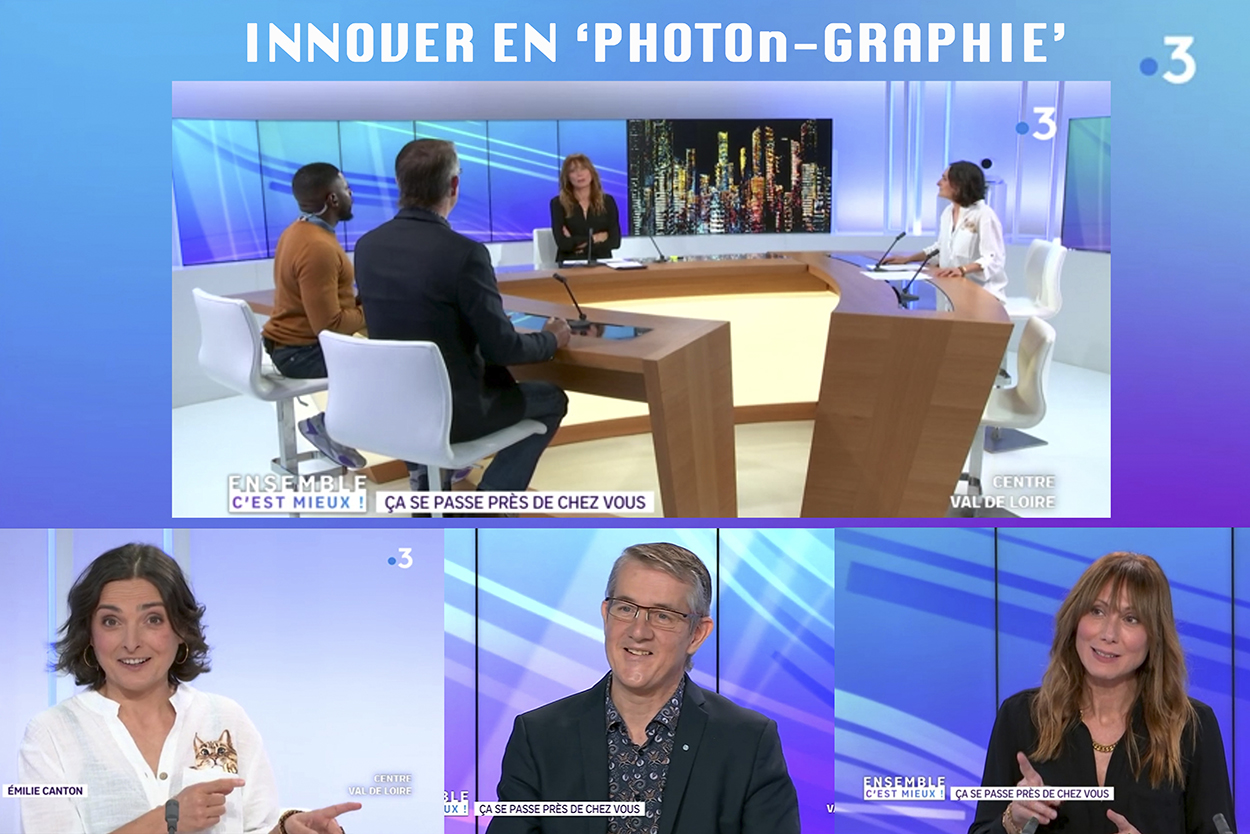
Septembre 2020
- Une publication dans la revue C de l'Art
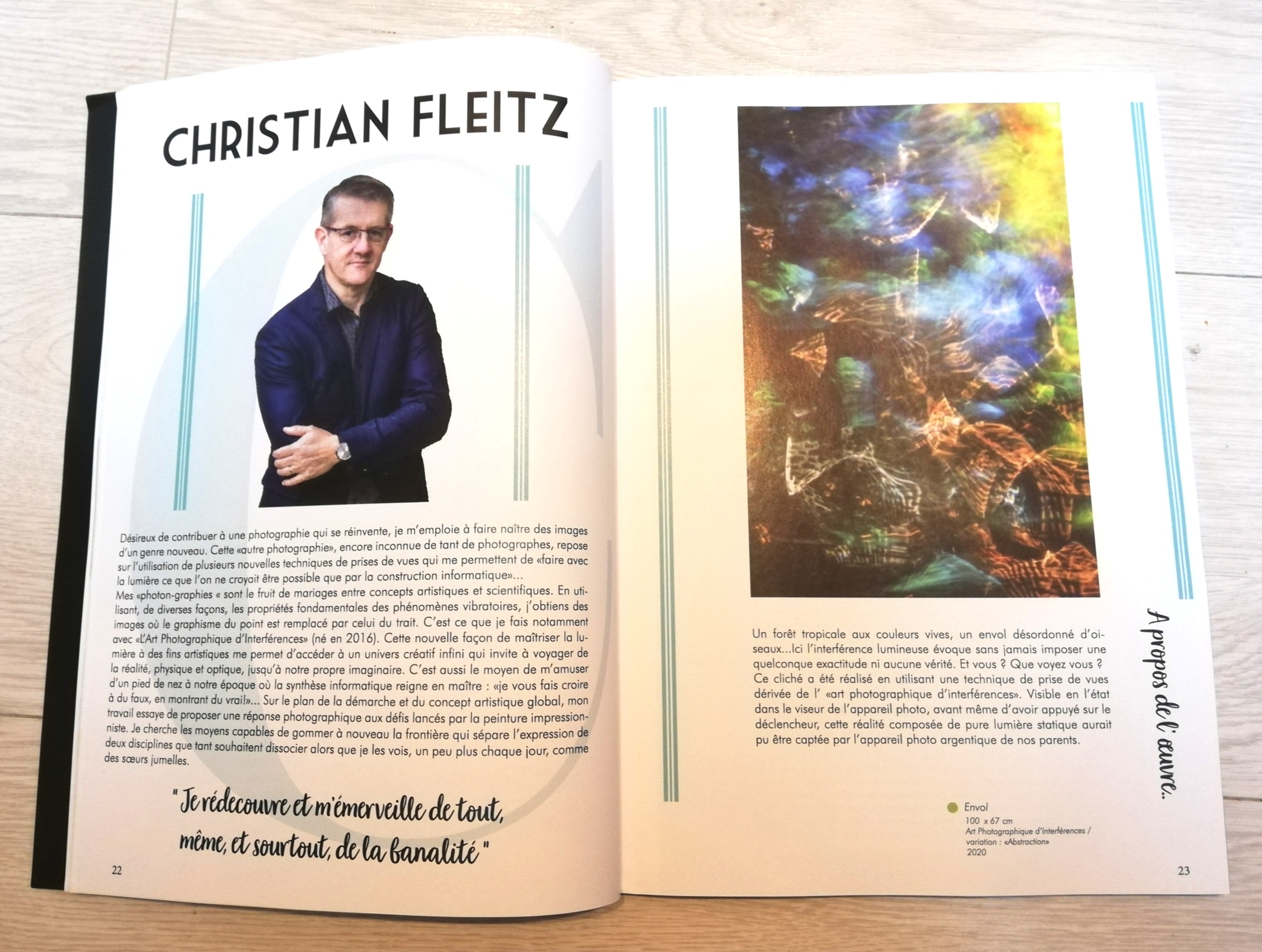
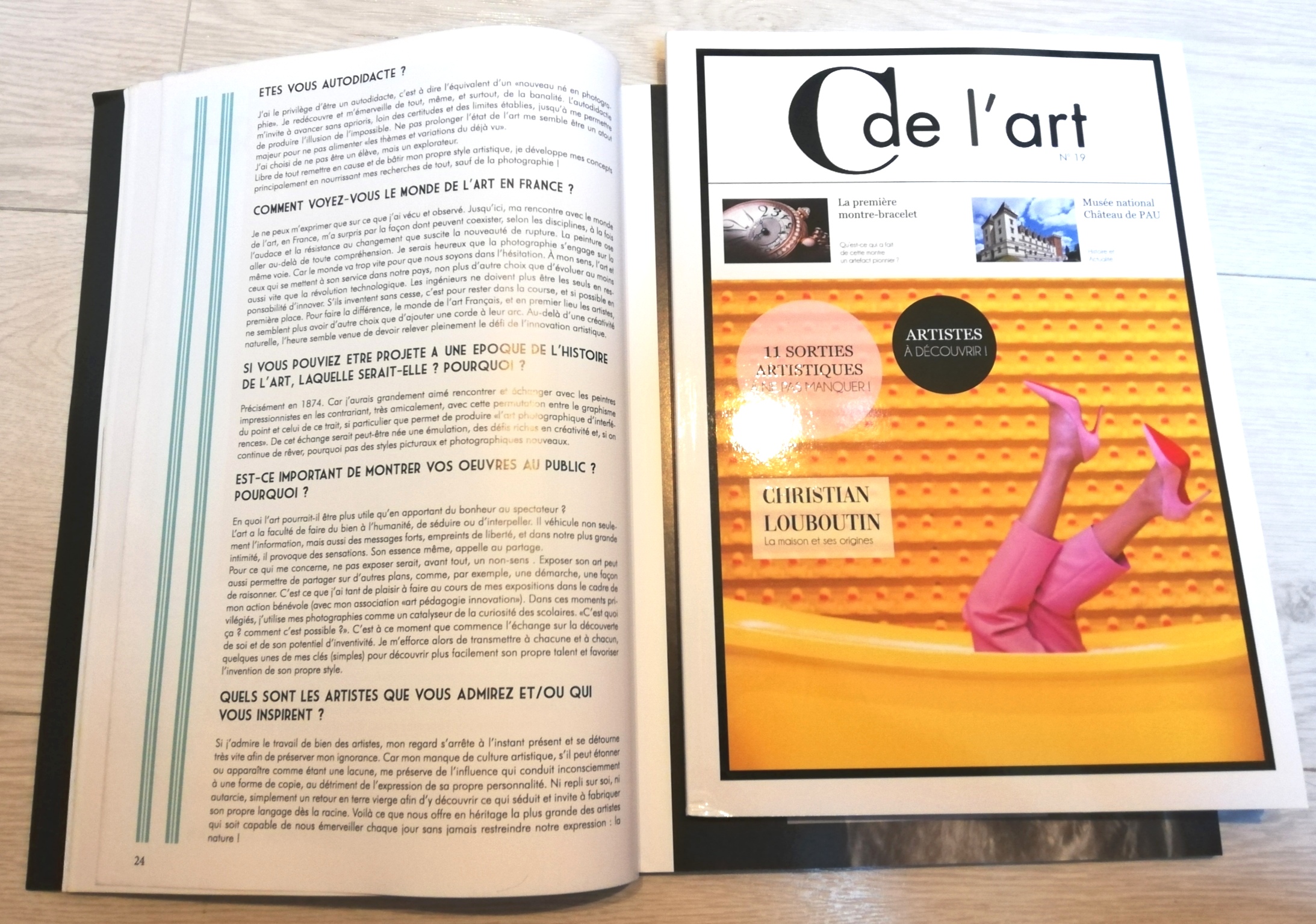
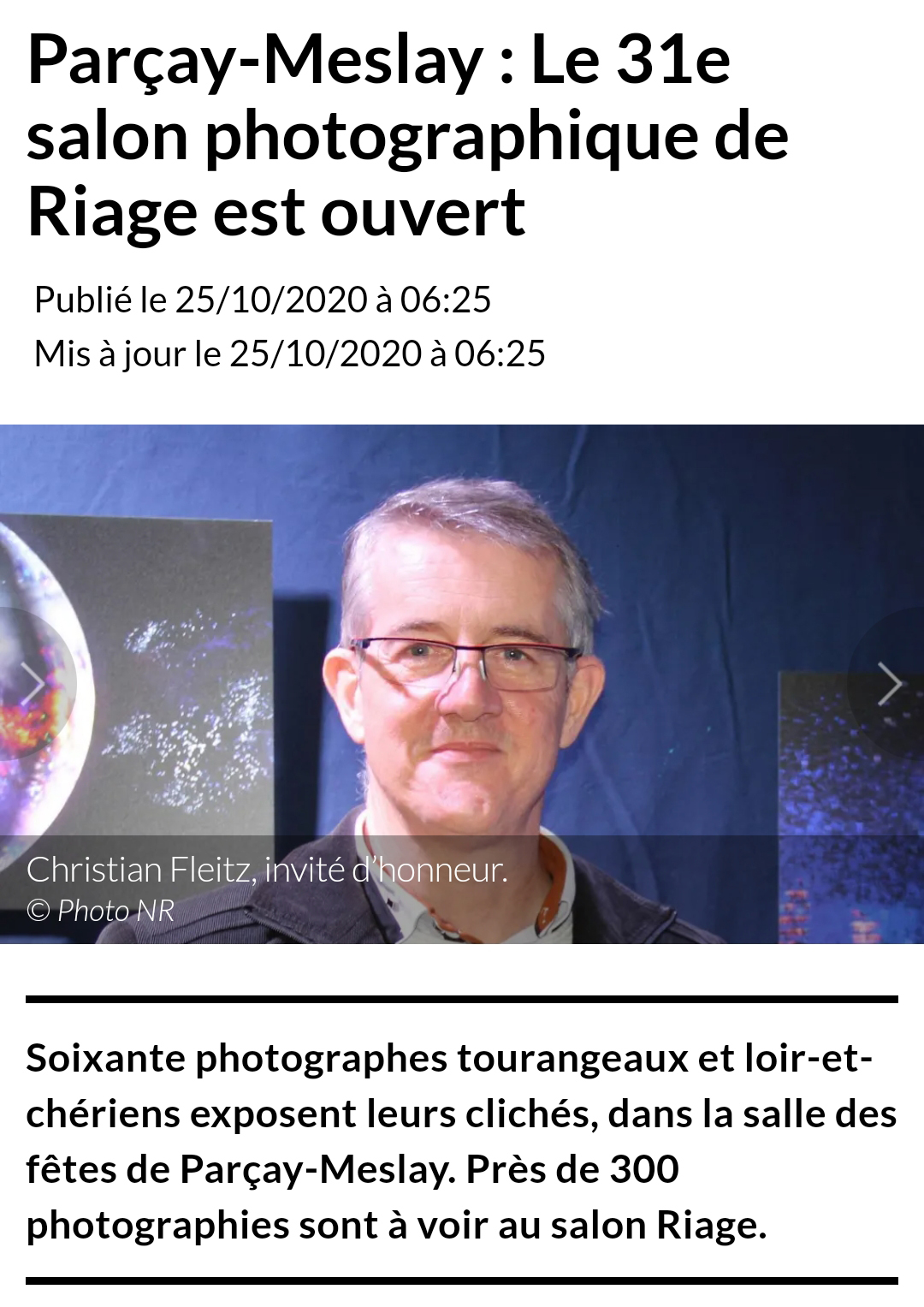
15 Avril 2020:
Invité d'honneur de la revue ART4ANY
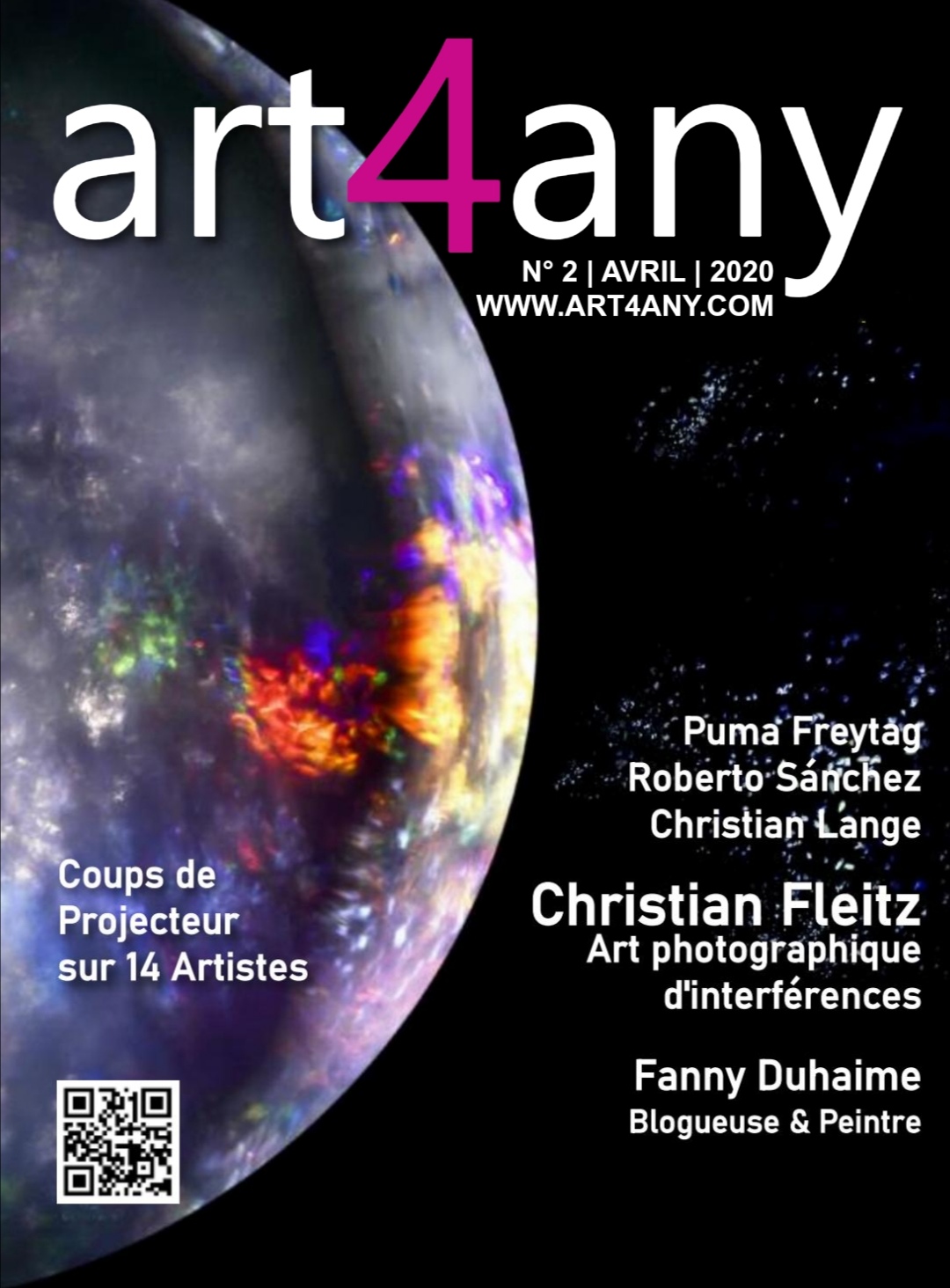
Académie ITALIA IN ARTE NEL MONDO Brindisi
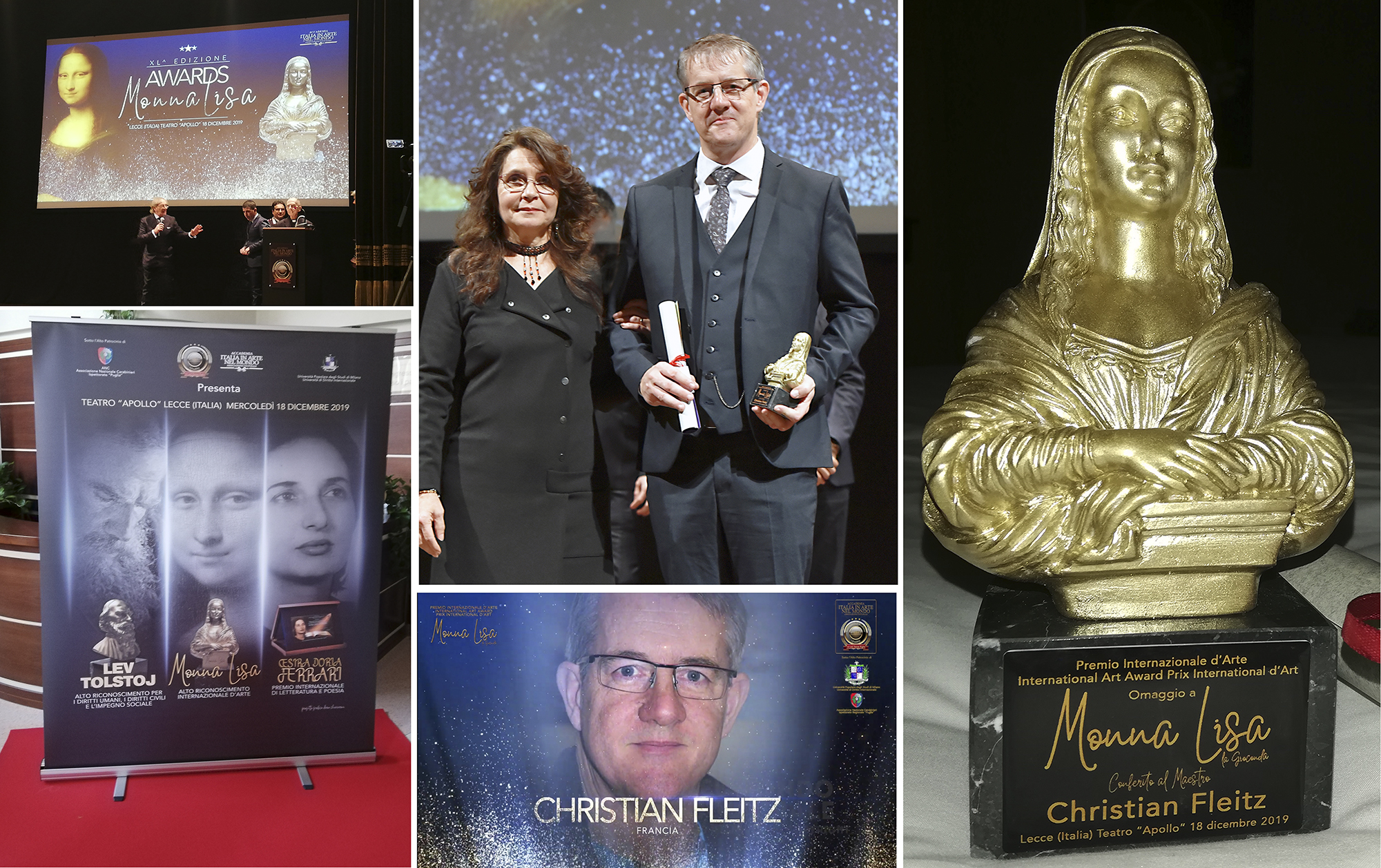
Merci à madame Maria Torrelli qui m'a fait l'honneur de me parrainer, et pour être devenue mon amie.
Décembre 2019:
.jpg)
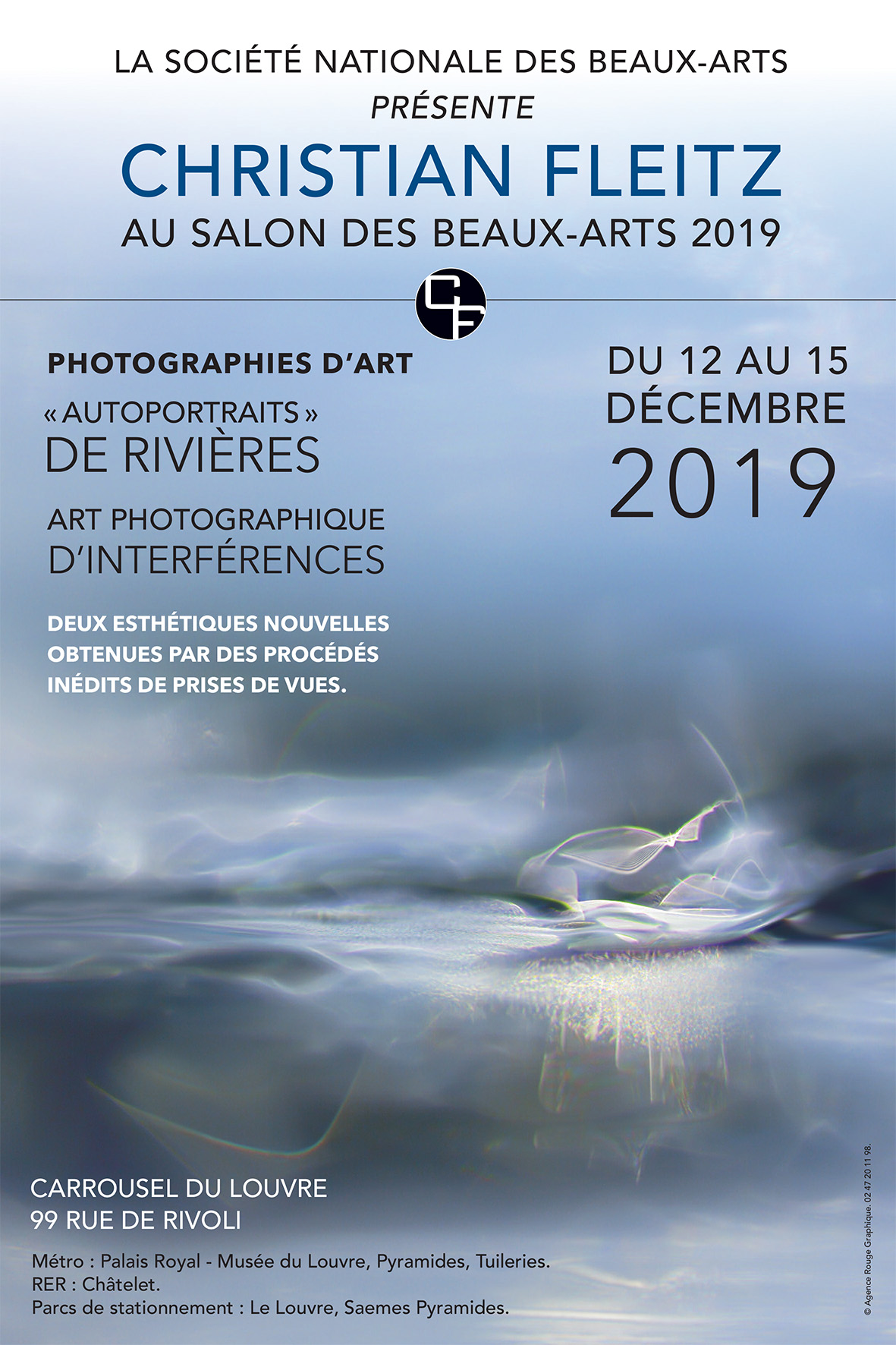
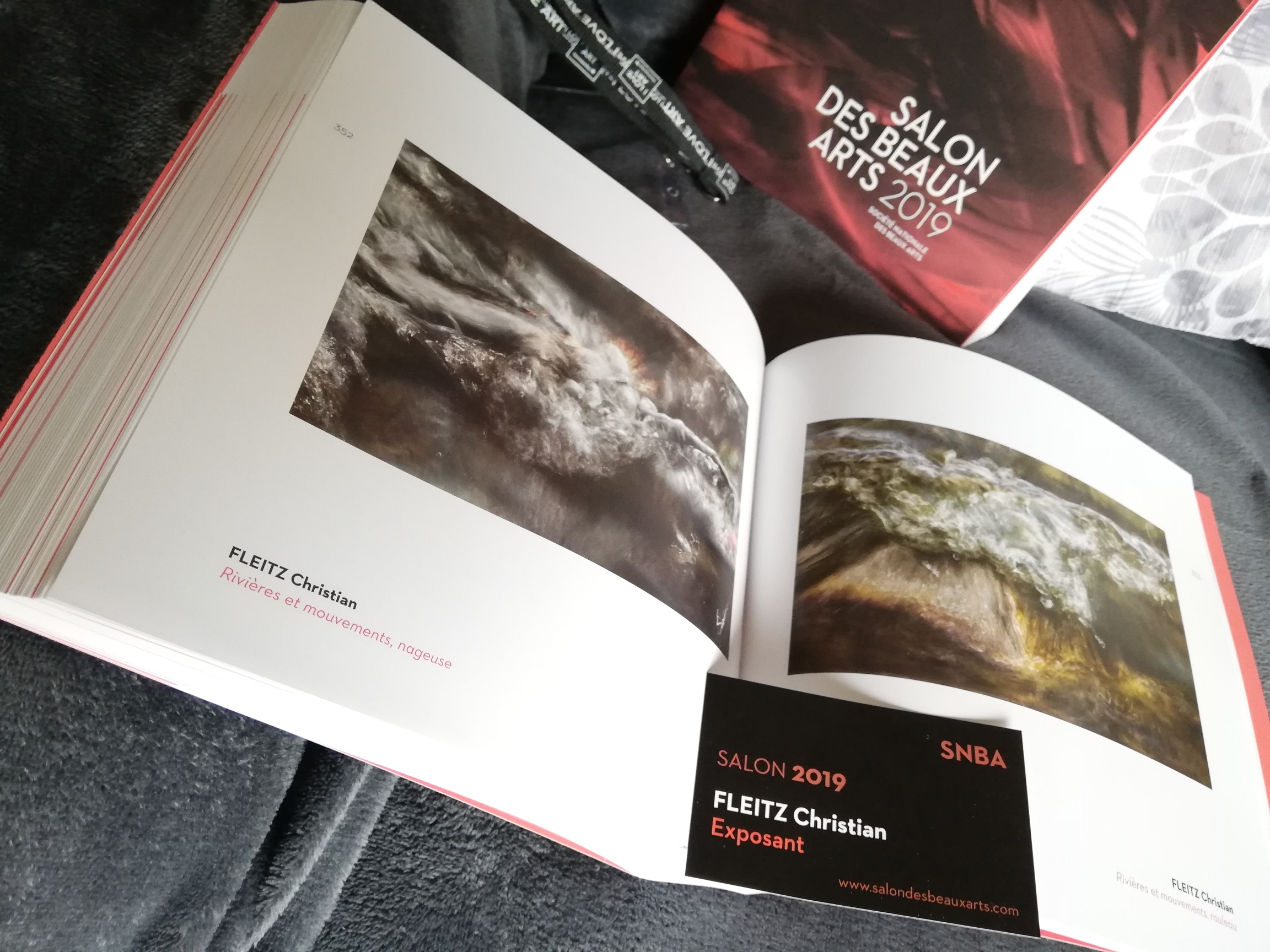
Première TELEVISION 2018
INTERVIEW FR3 CENTRE VAL DE LOIRE après l'exposition au Sénat.
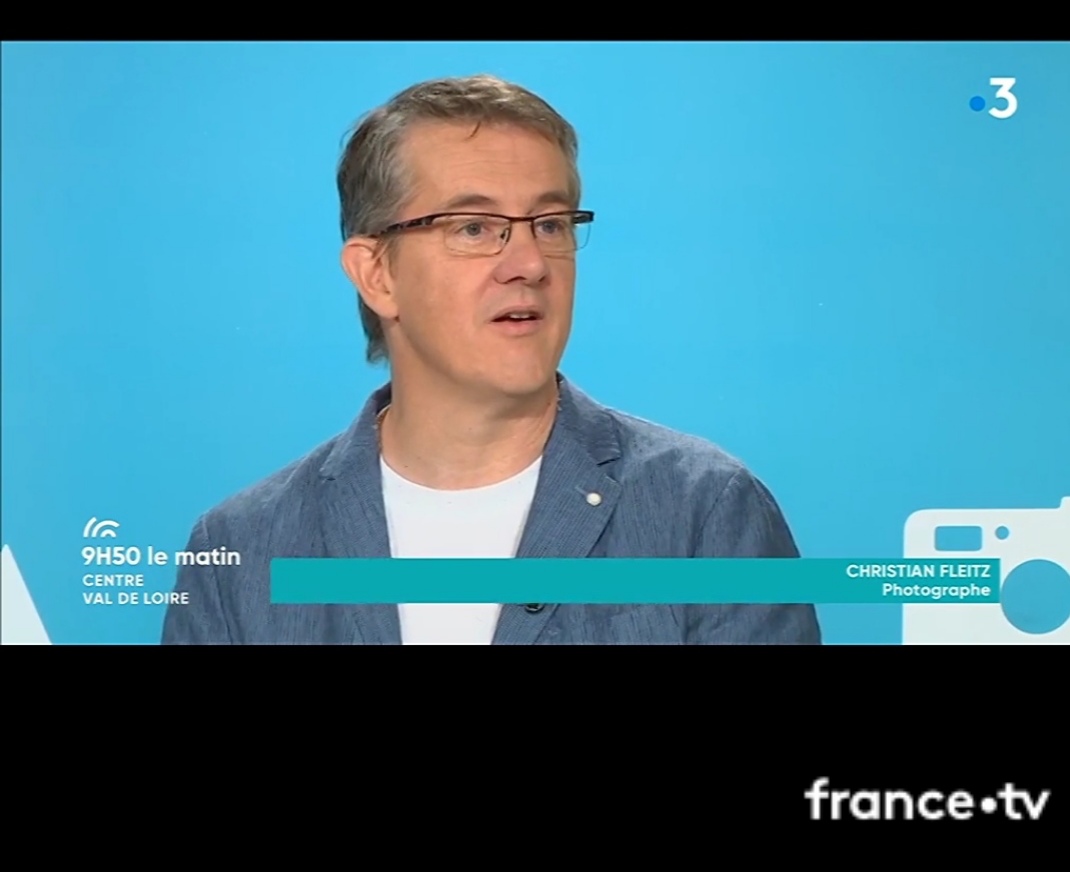
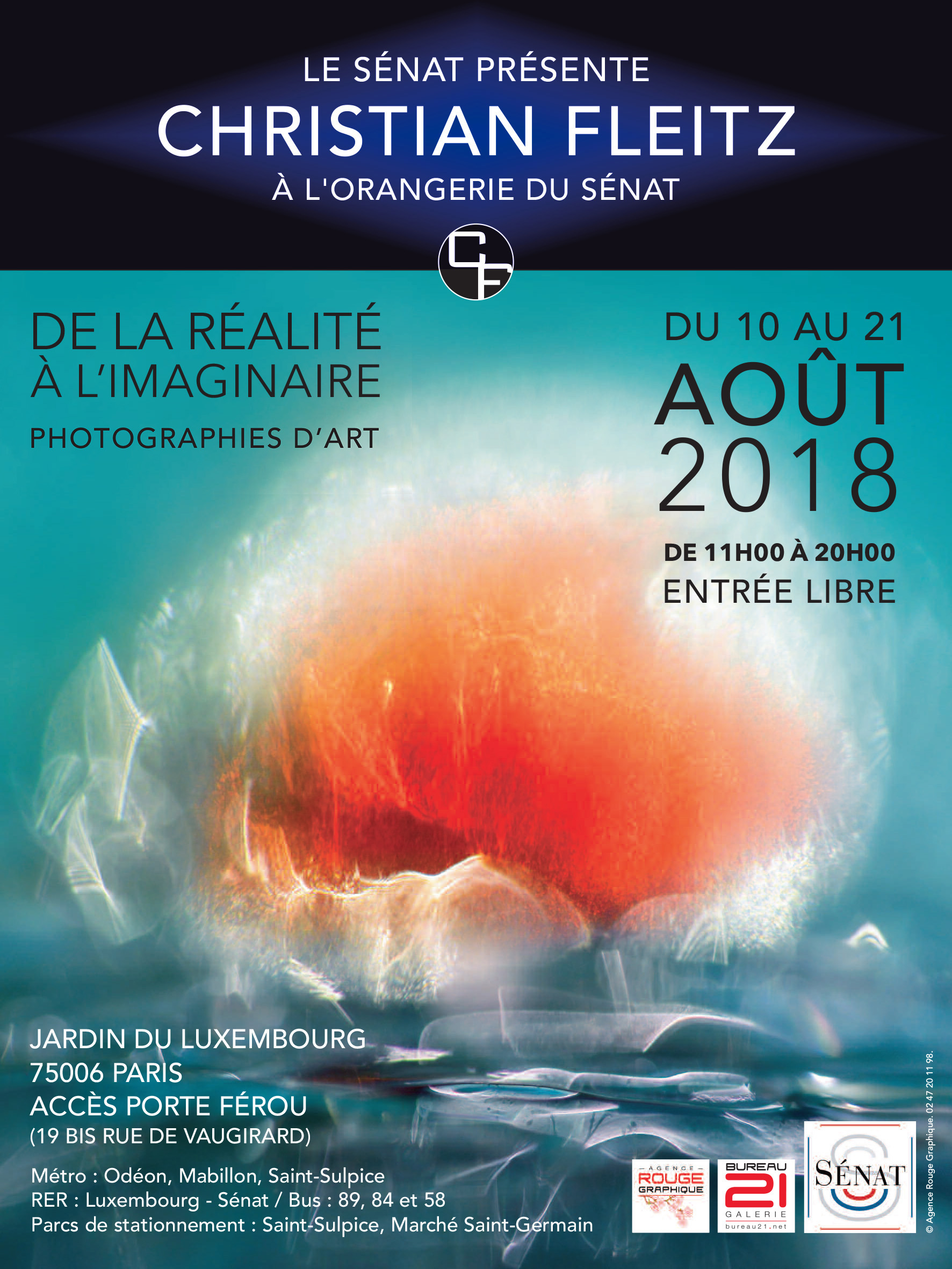
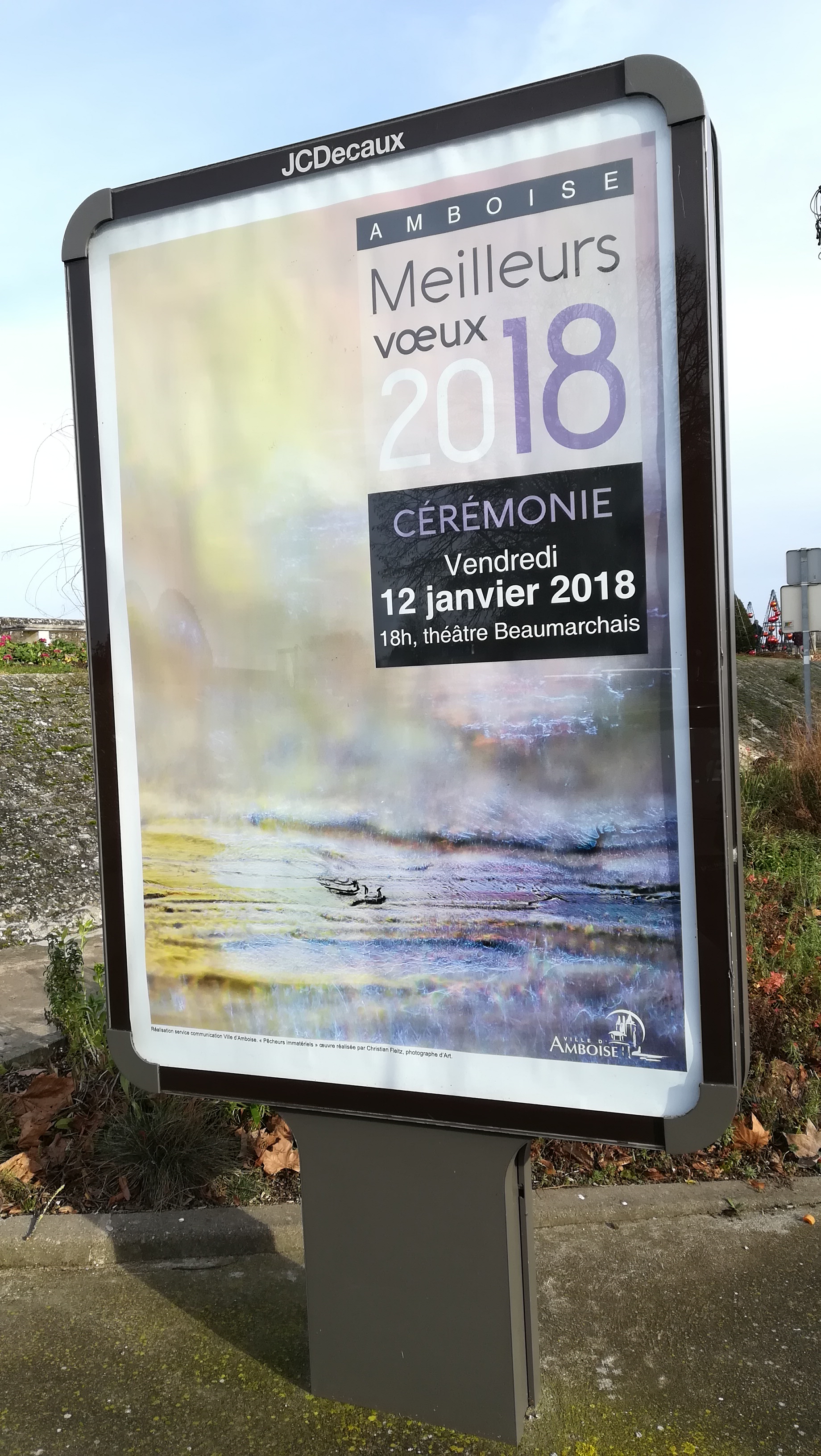
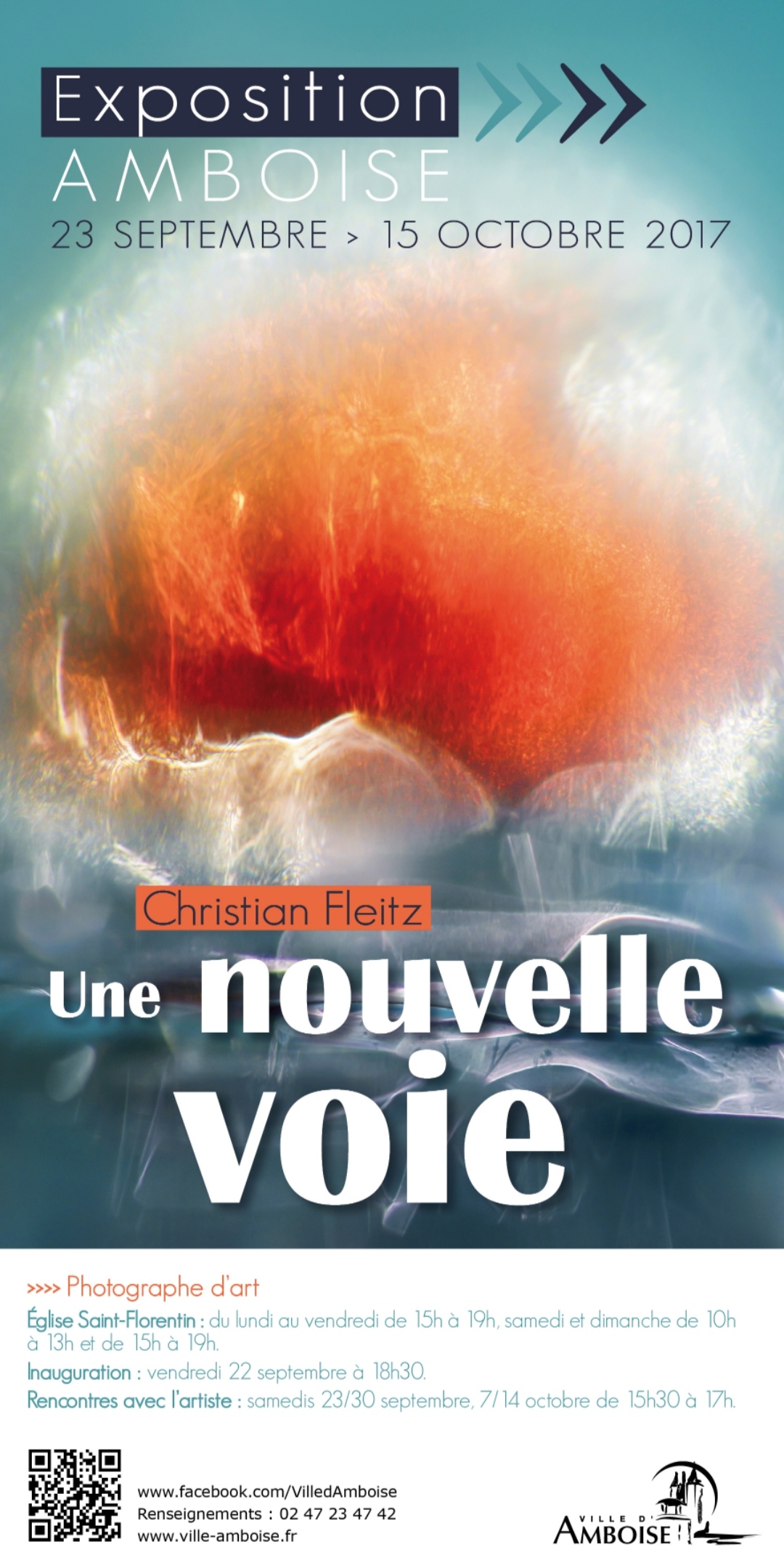
2014
J'expose à la "Petite" puis dans la "Gande Galerie Contemporaine" de Taipei / TAIWAN
( Je rends hommage à la mémoire et remercierai toujours madame Ting Chen, disparue, qui a organisé ce grand moment )
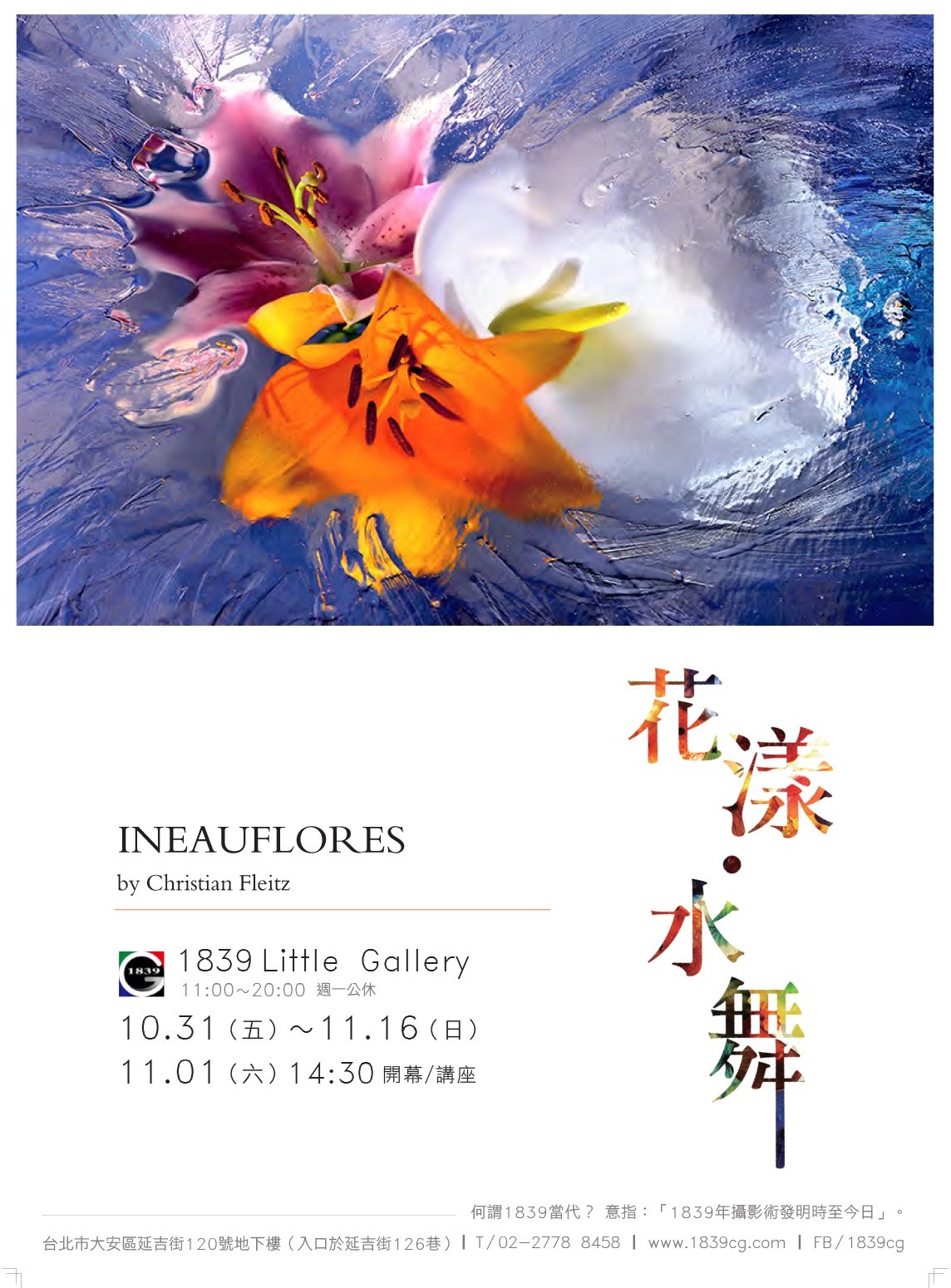
2017
Après deux ans de retrait pour travailler, retour en expo avec la ville d'Amboise.
Autres publications:
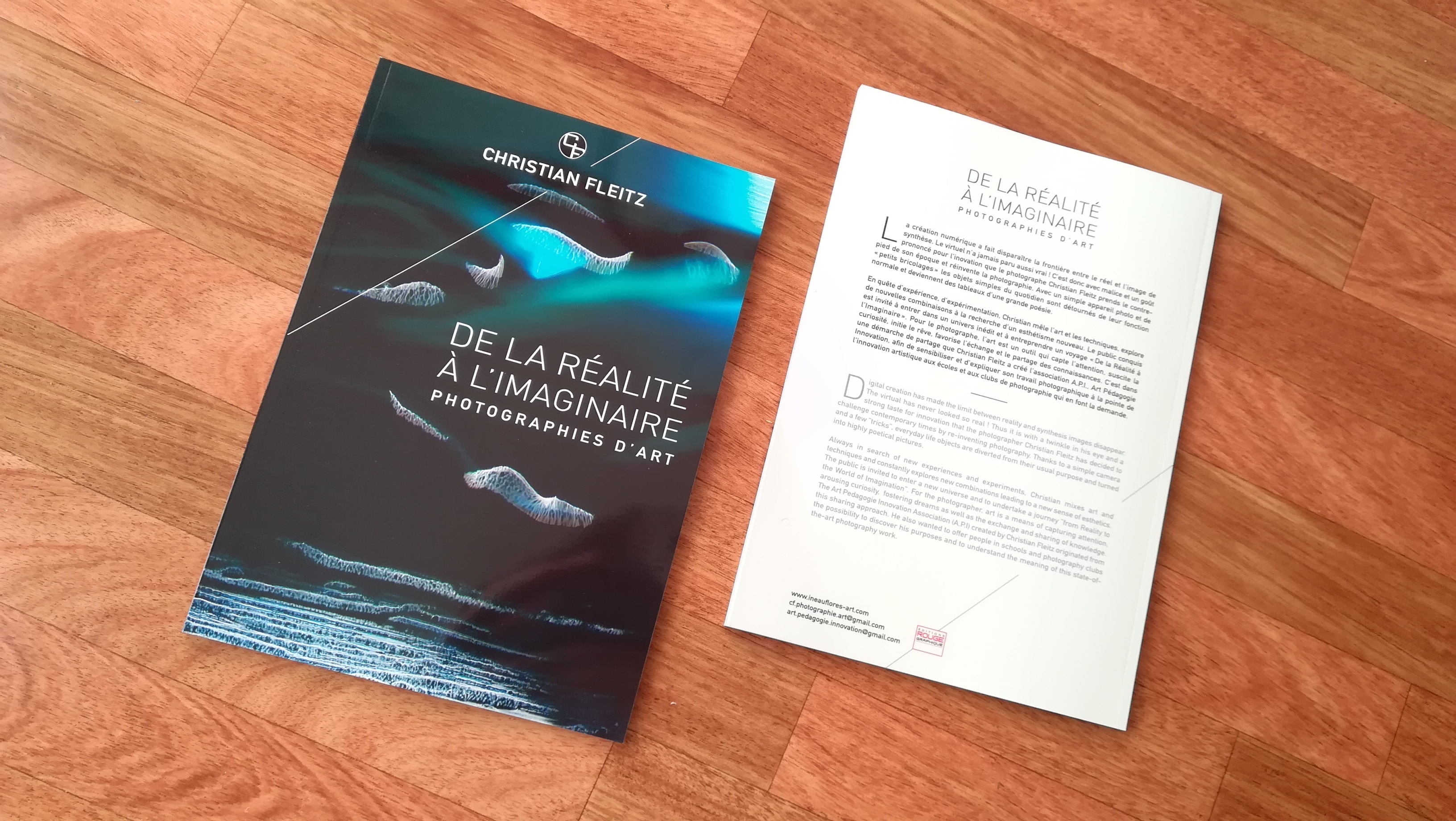
.png)
contact:
.png)
ou
cf.photographie.art@gmail.com
06 31 79 21 71
tel: +33 6 31 79 21 71
.png)
.png)
